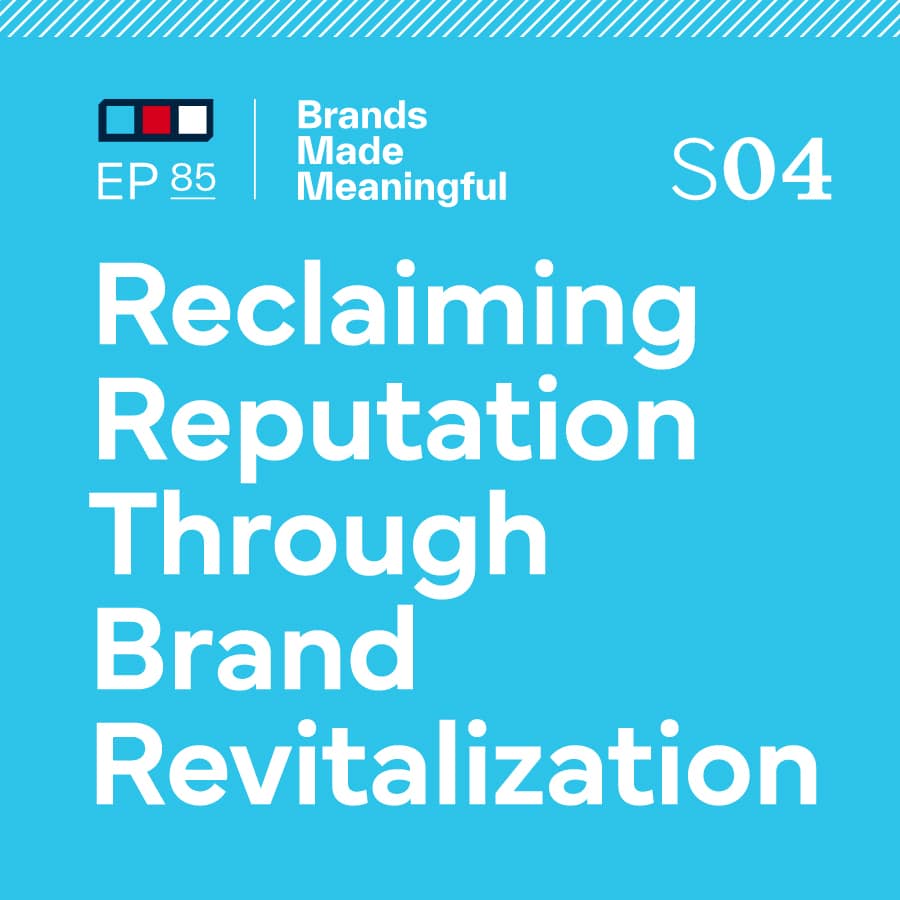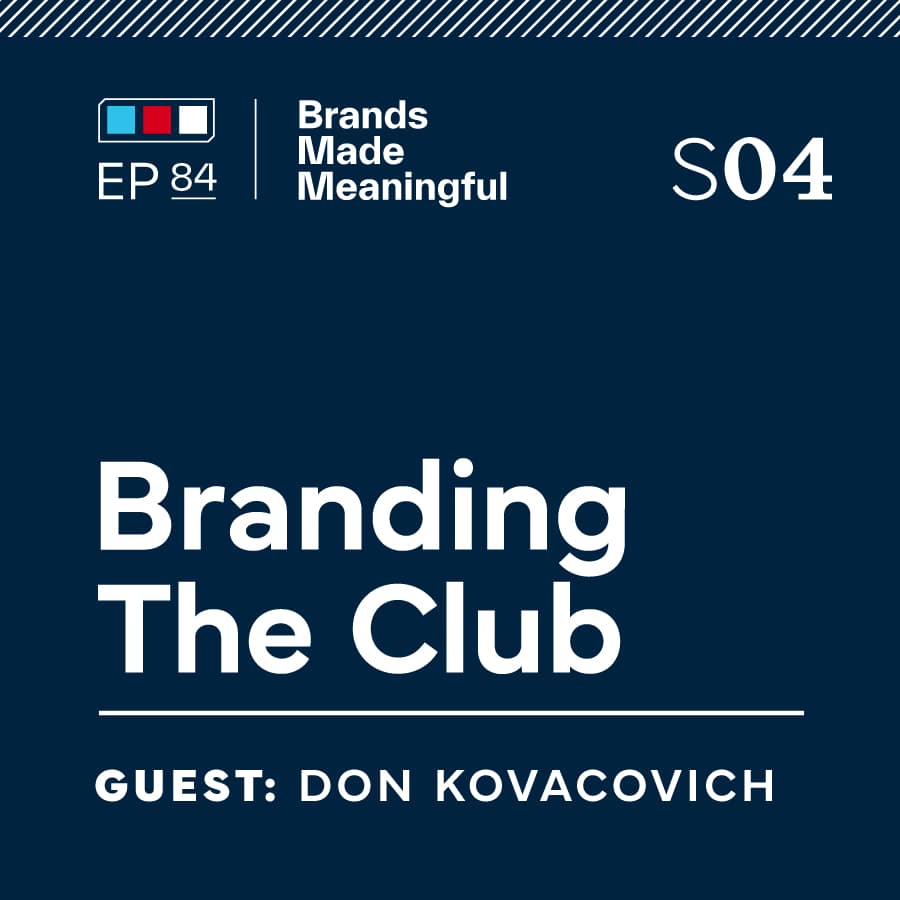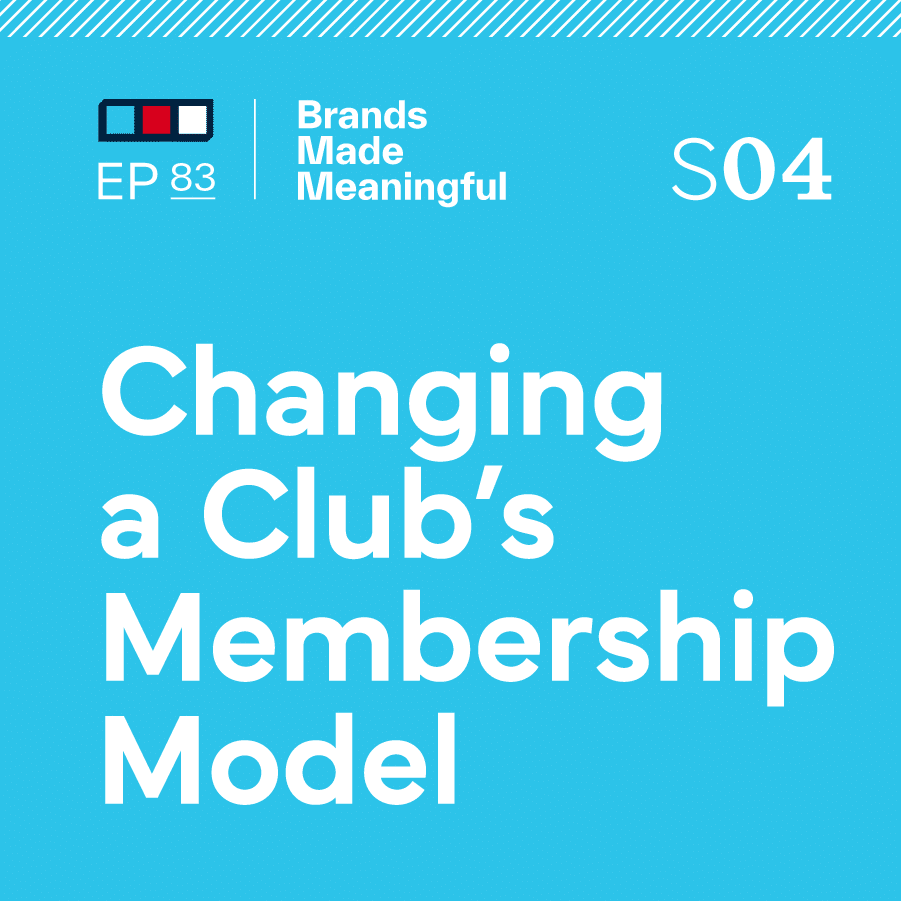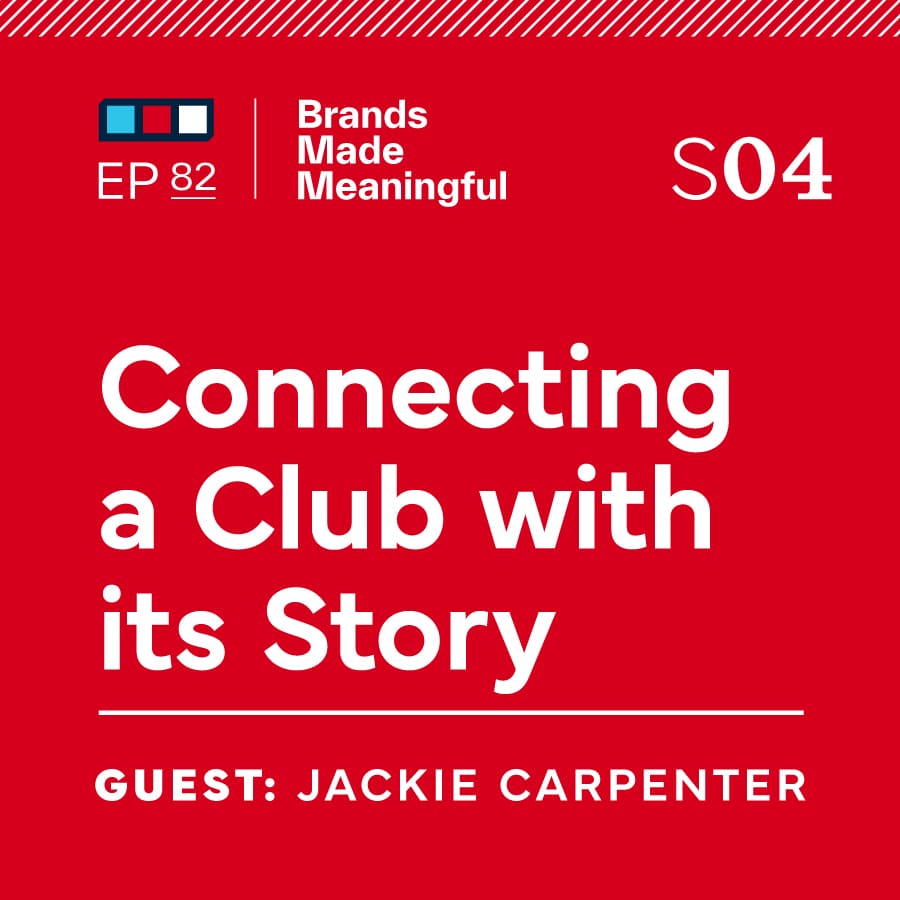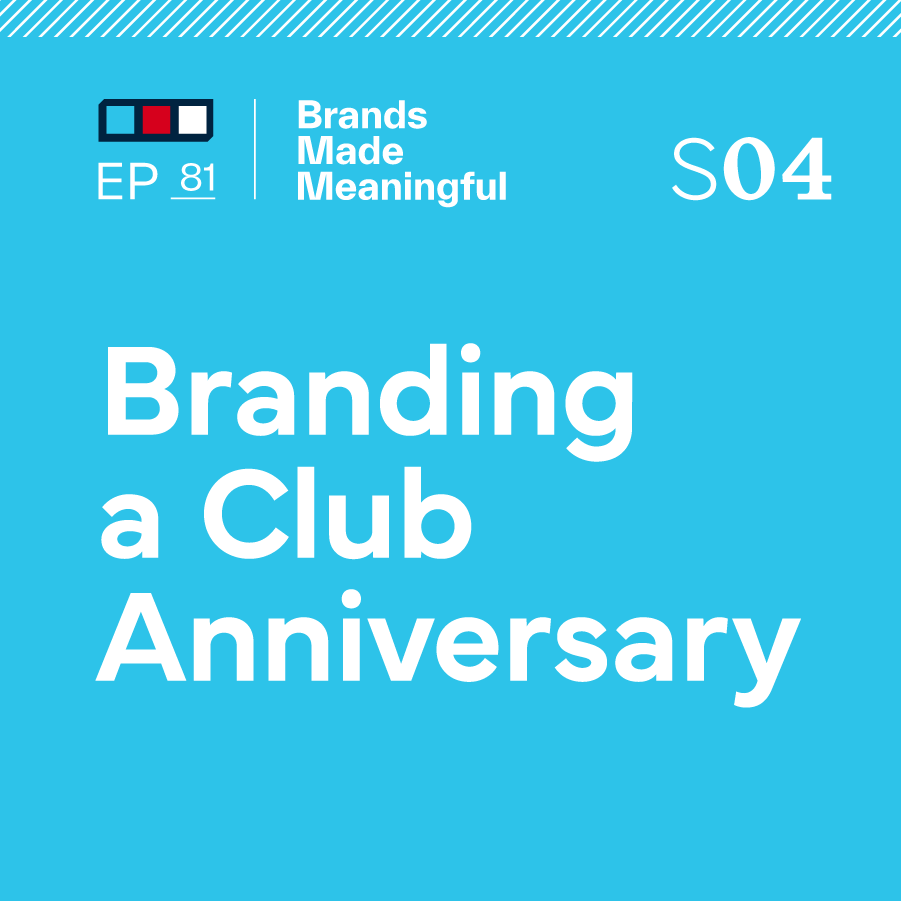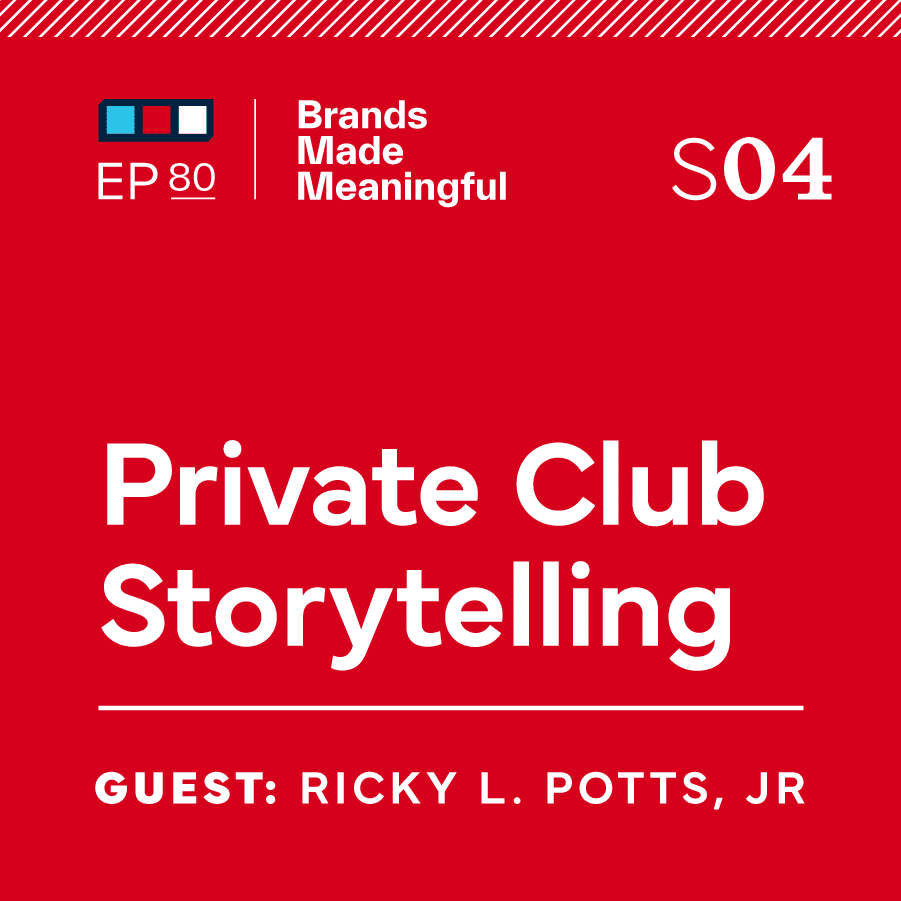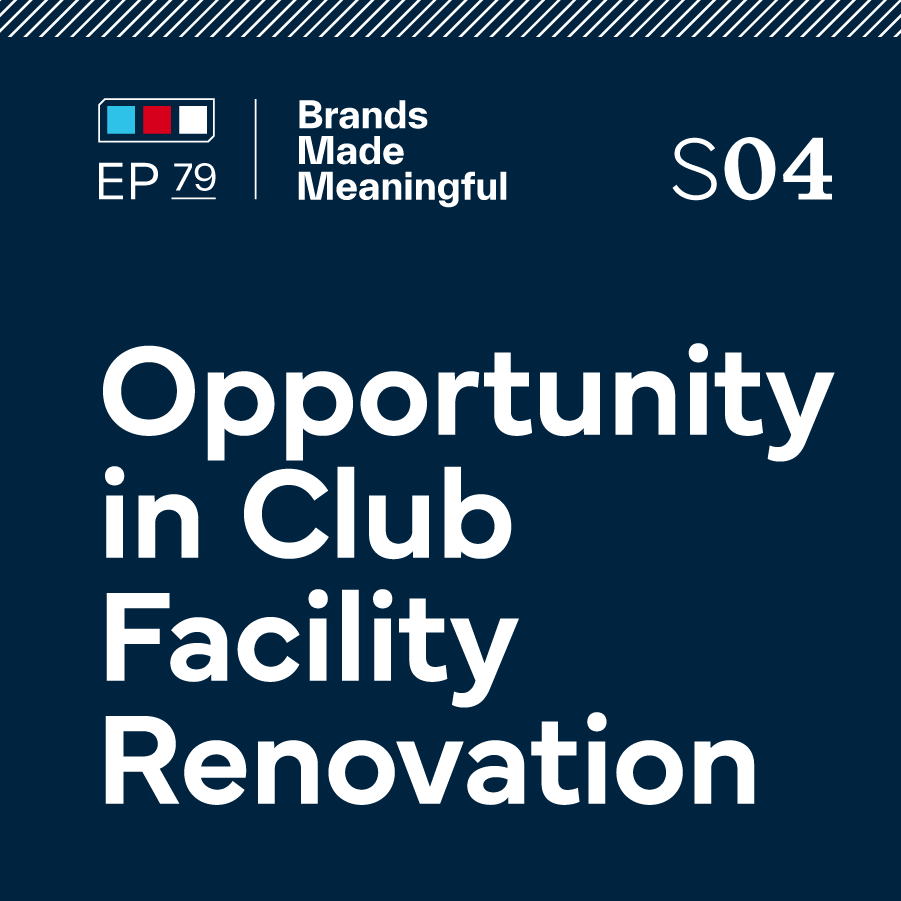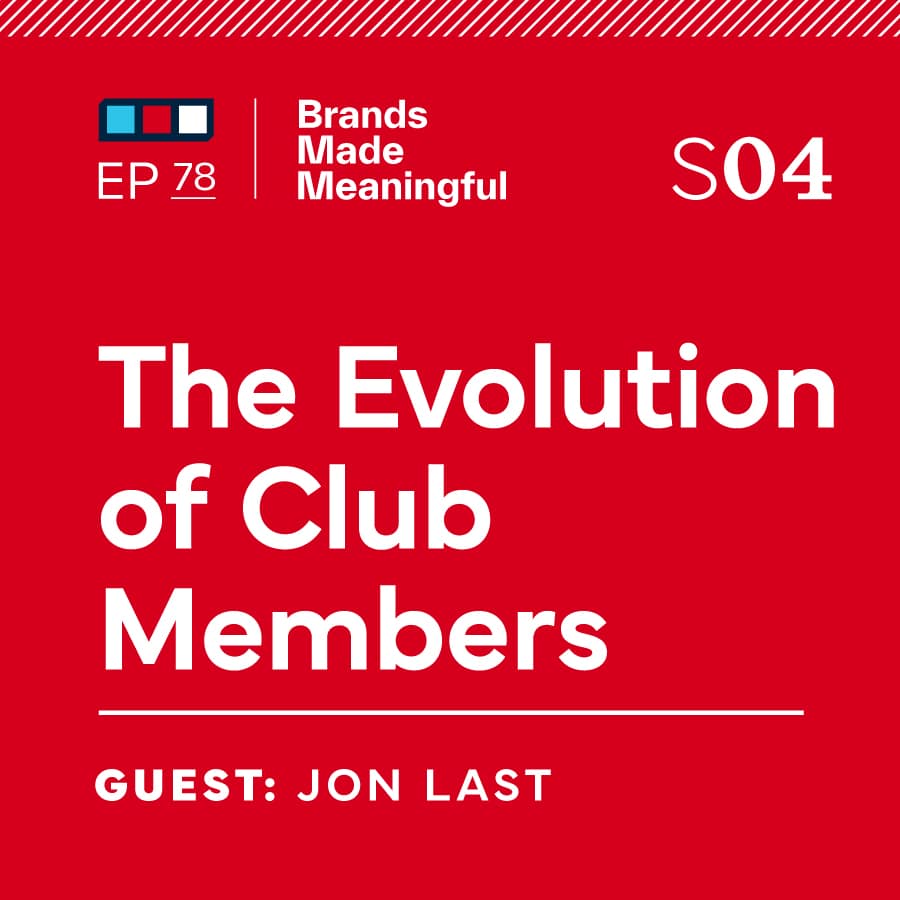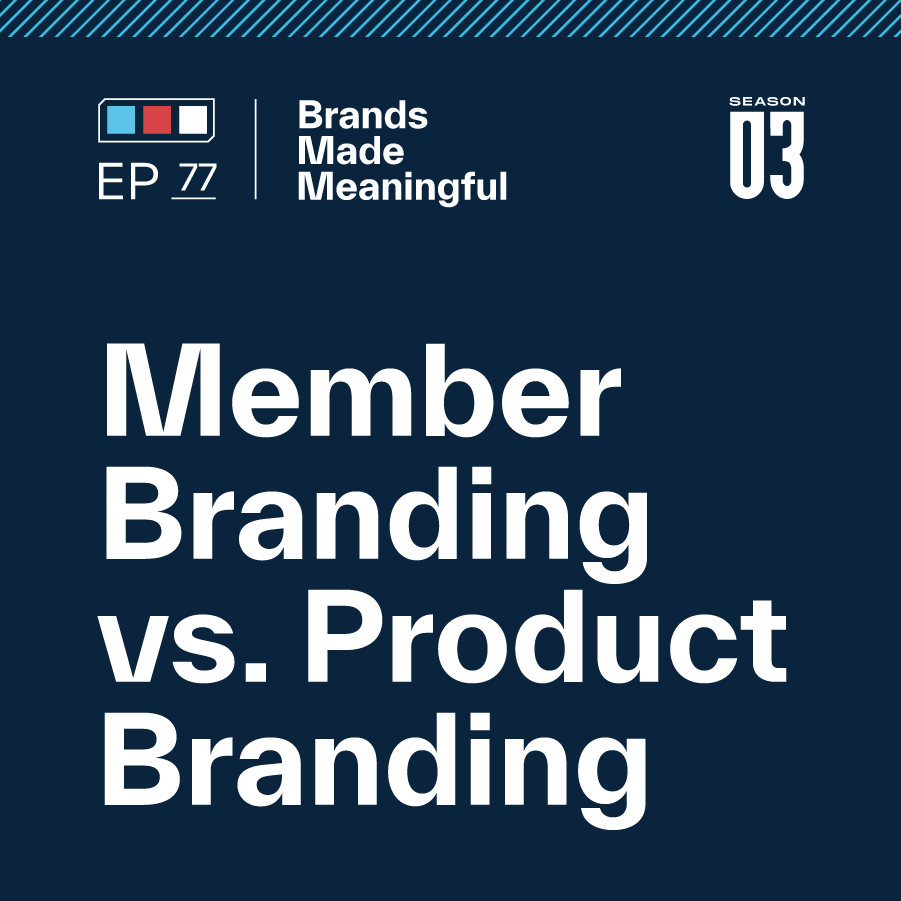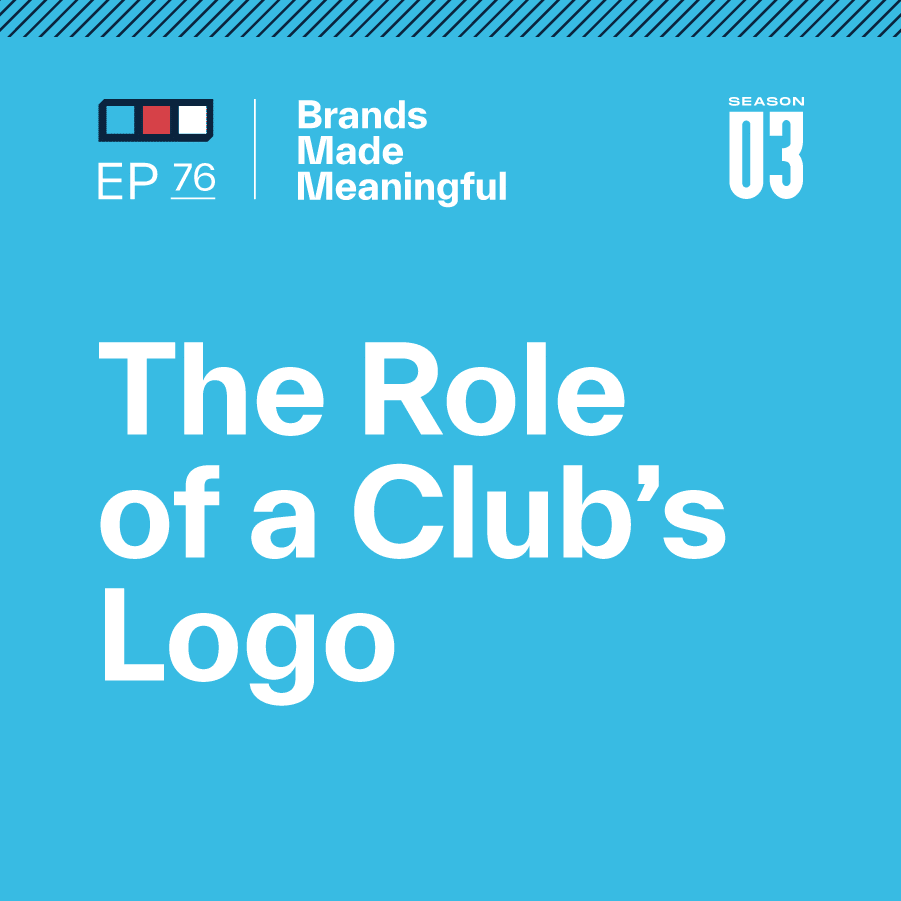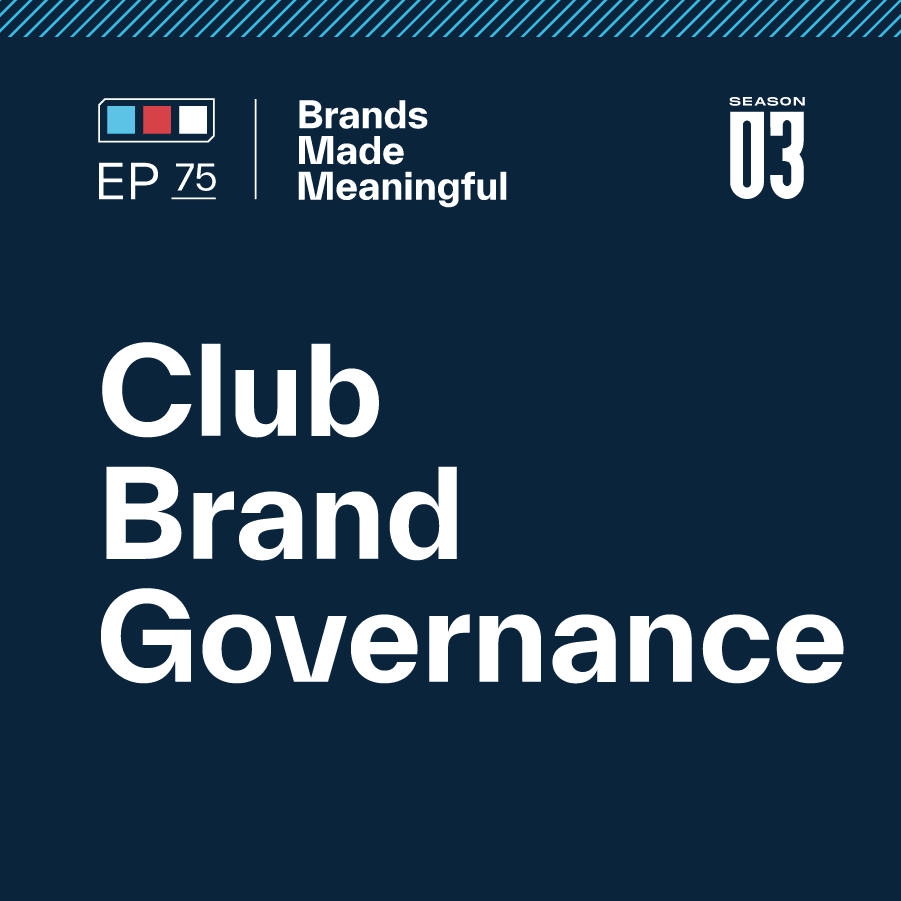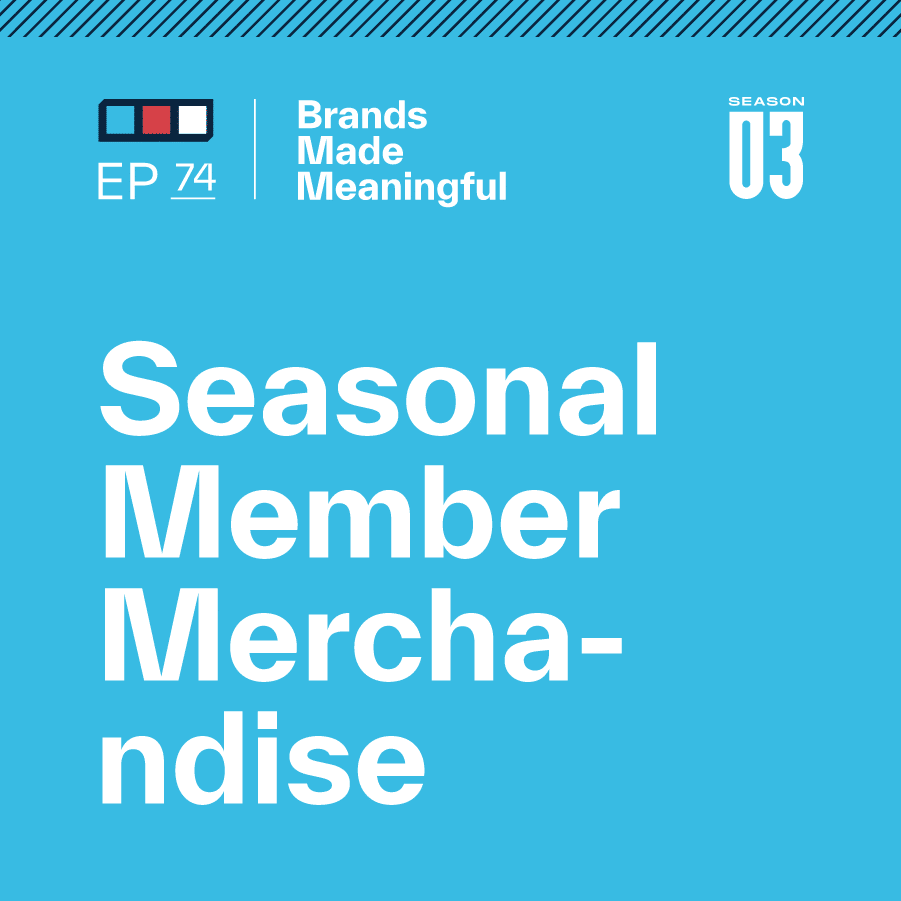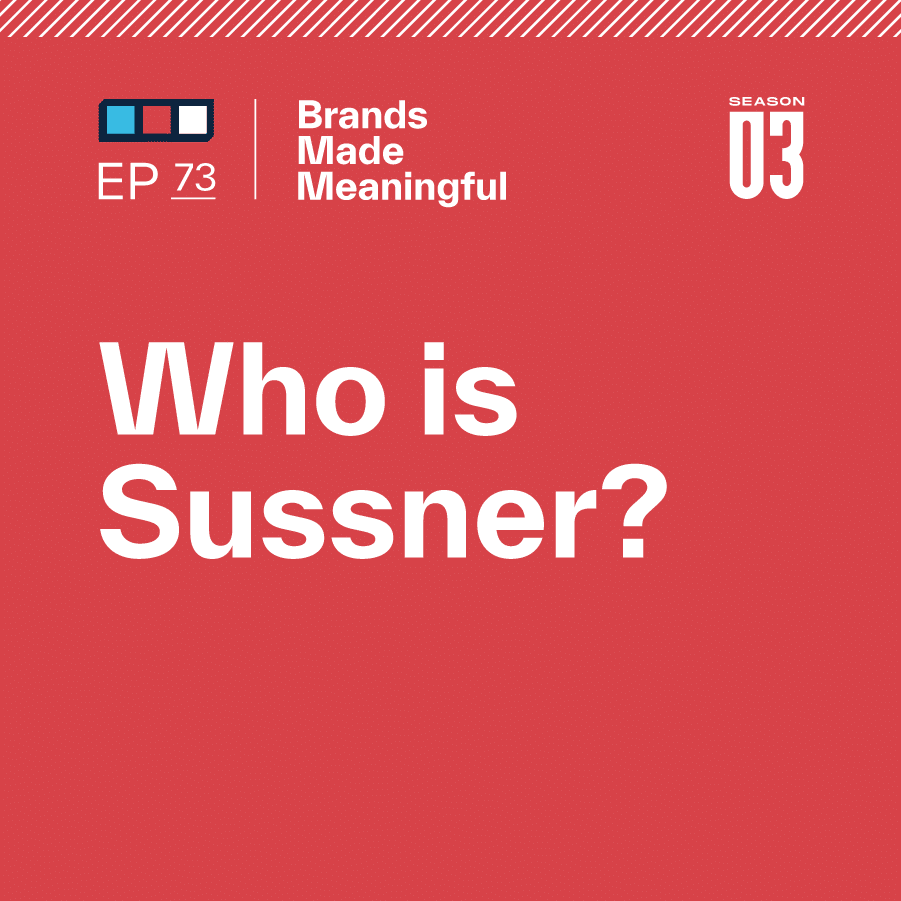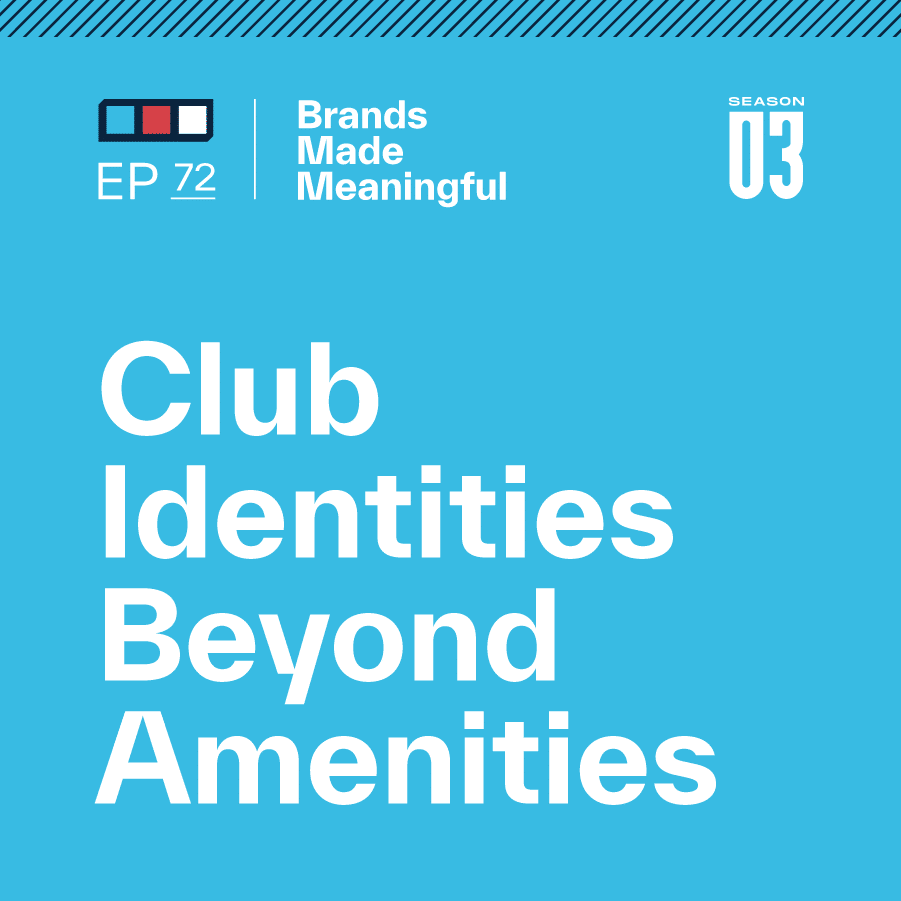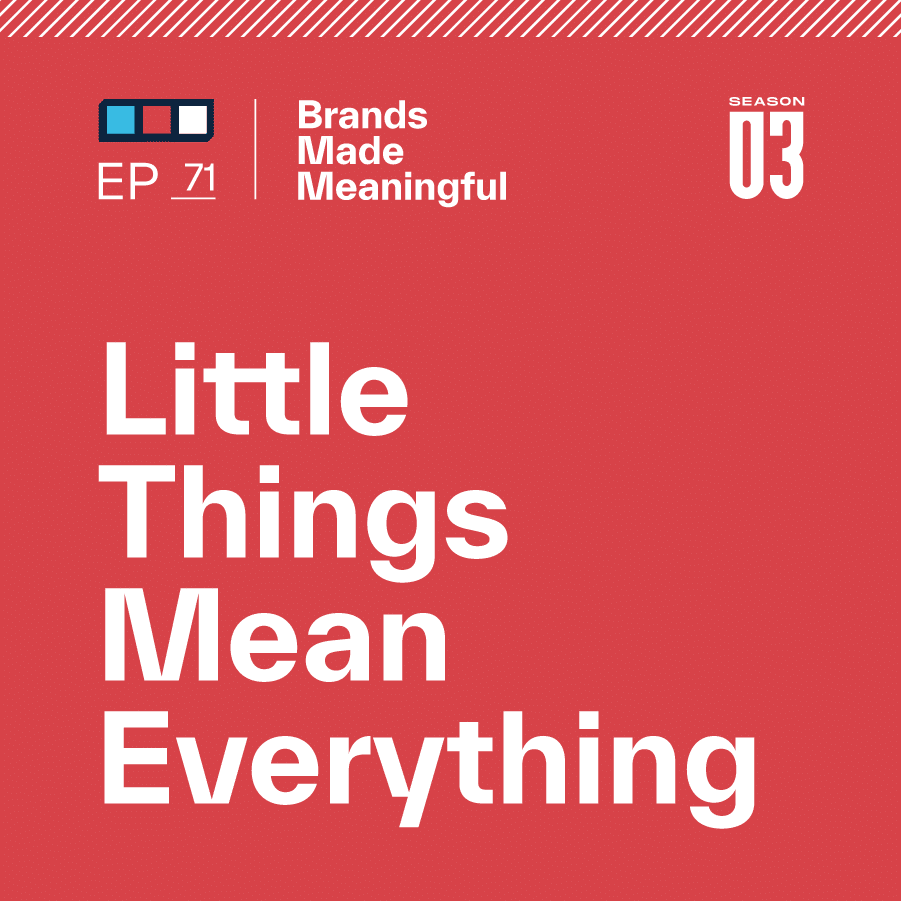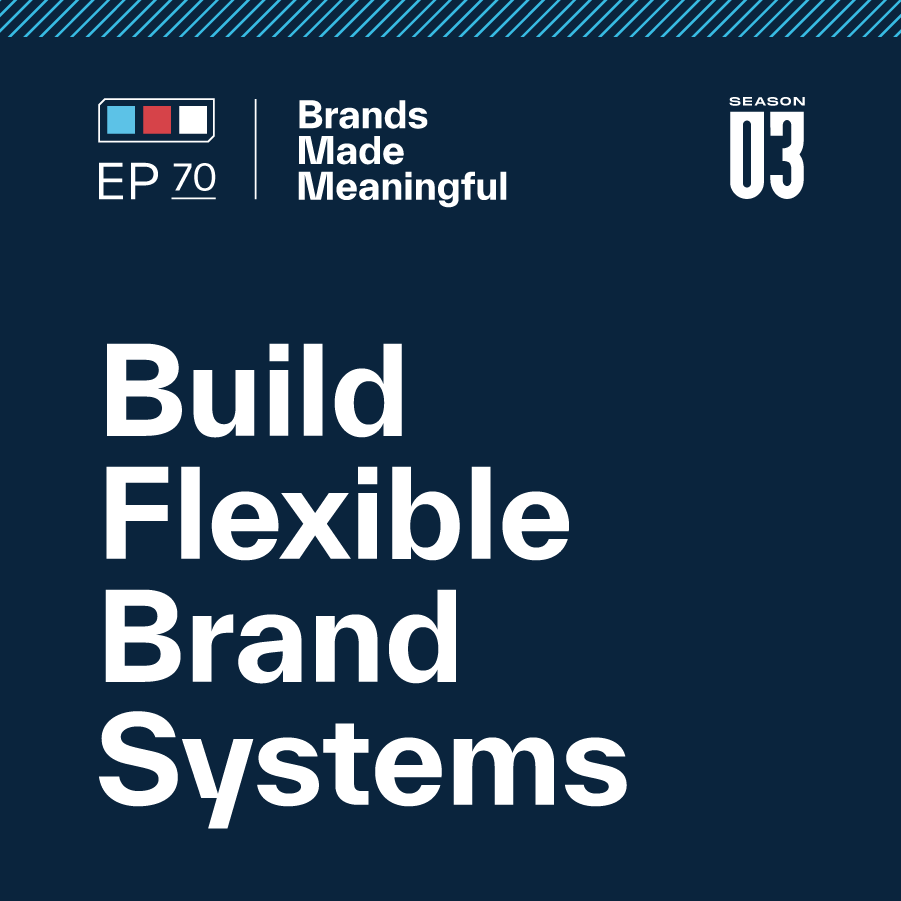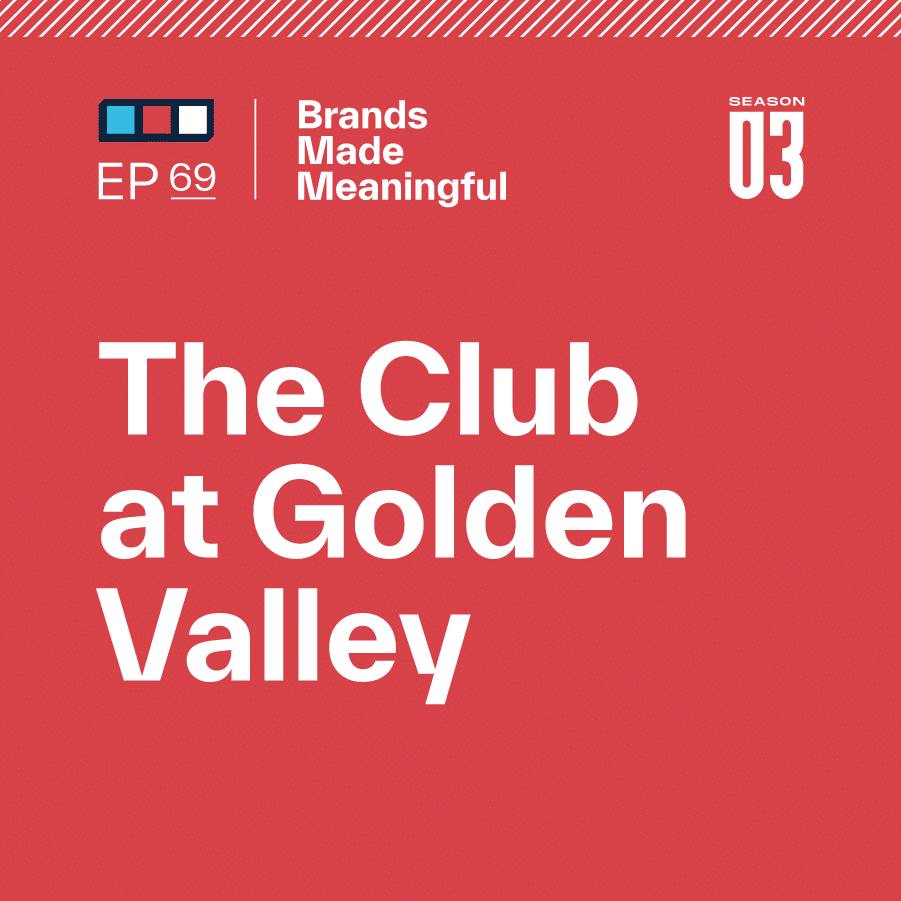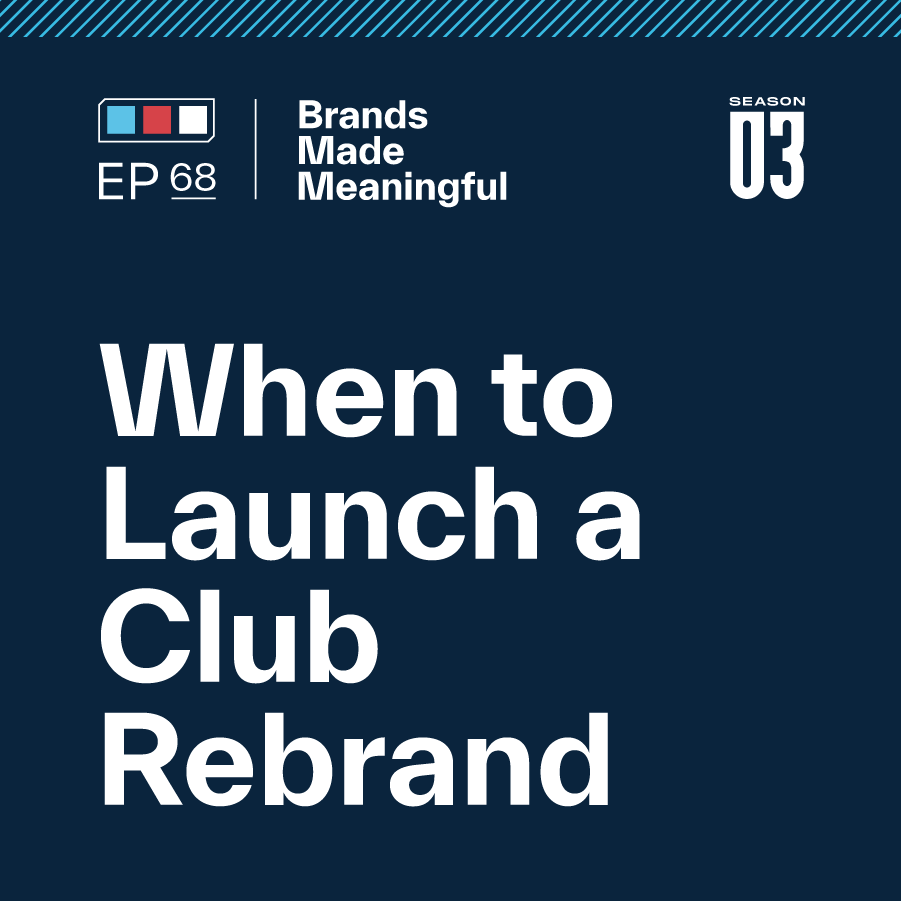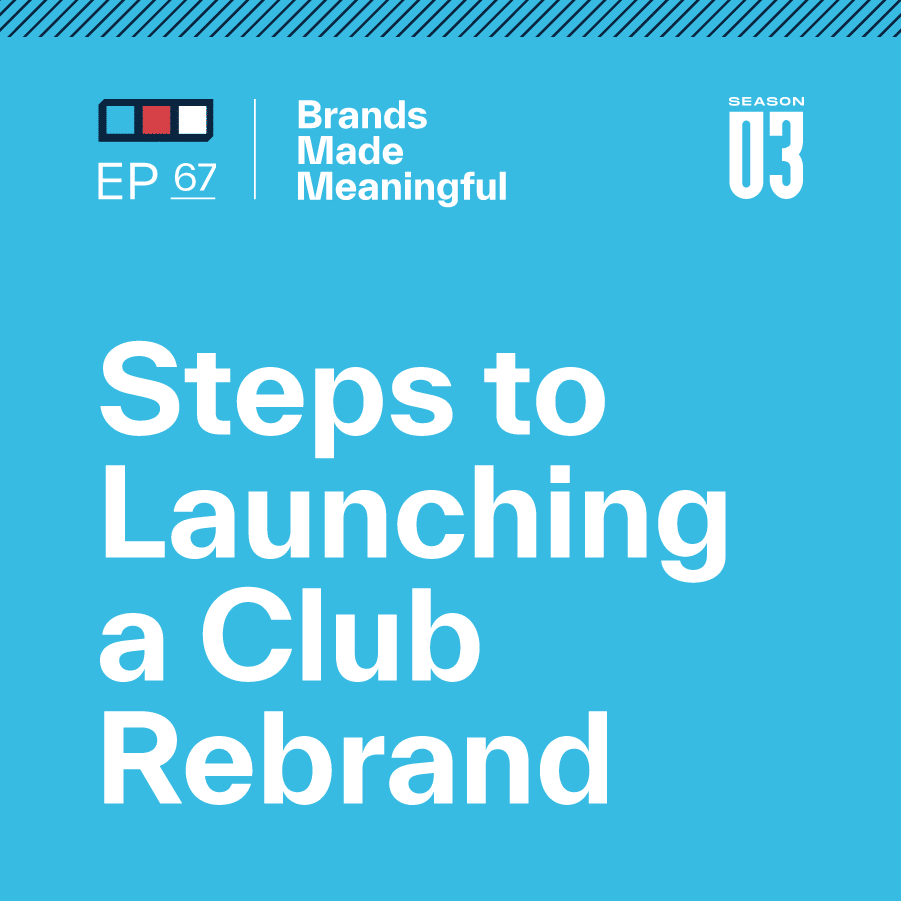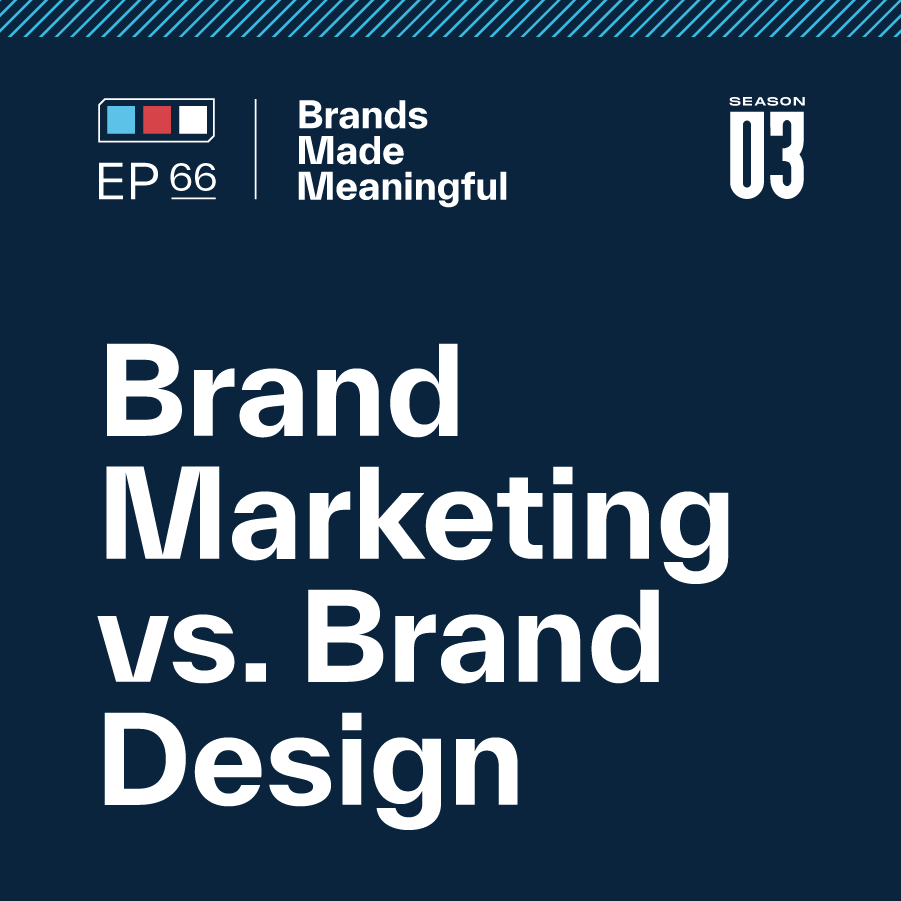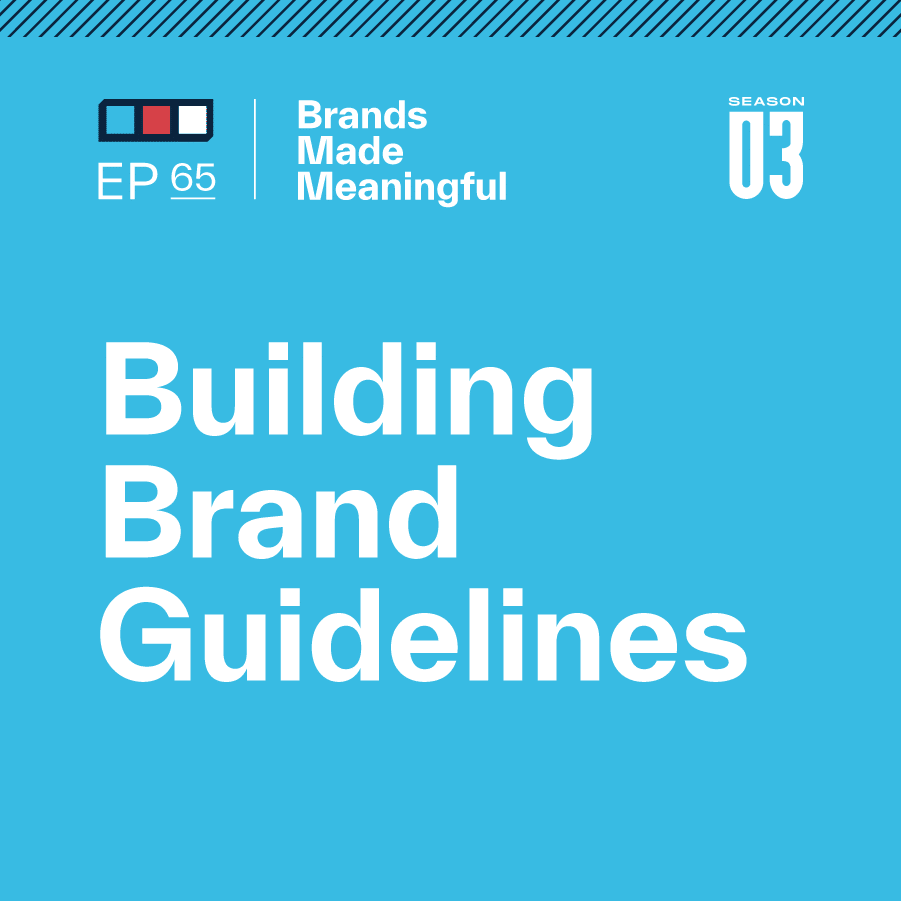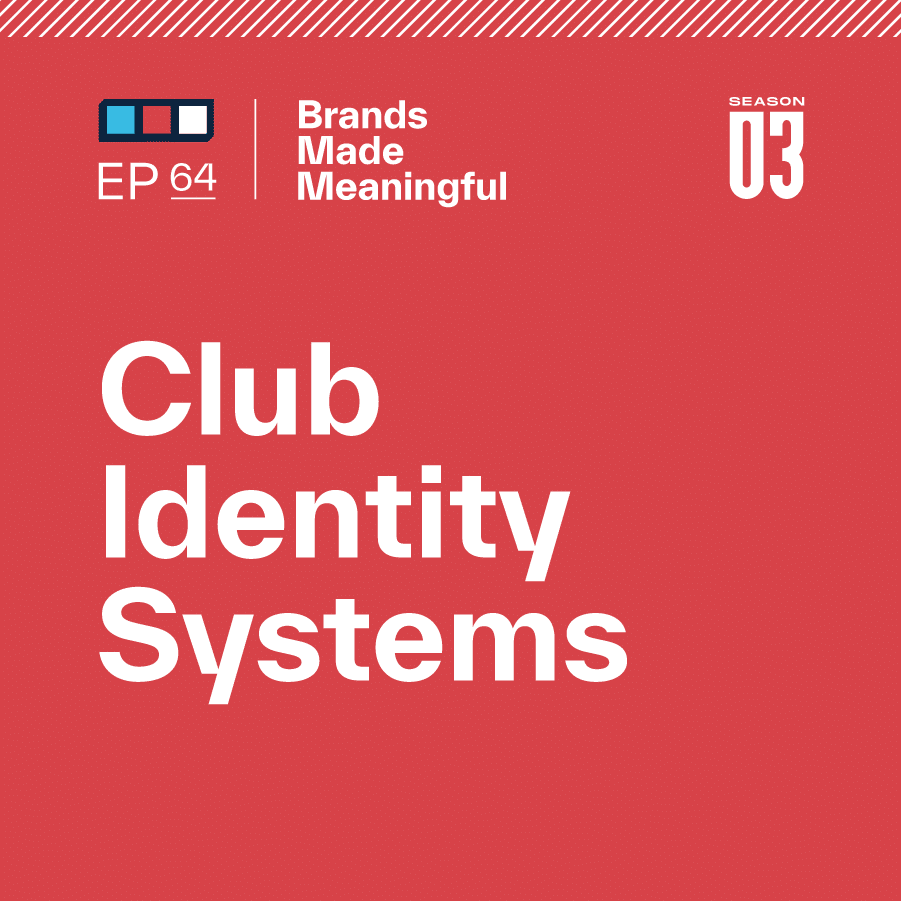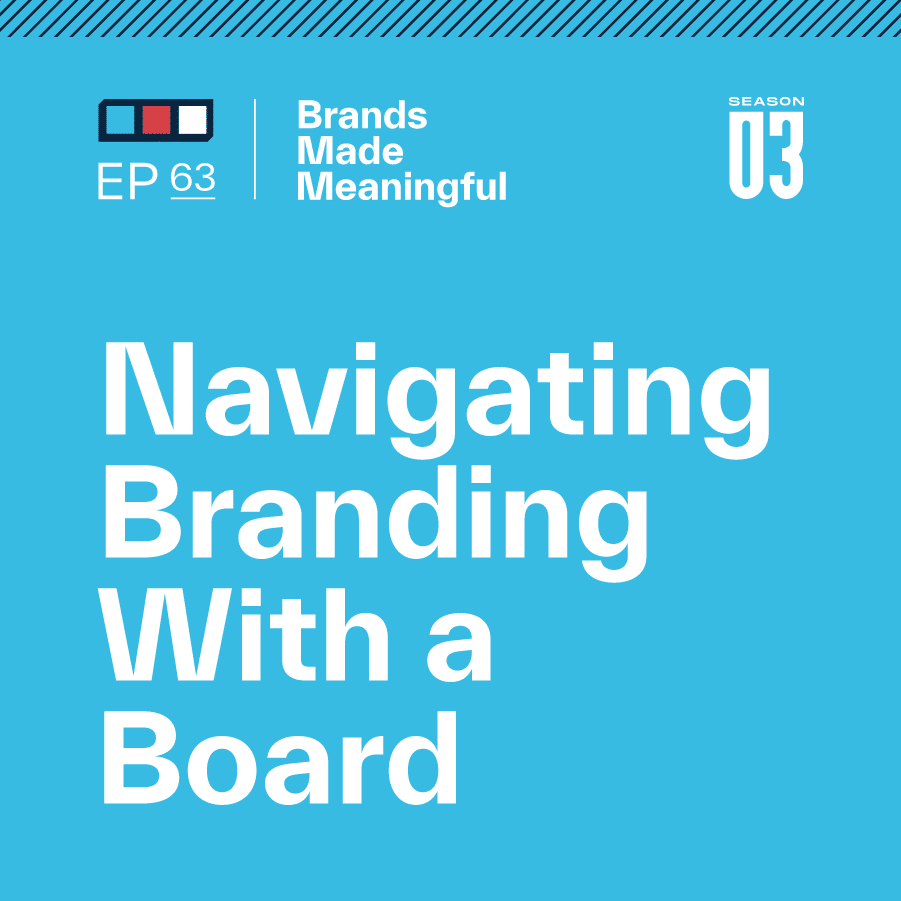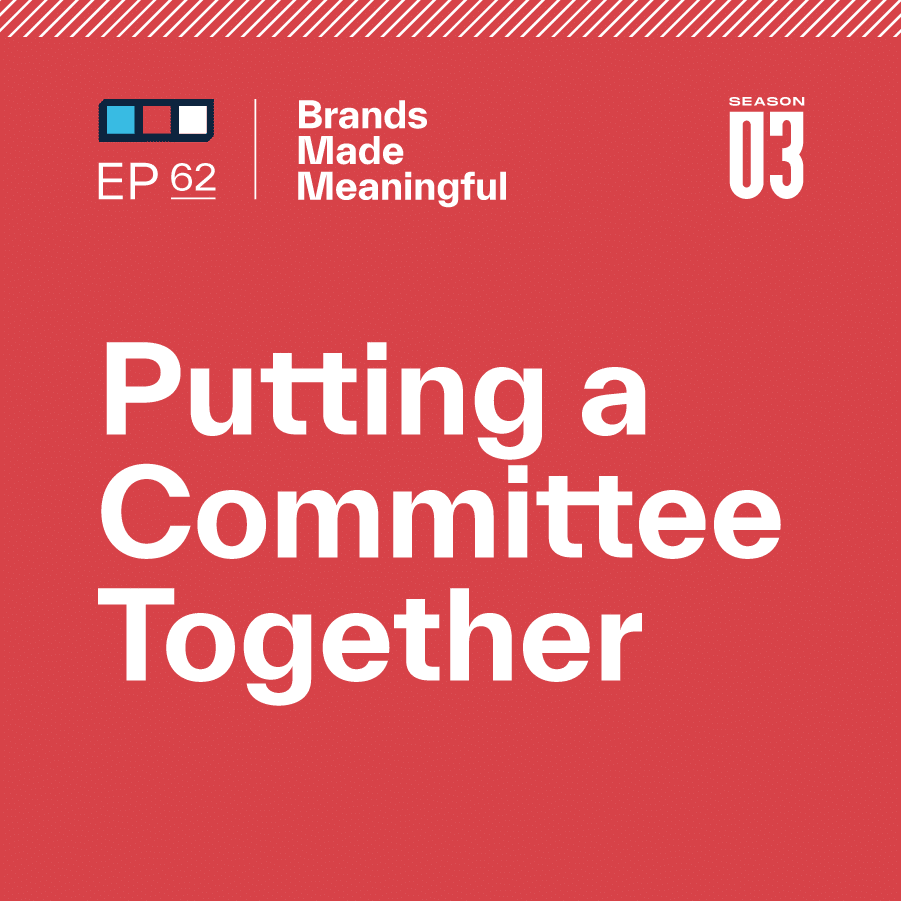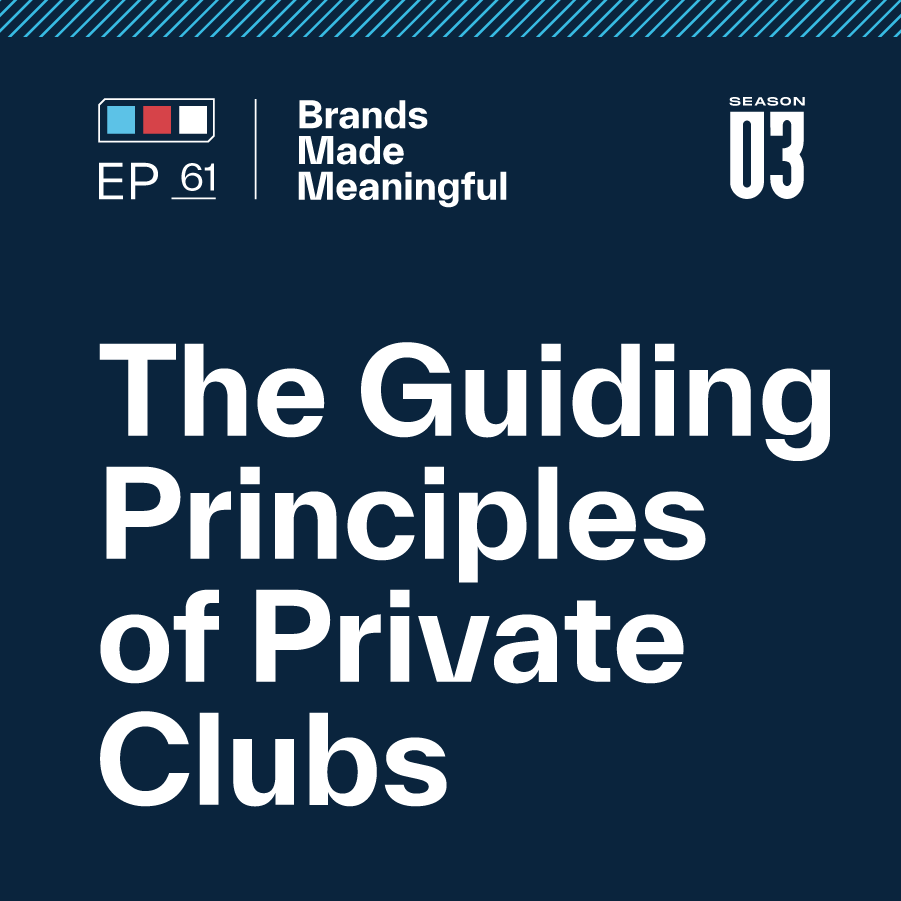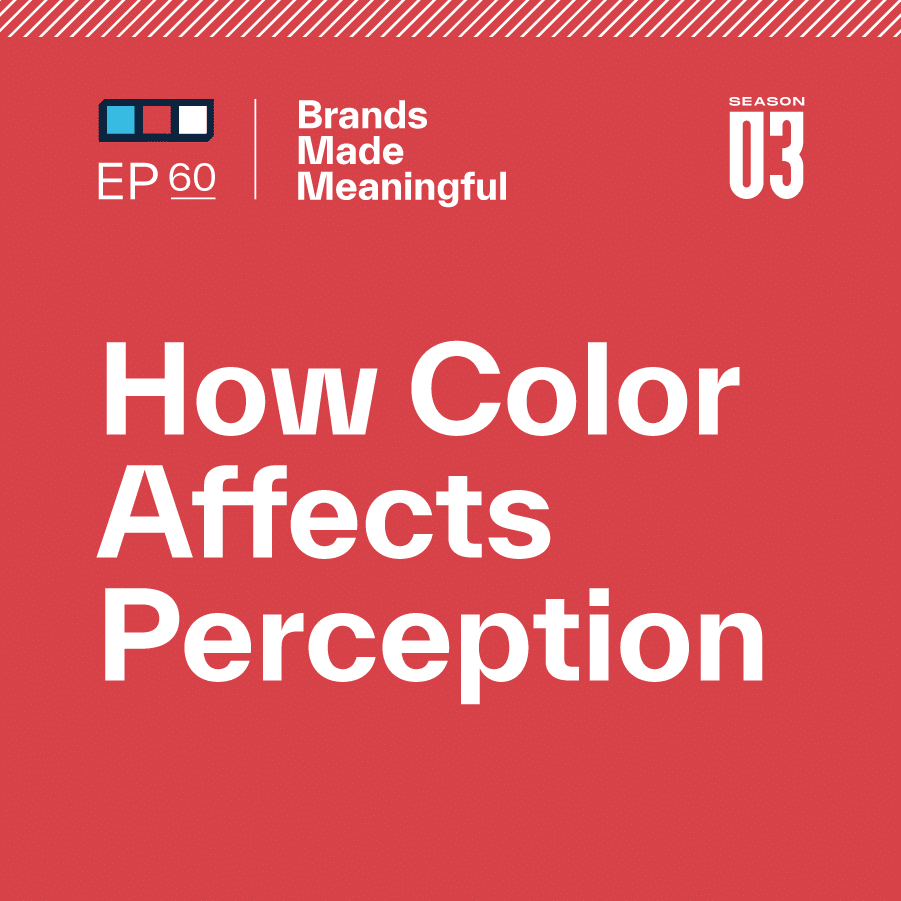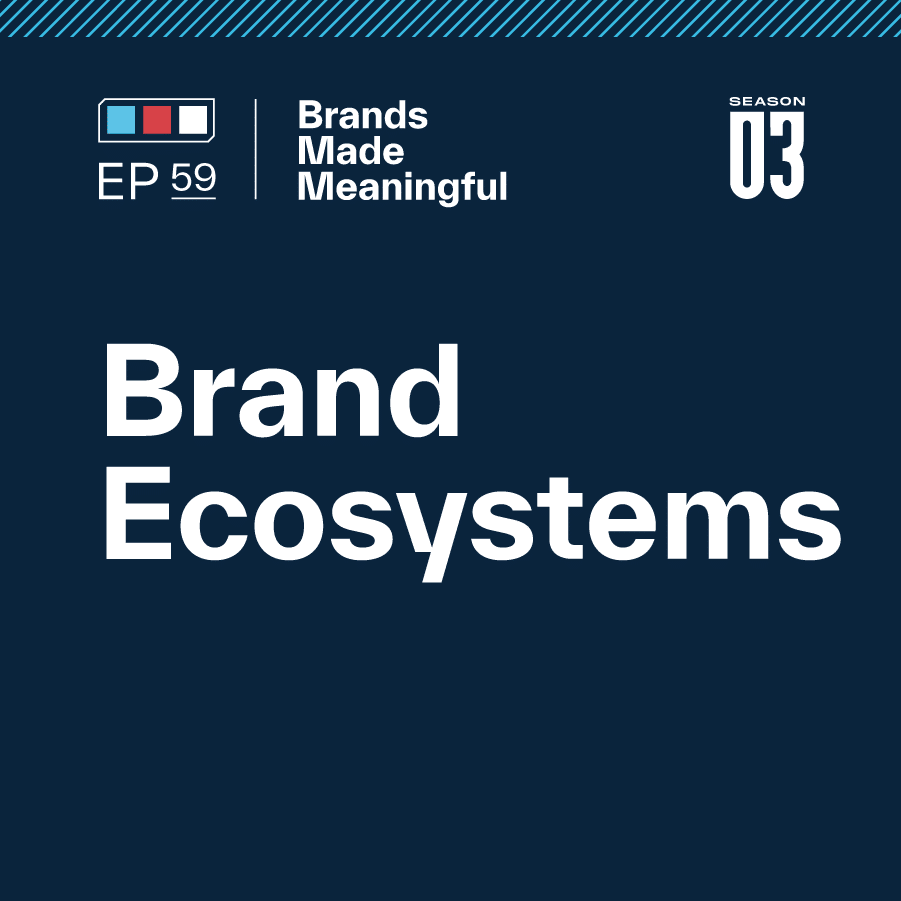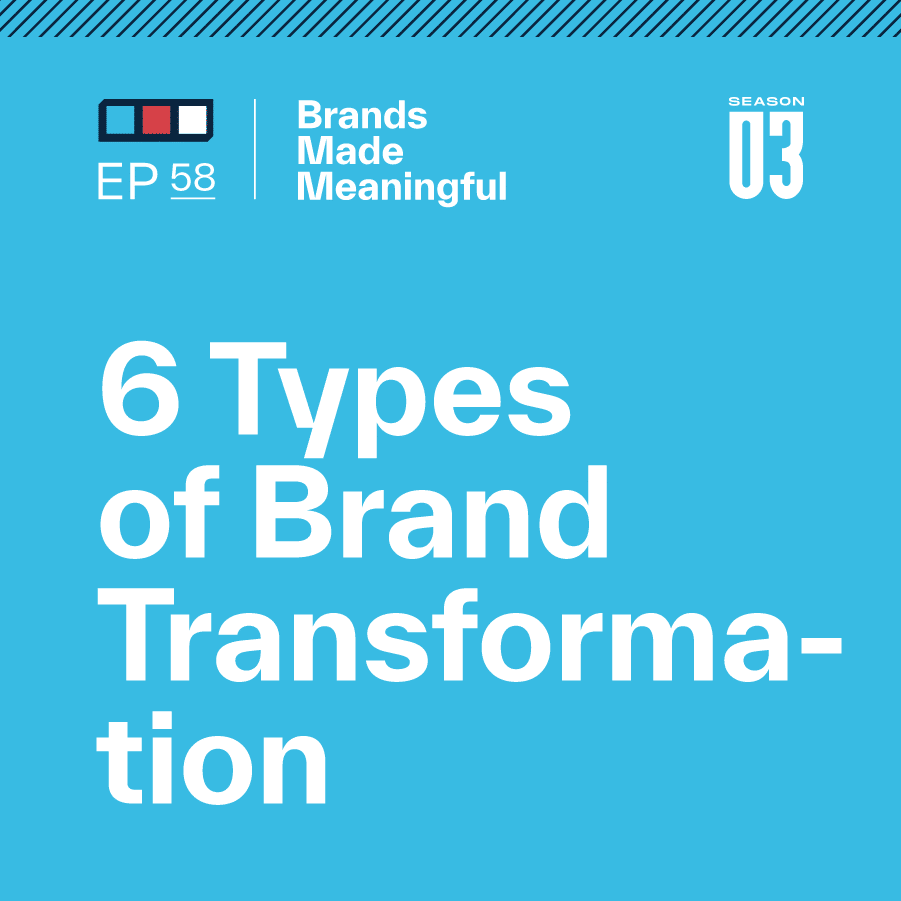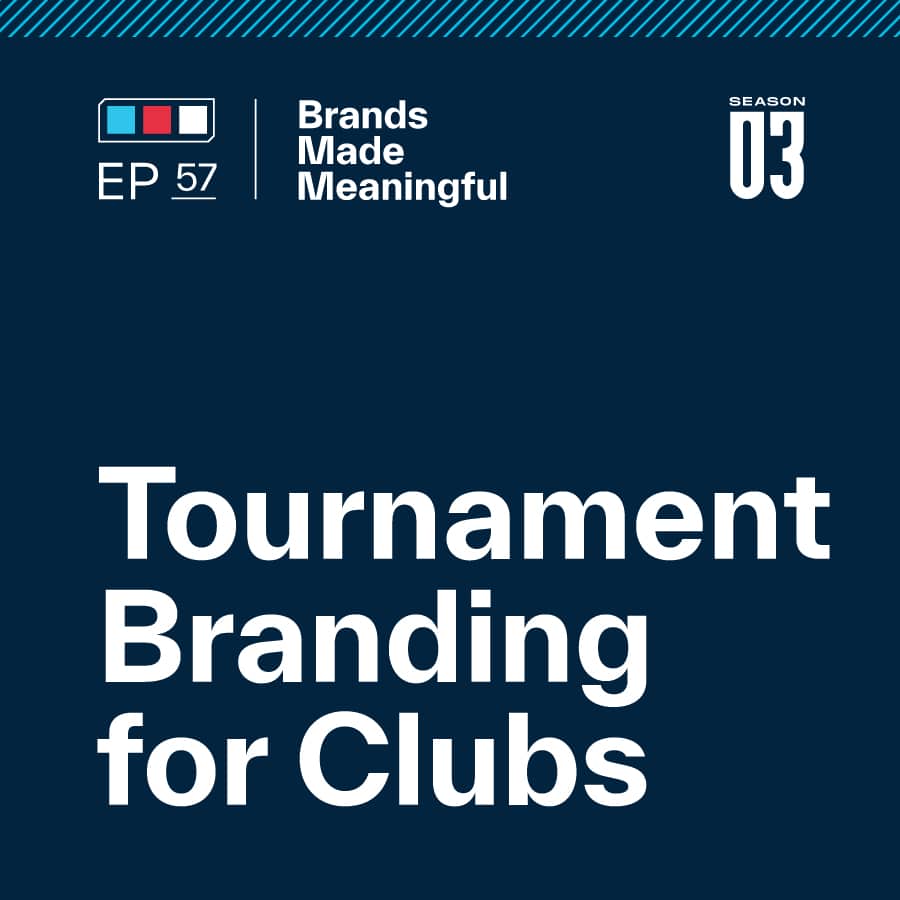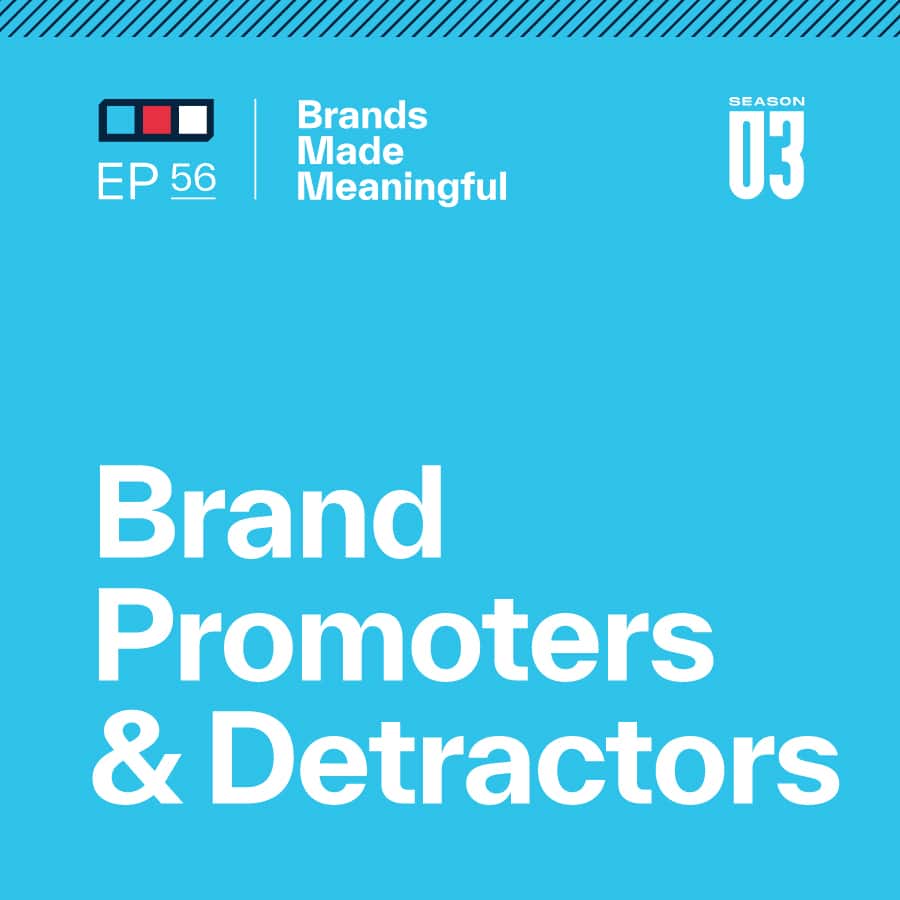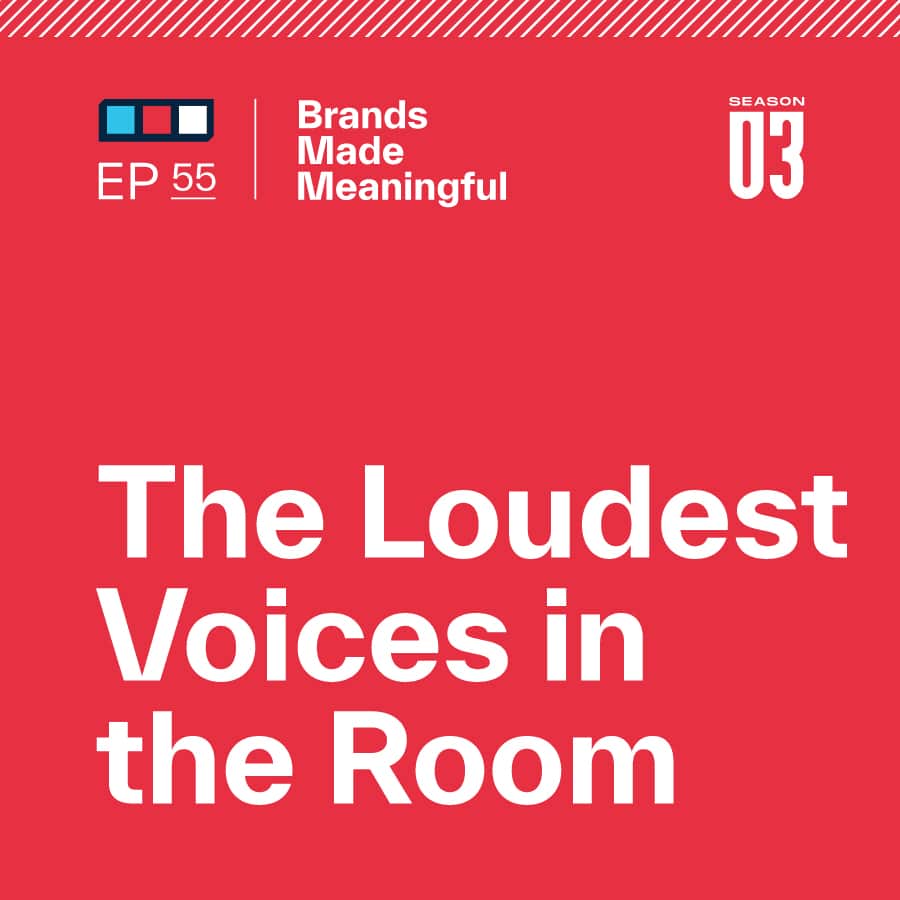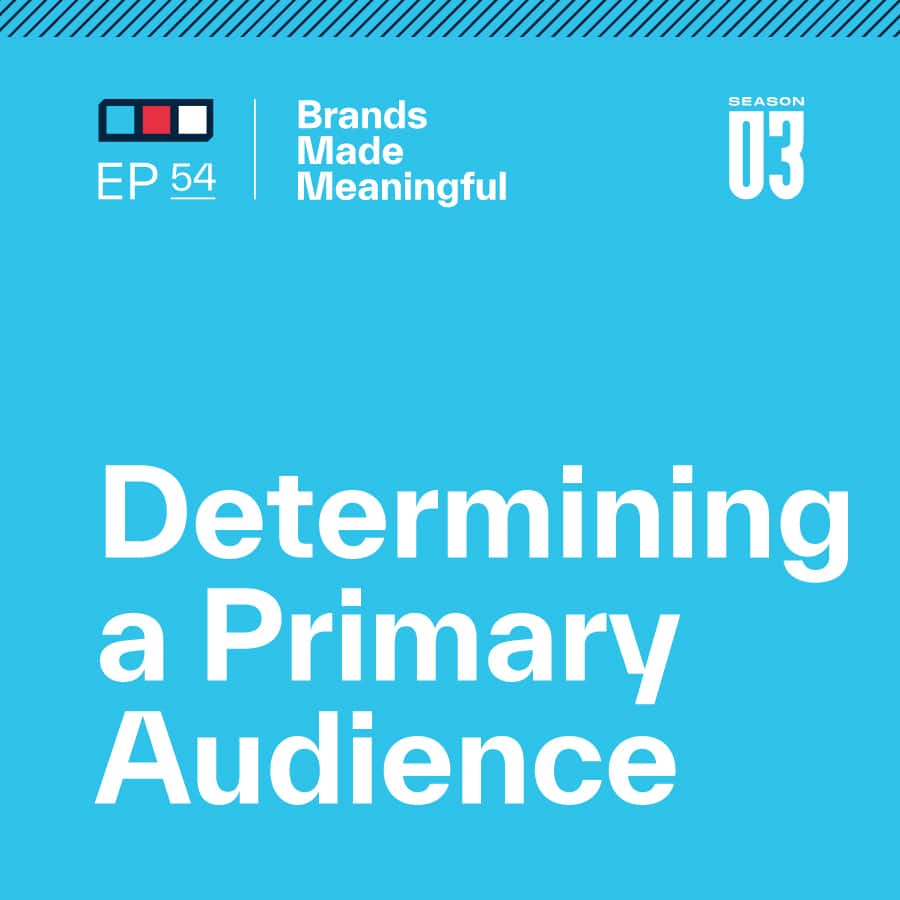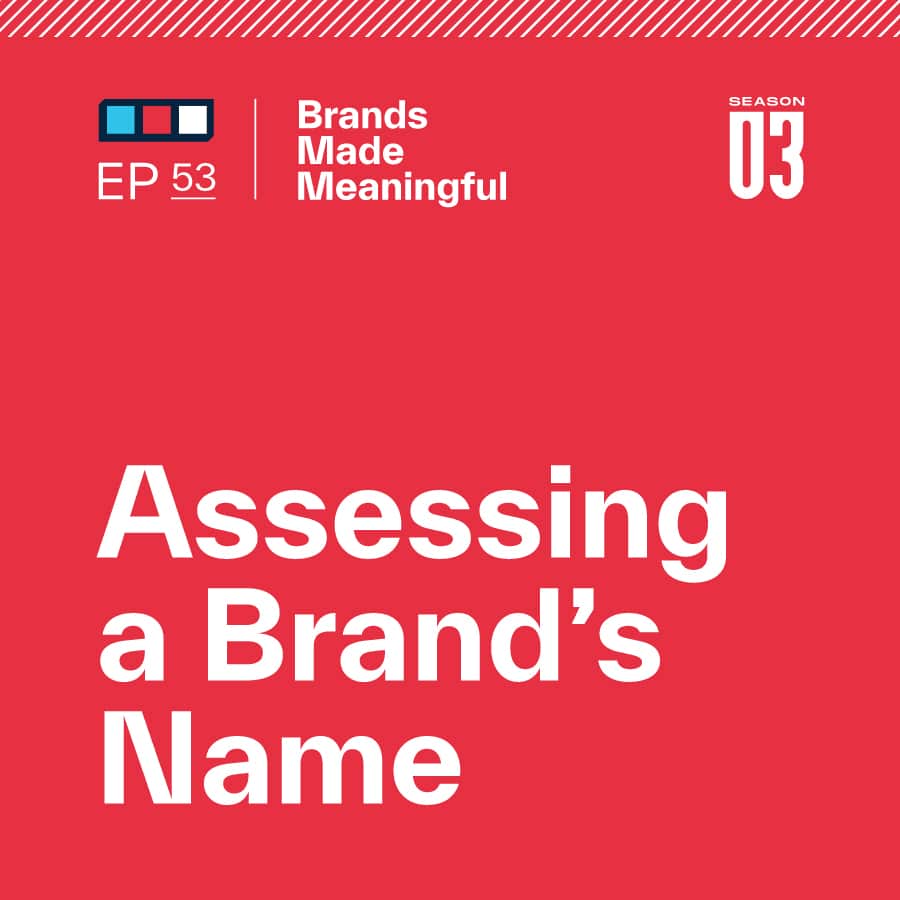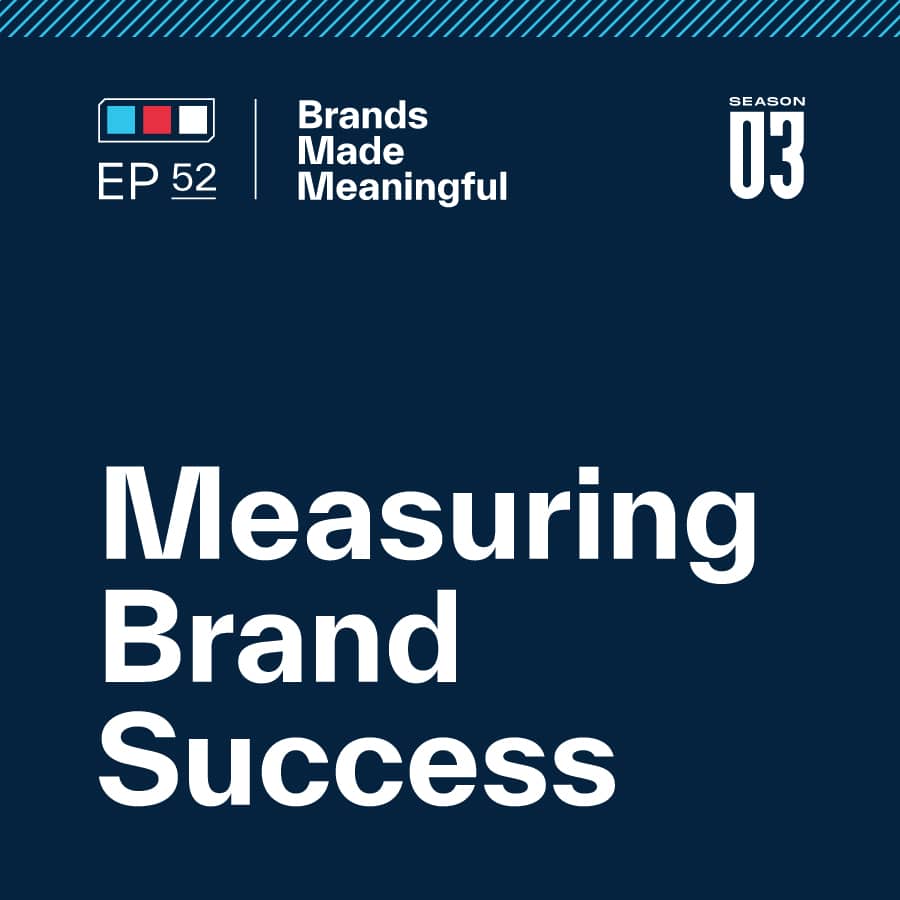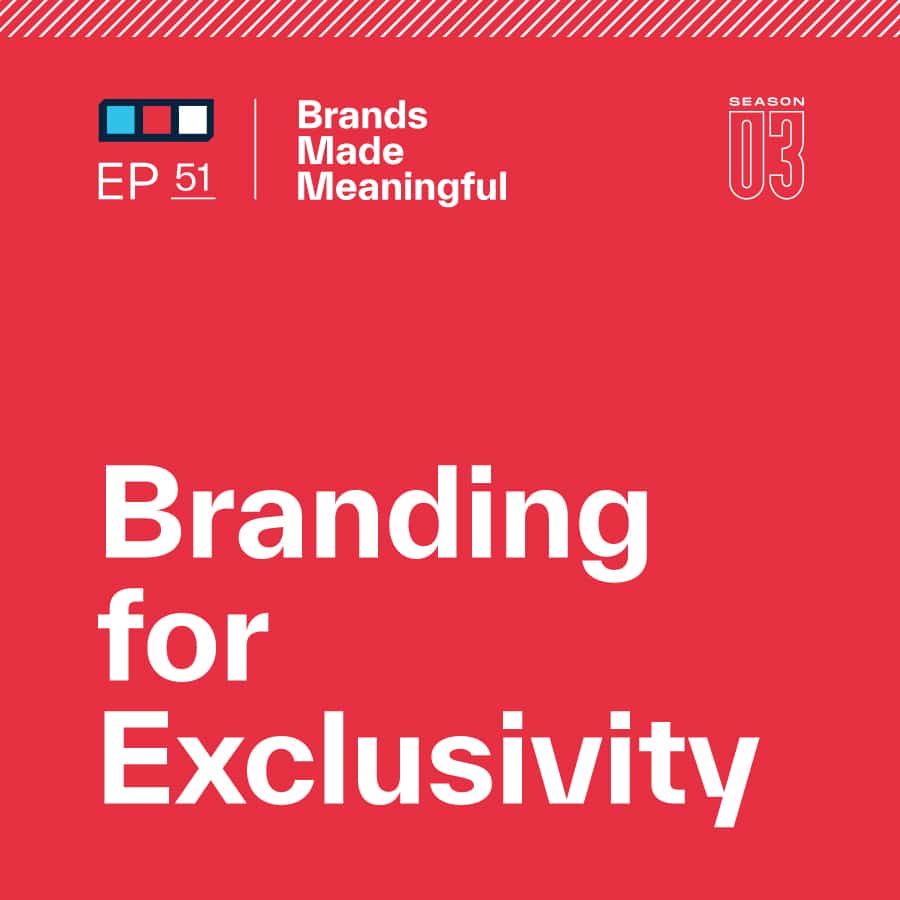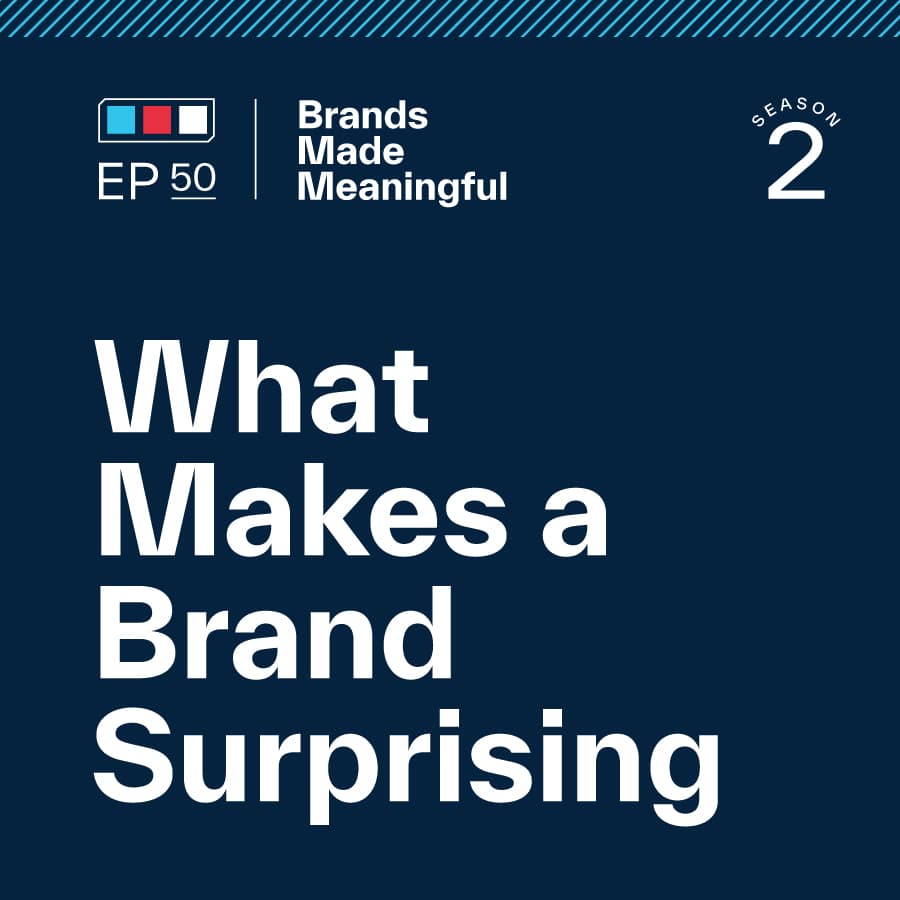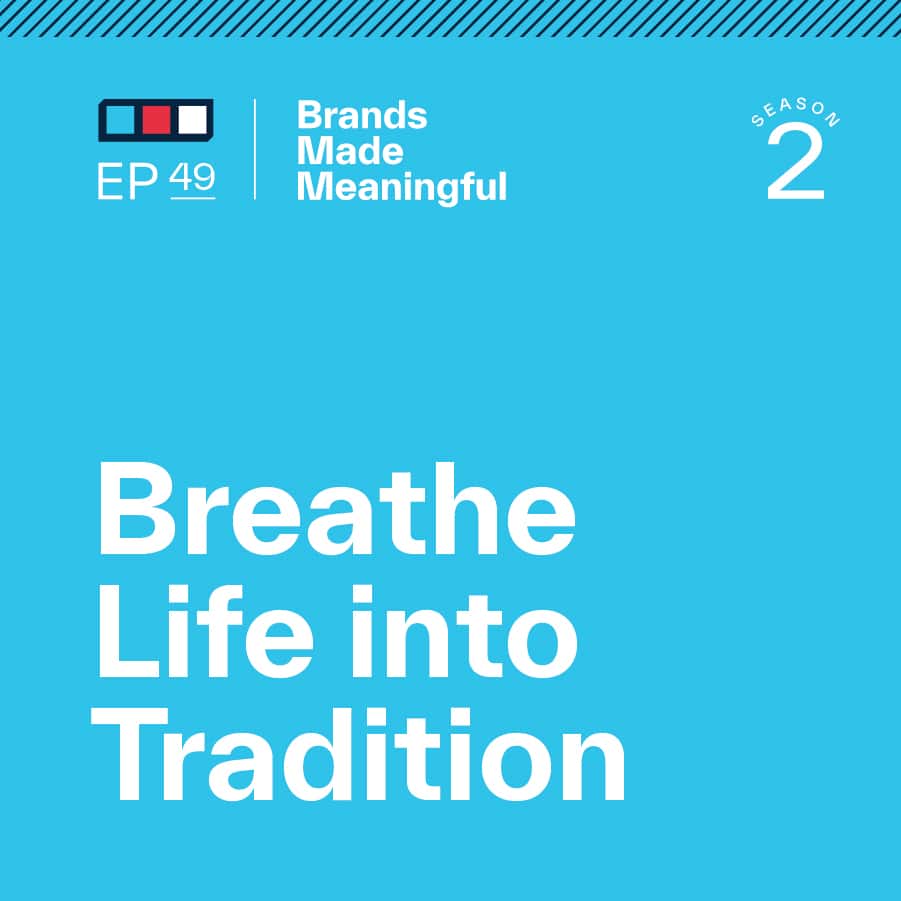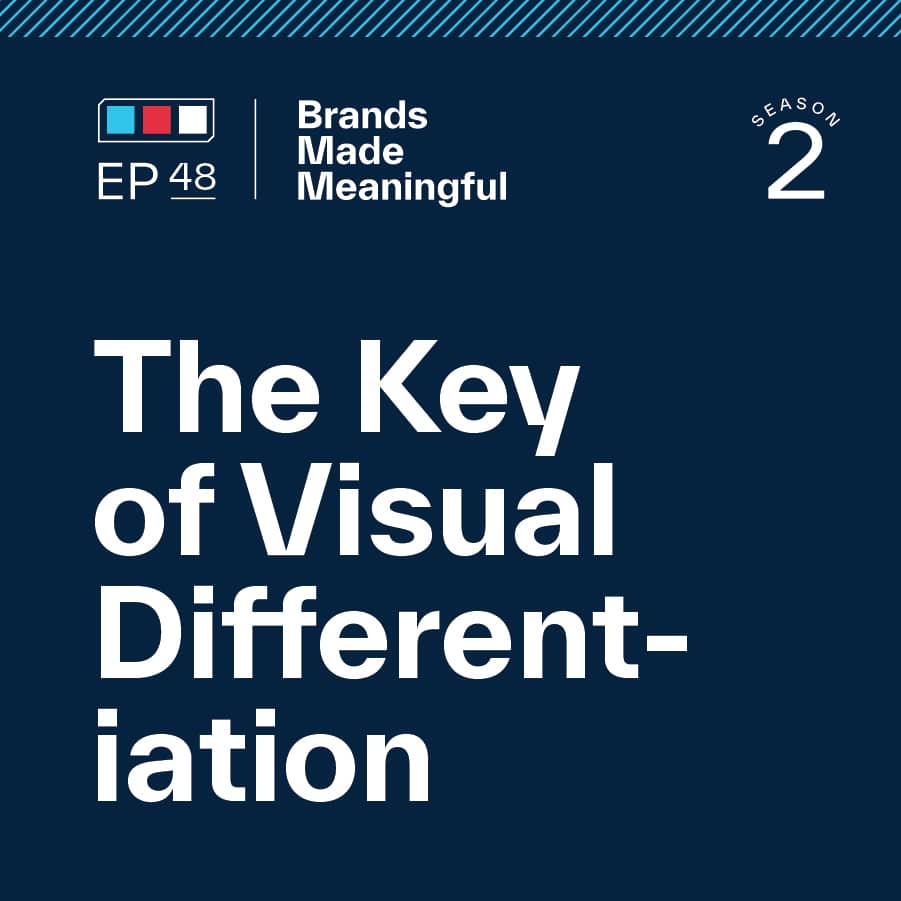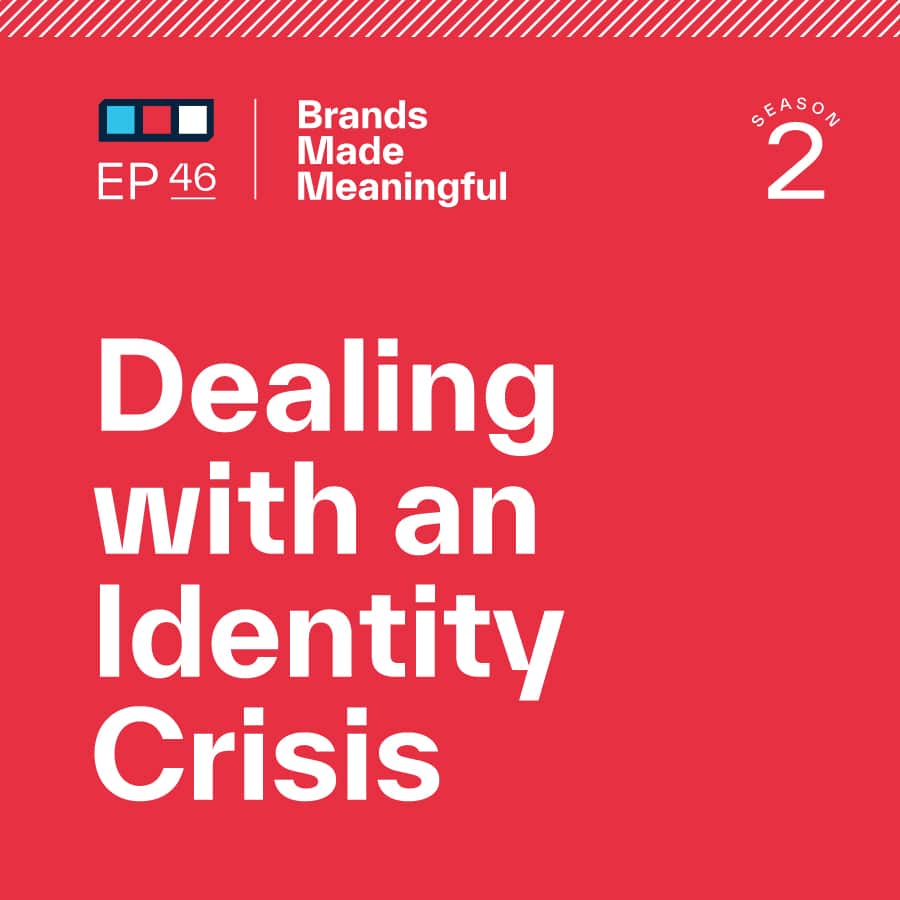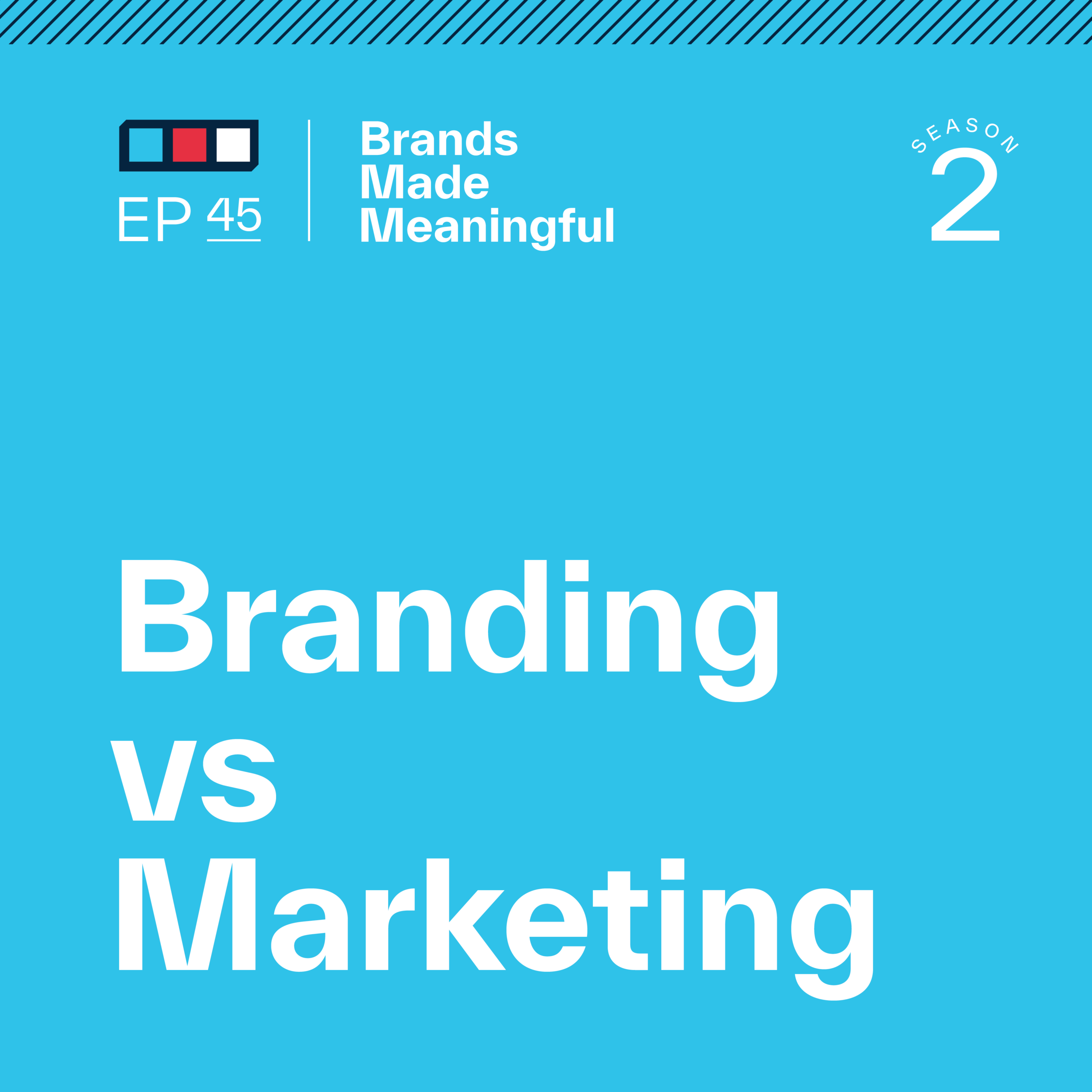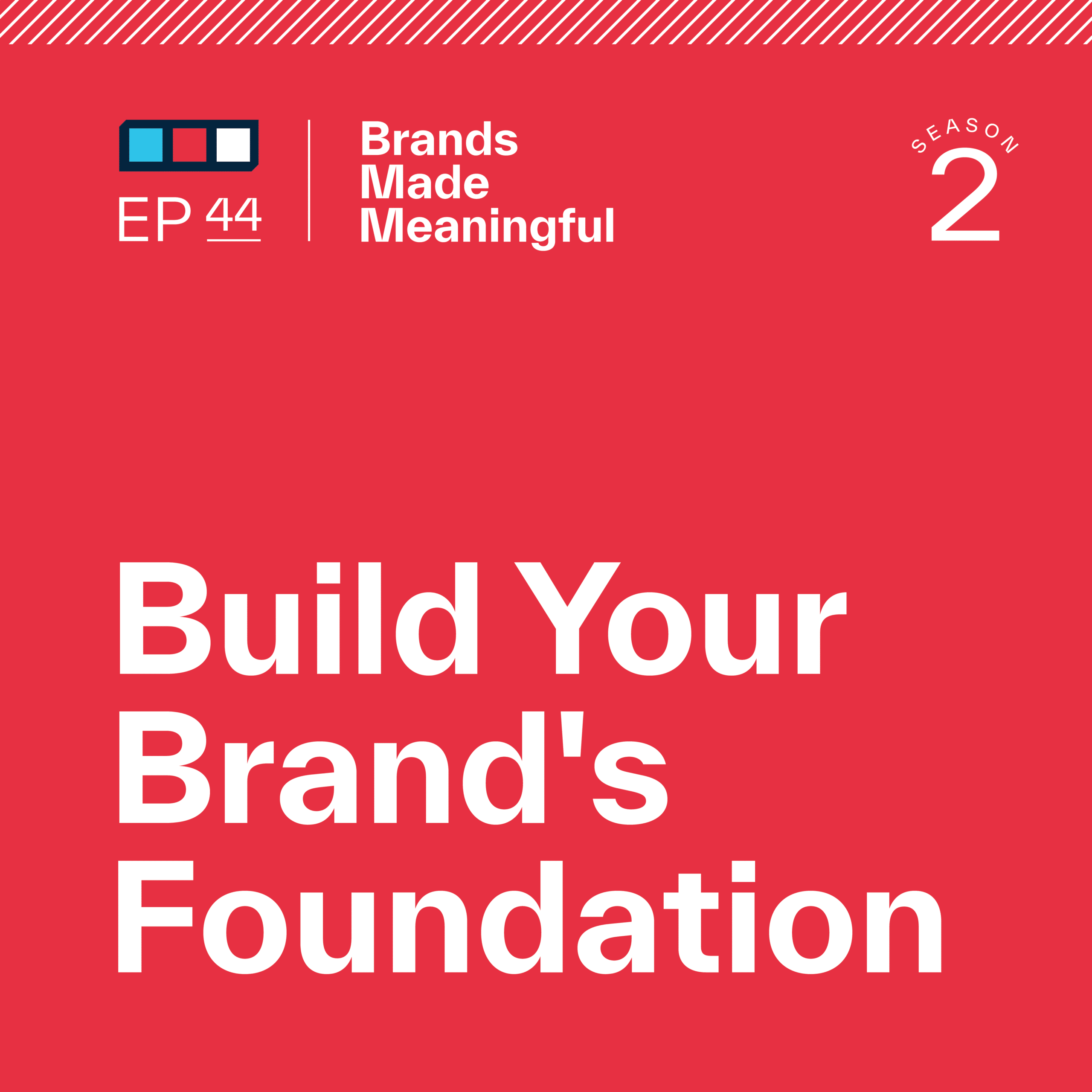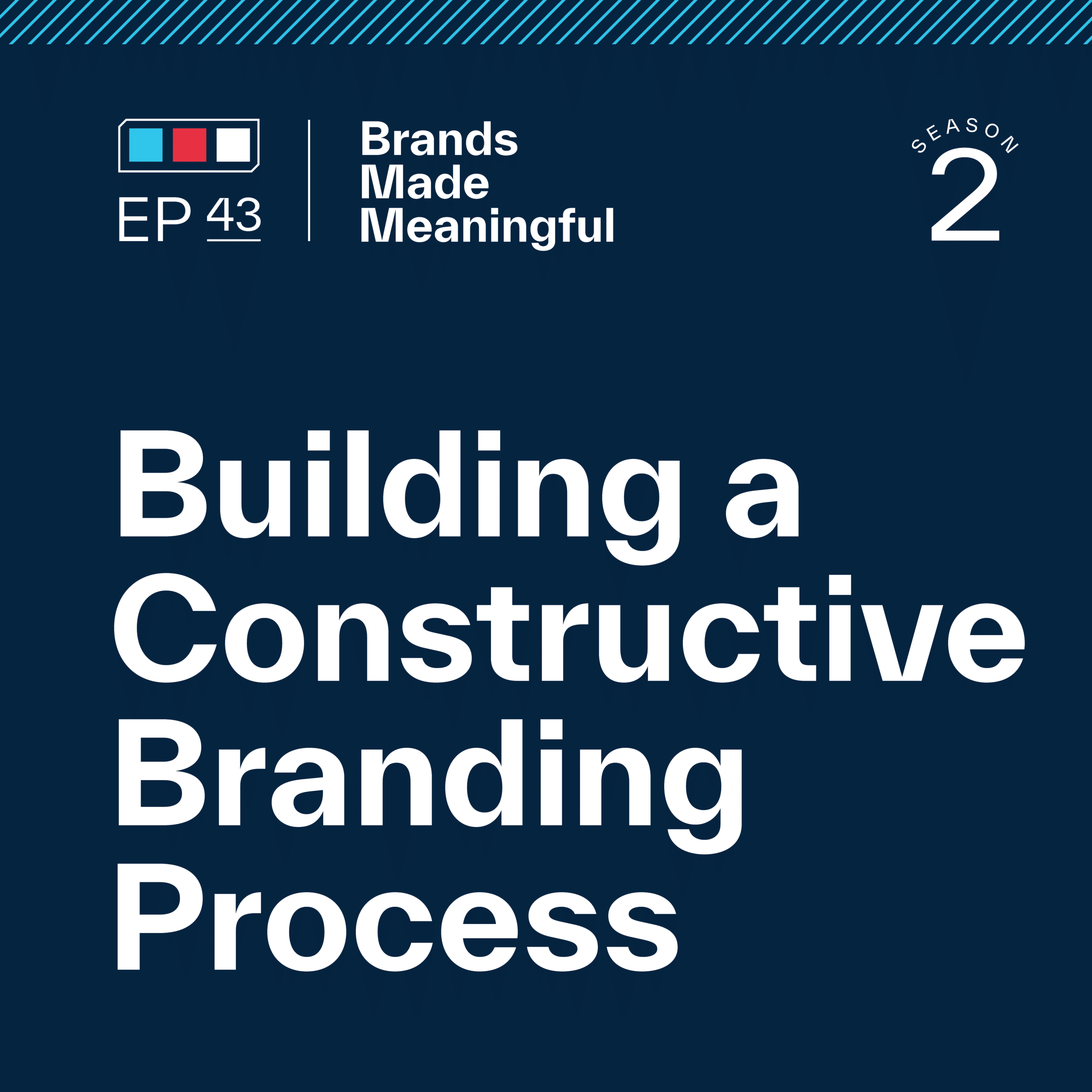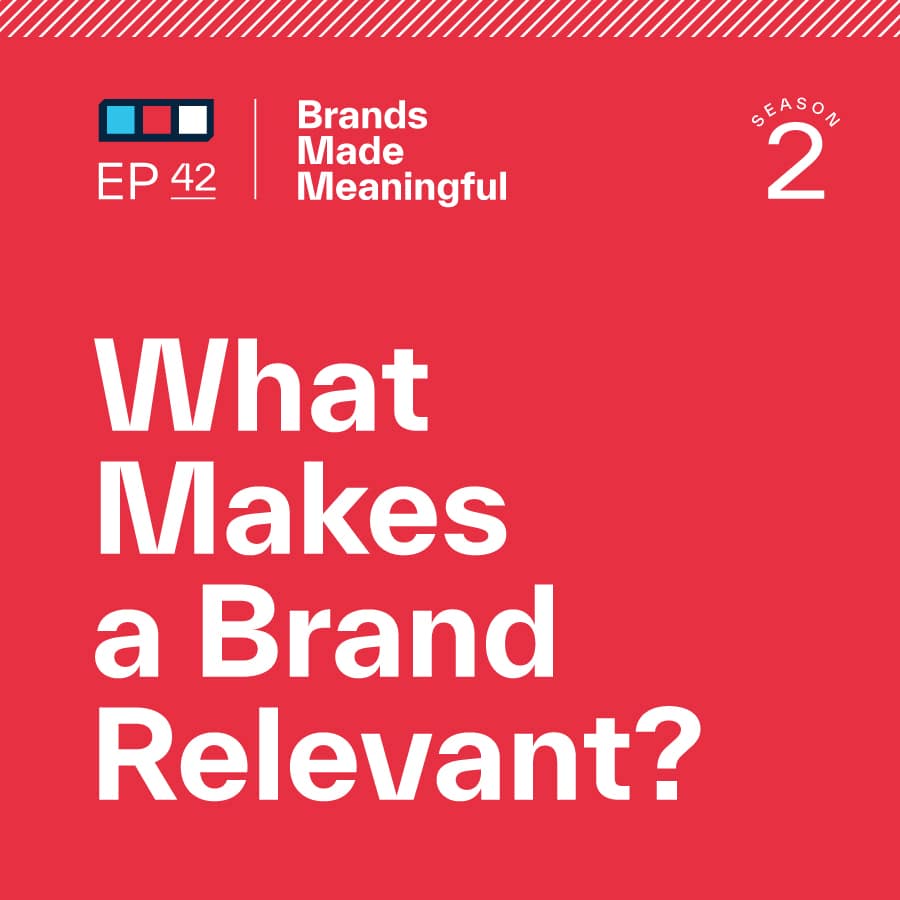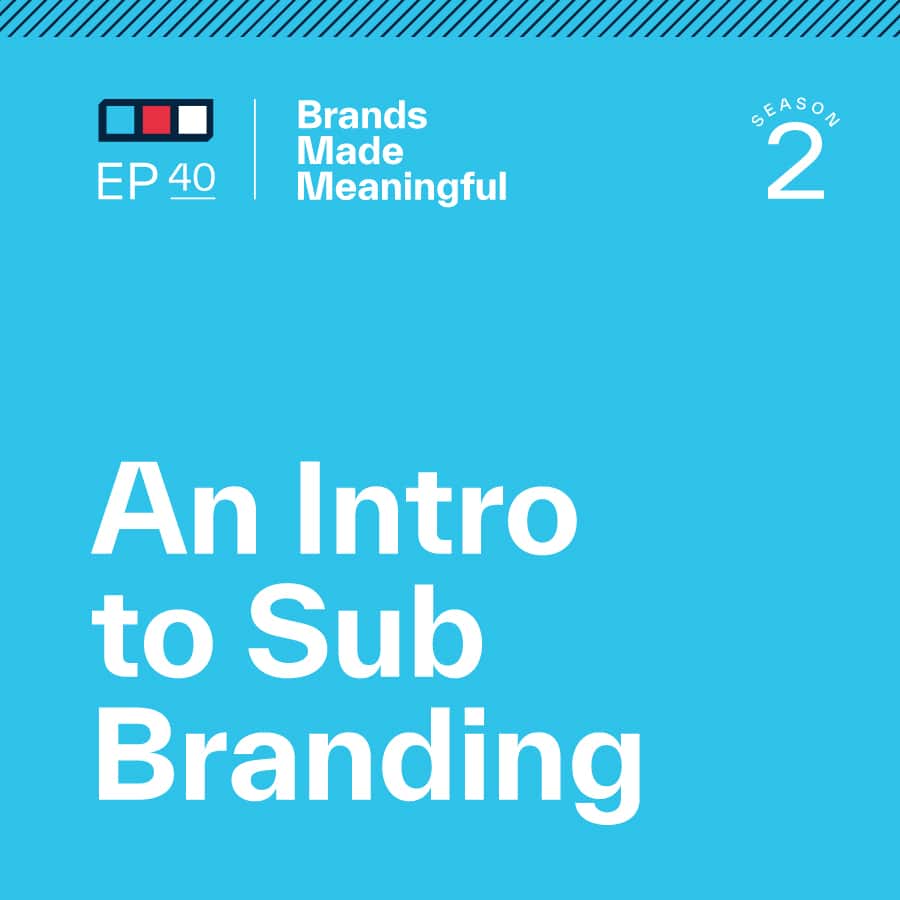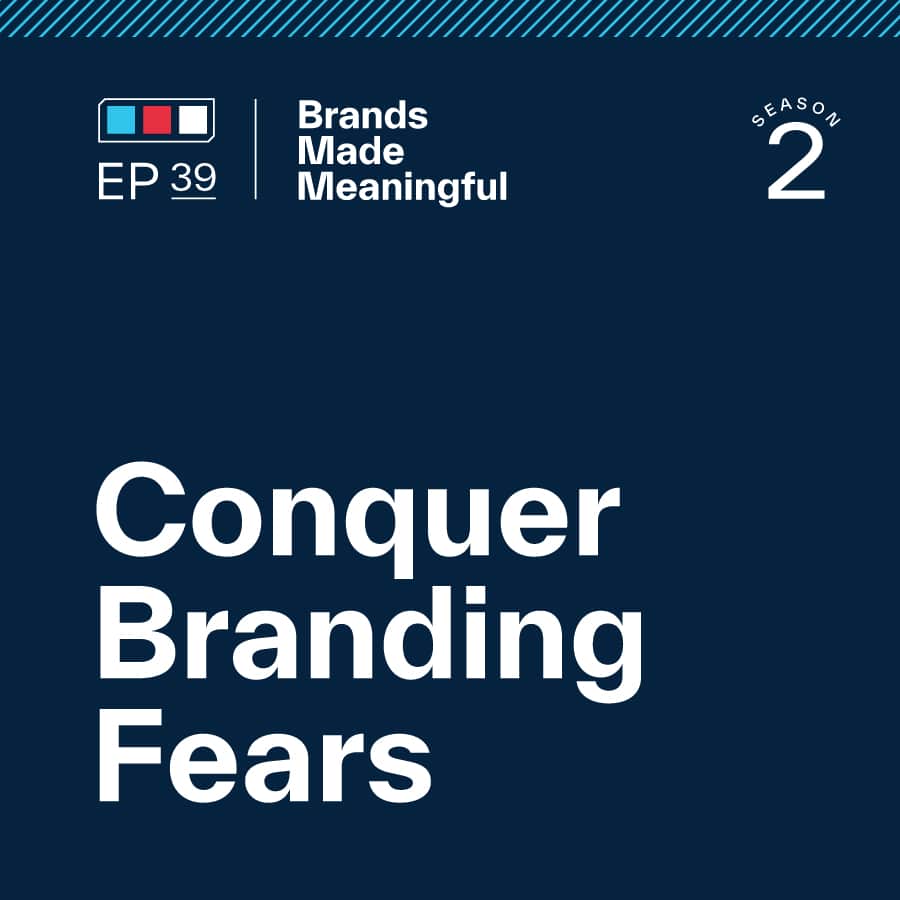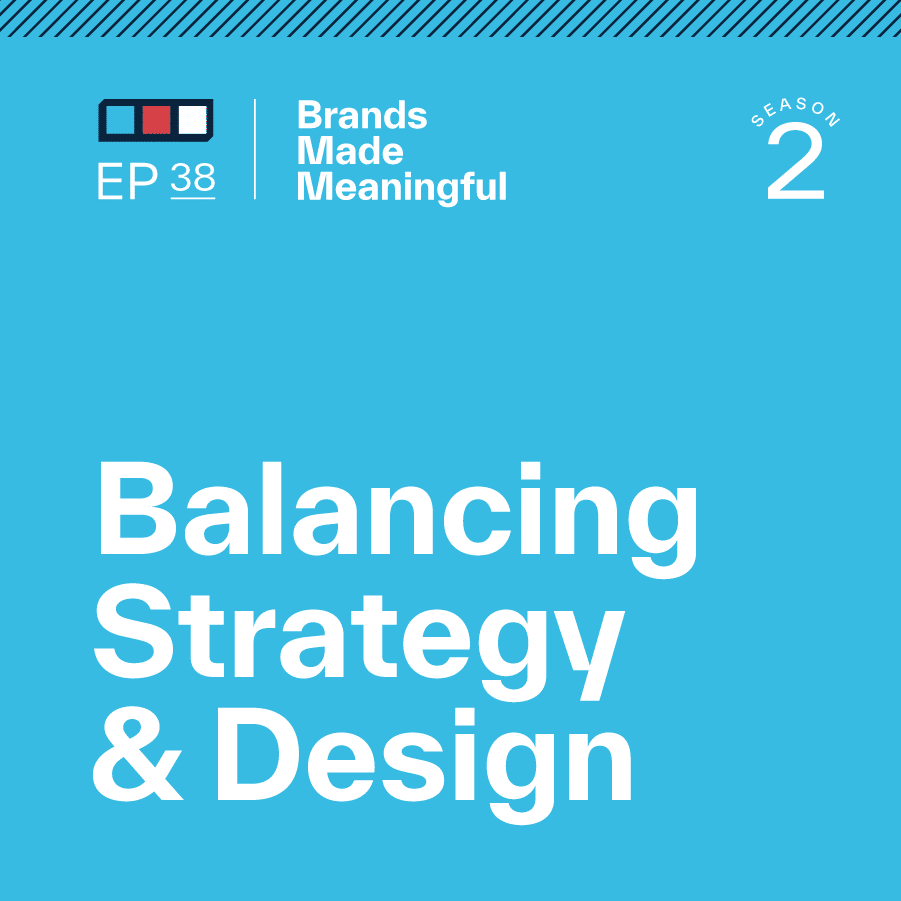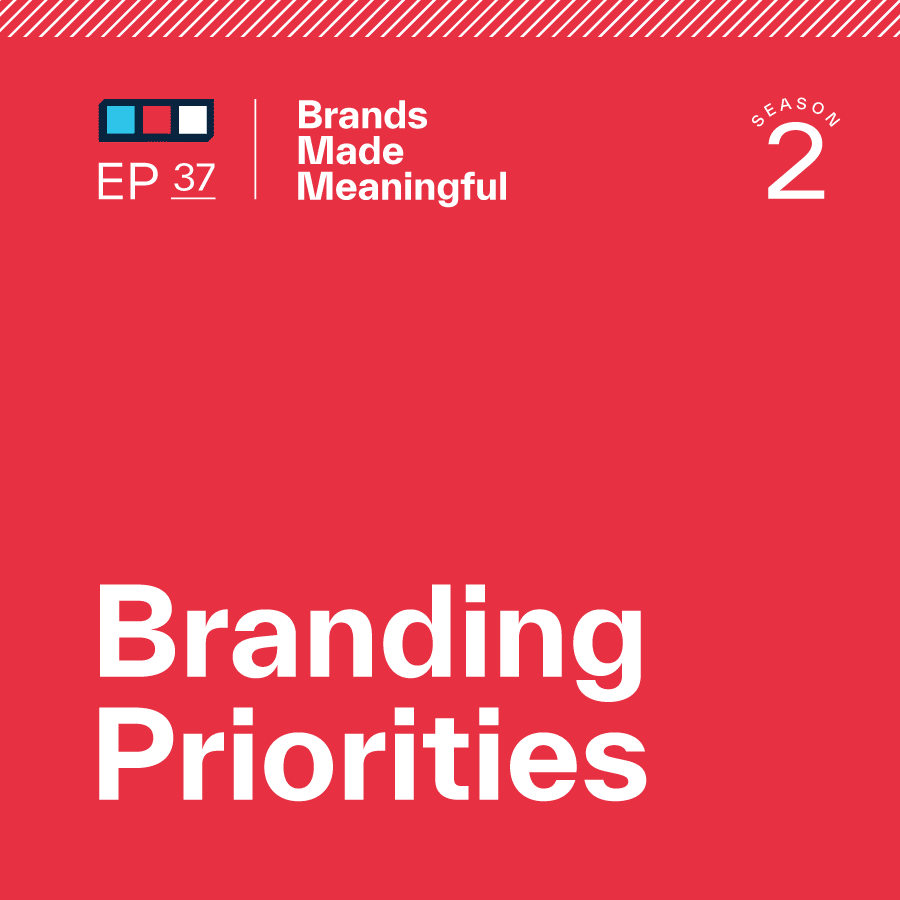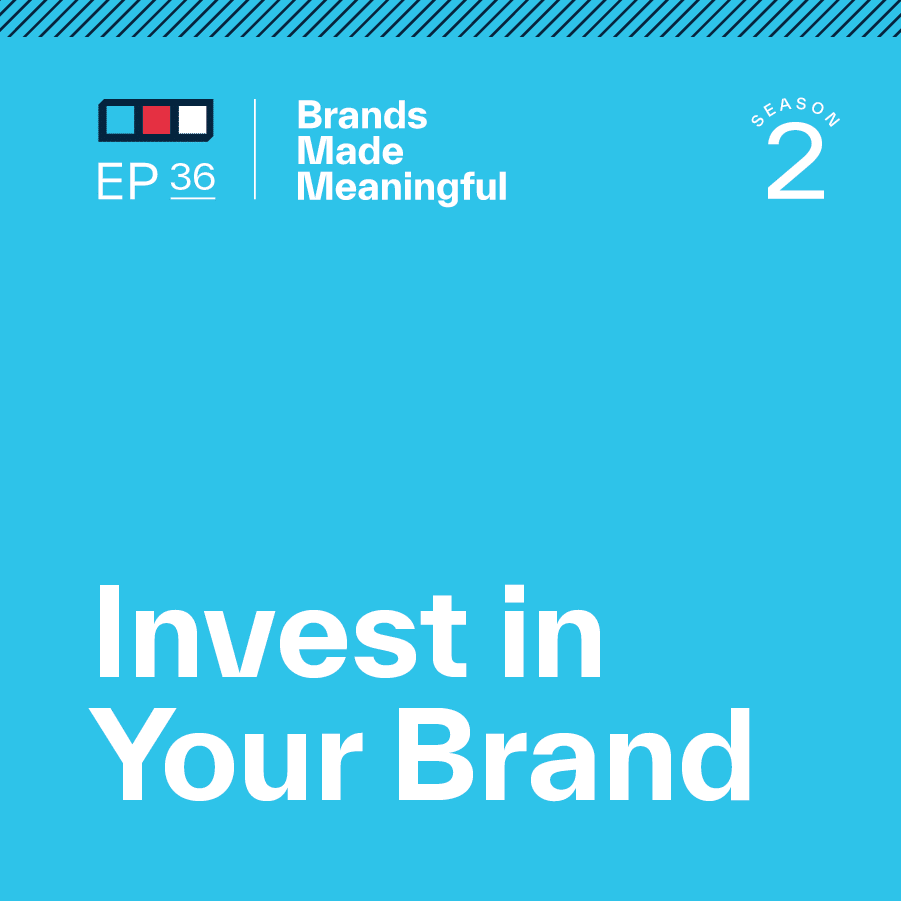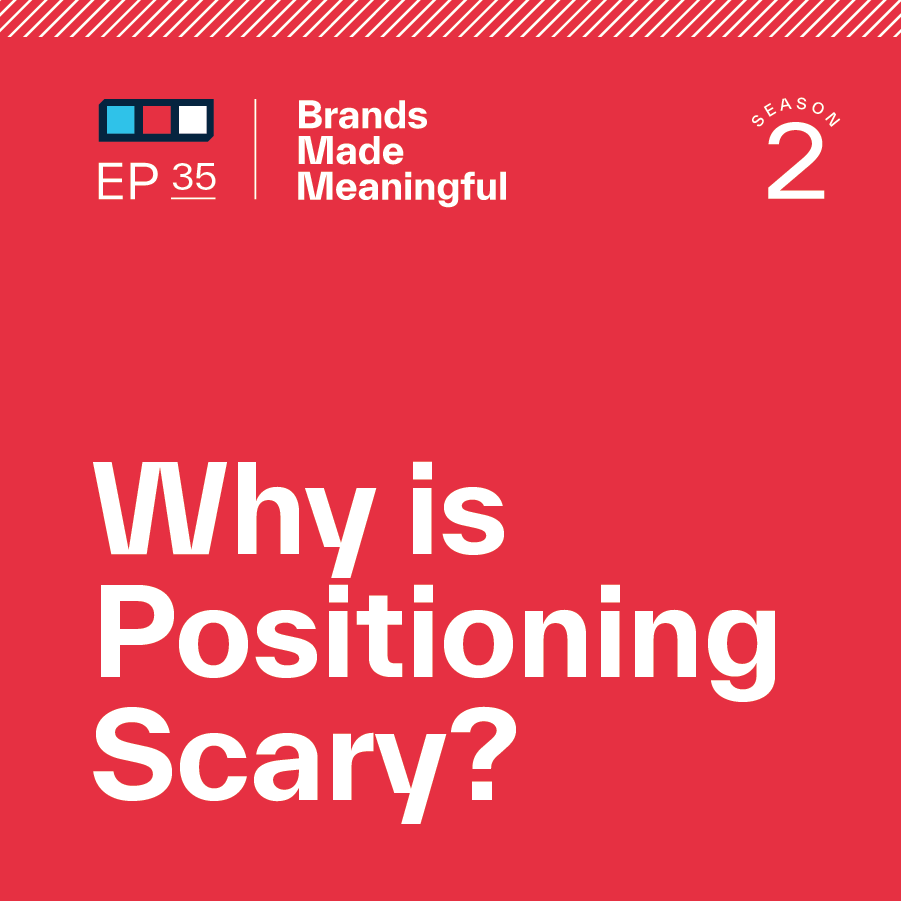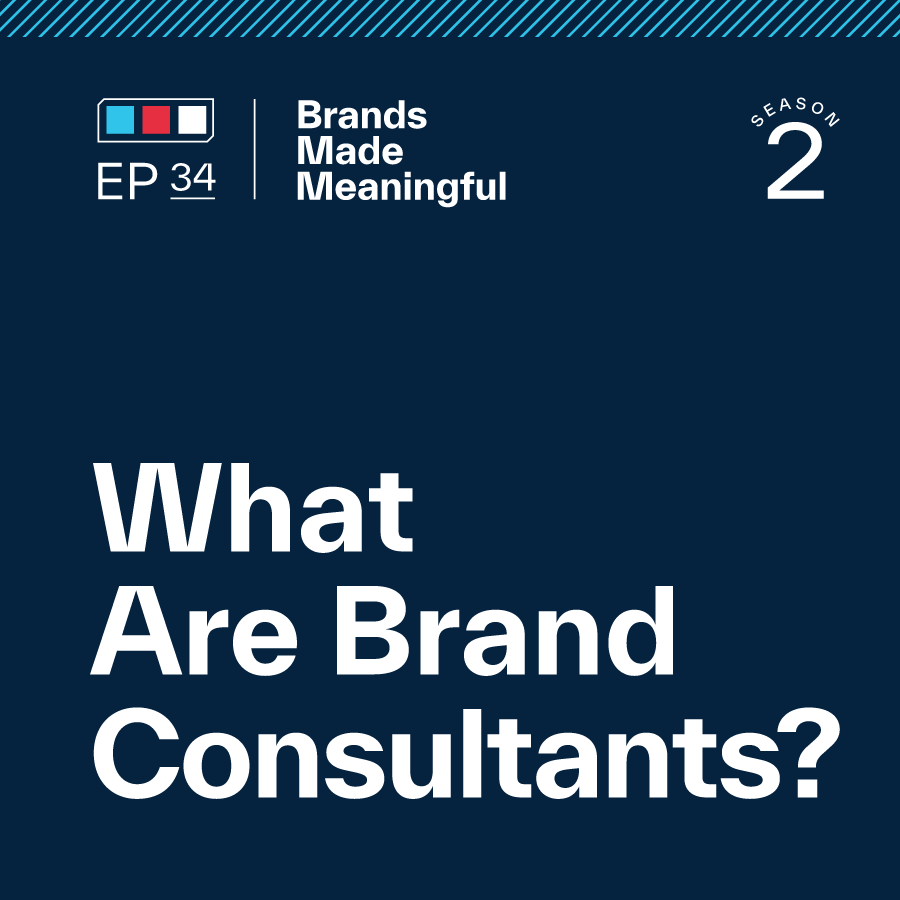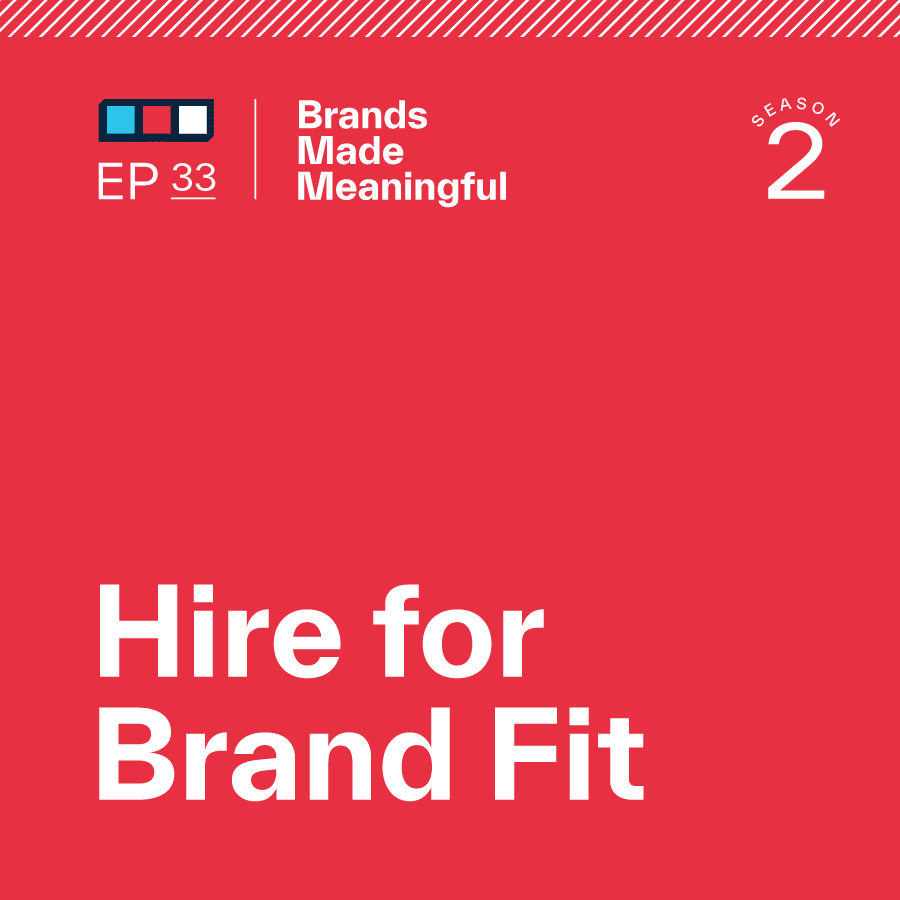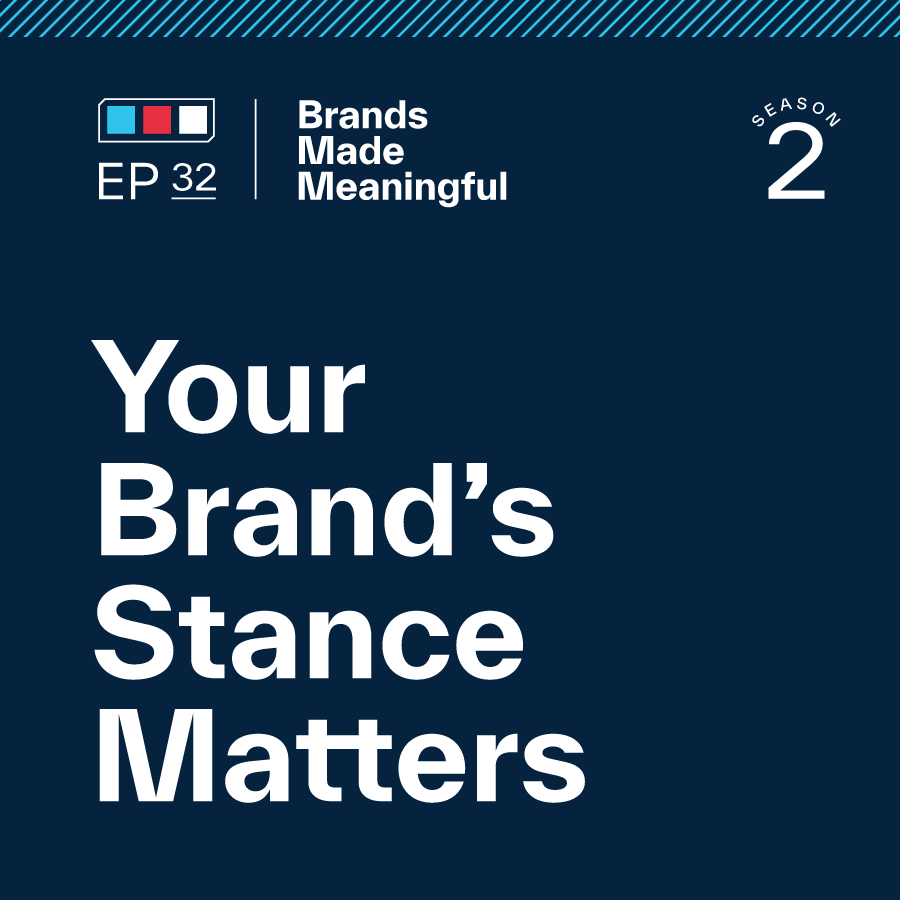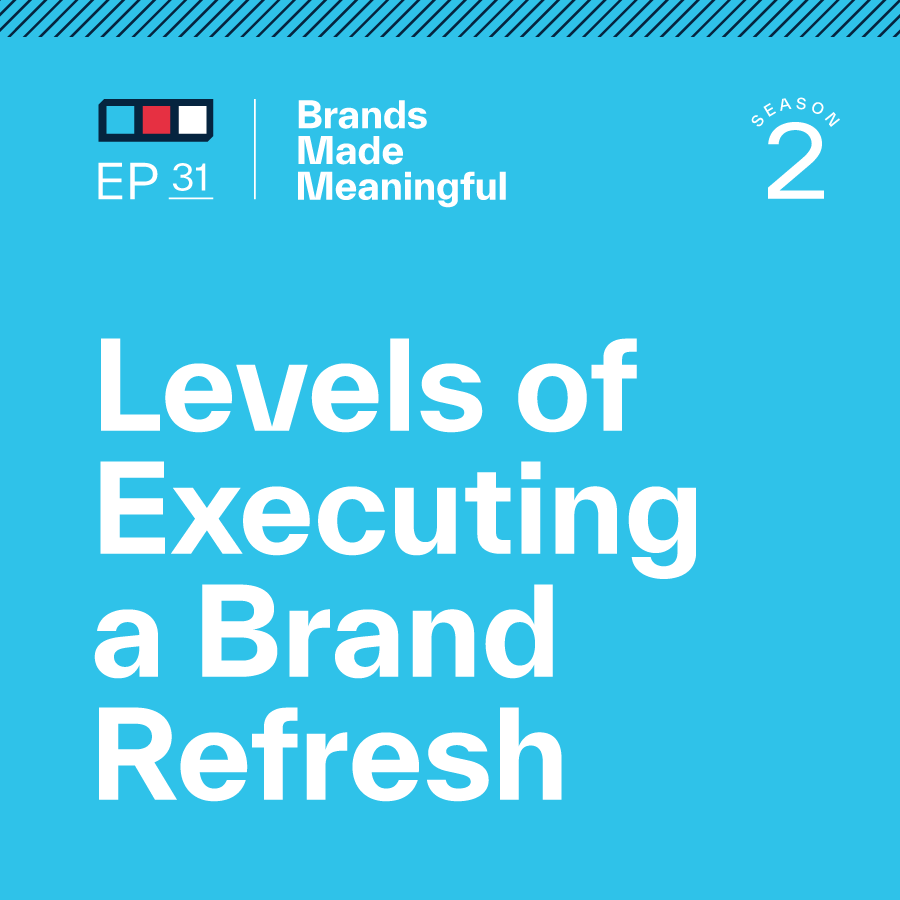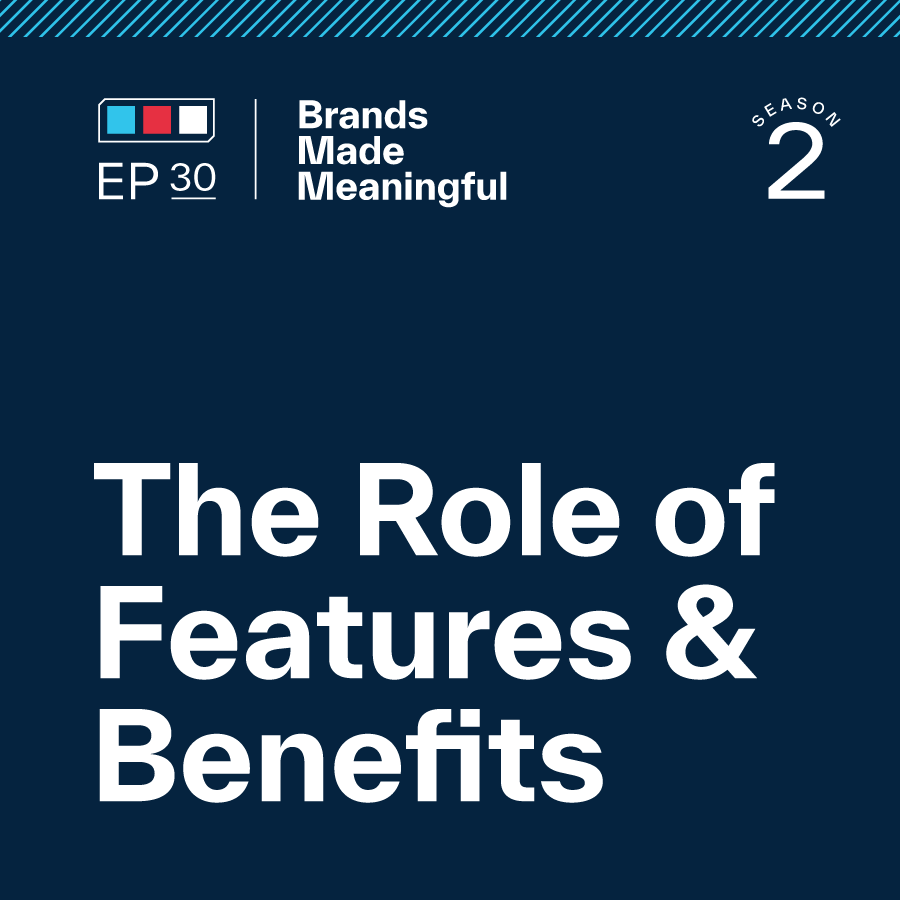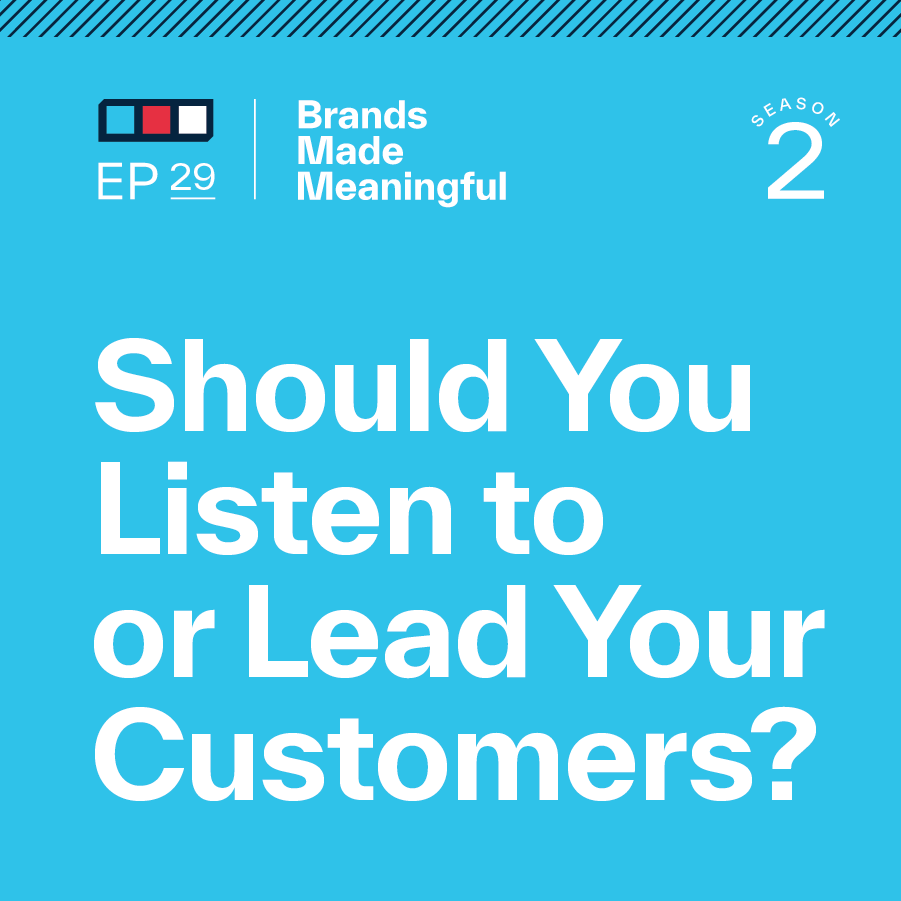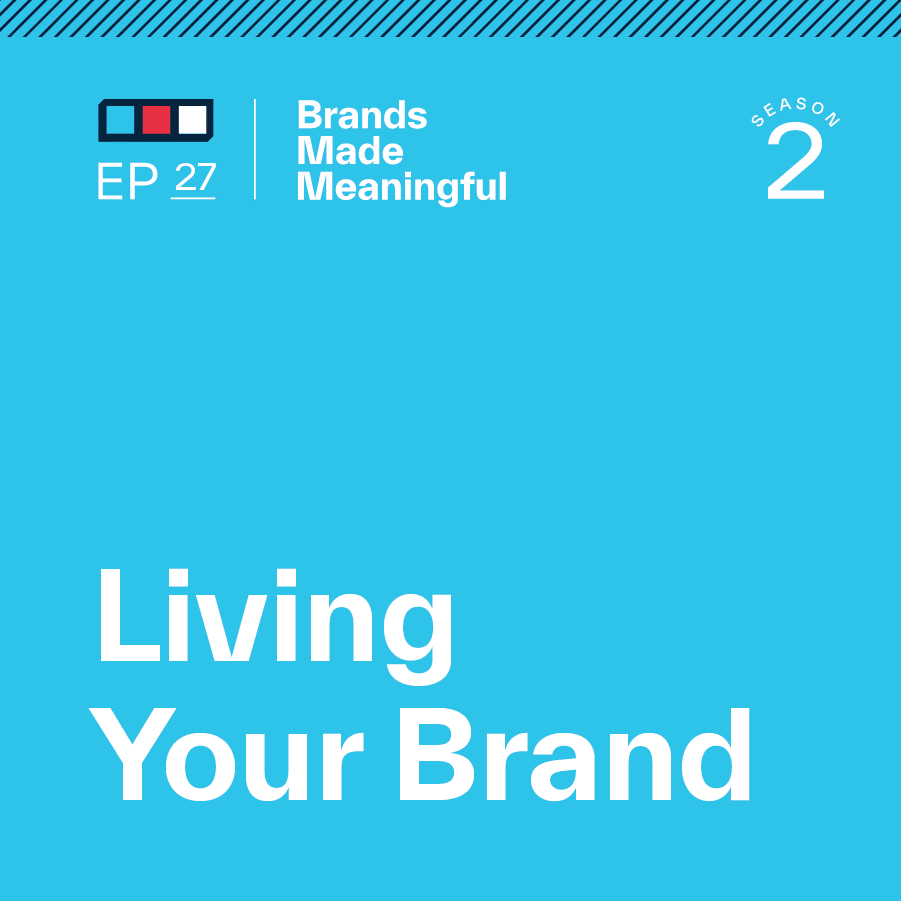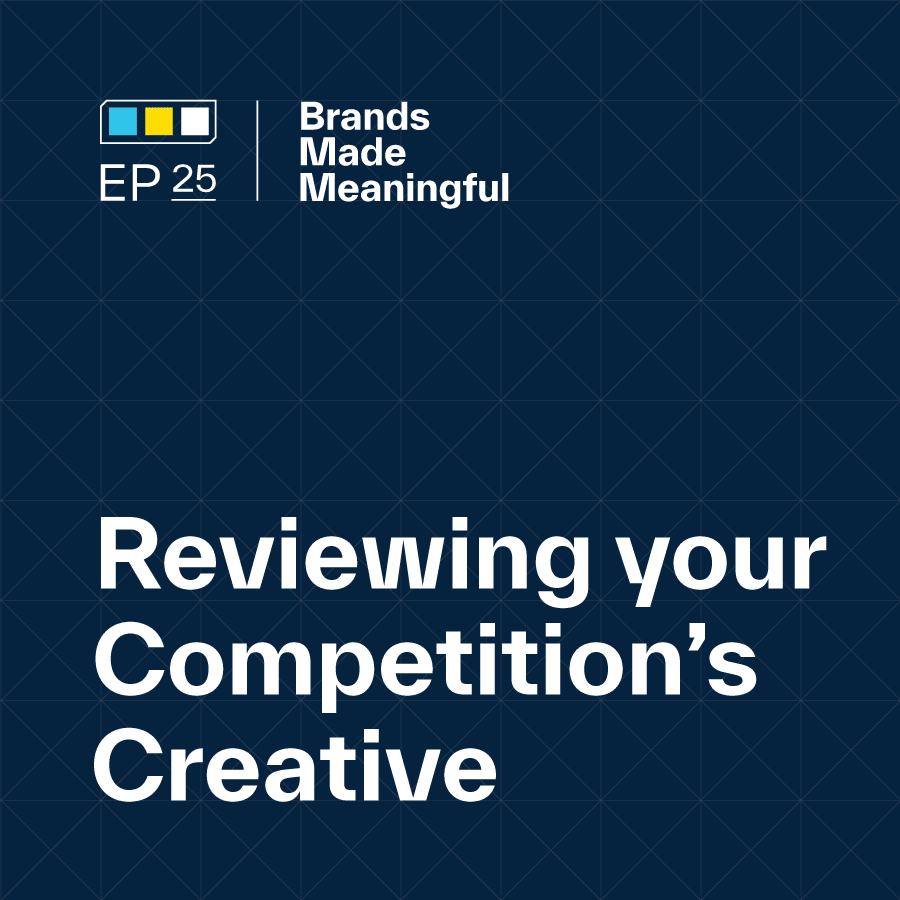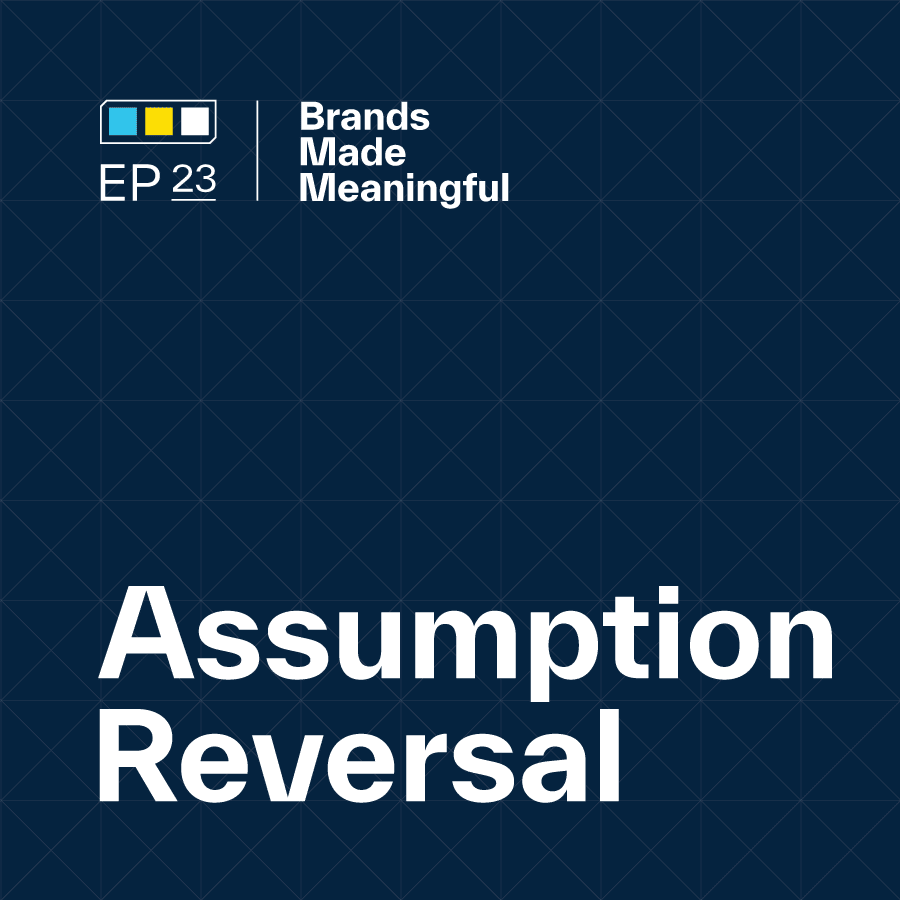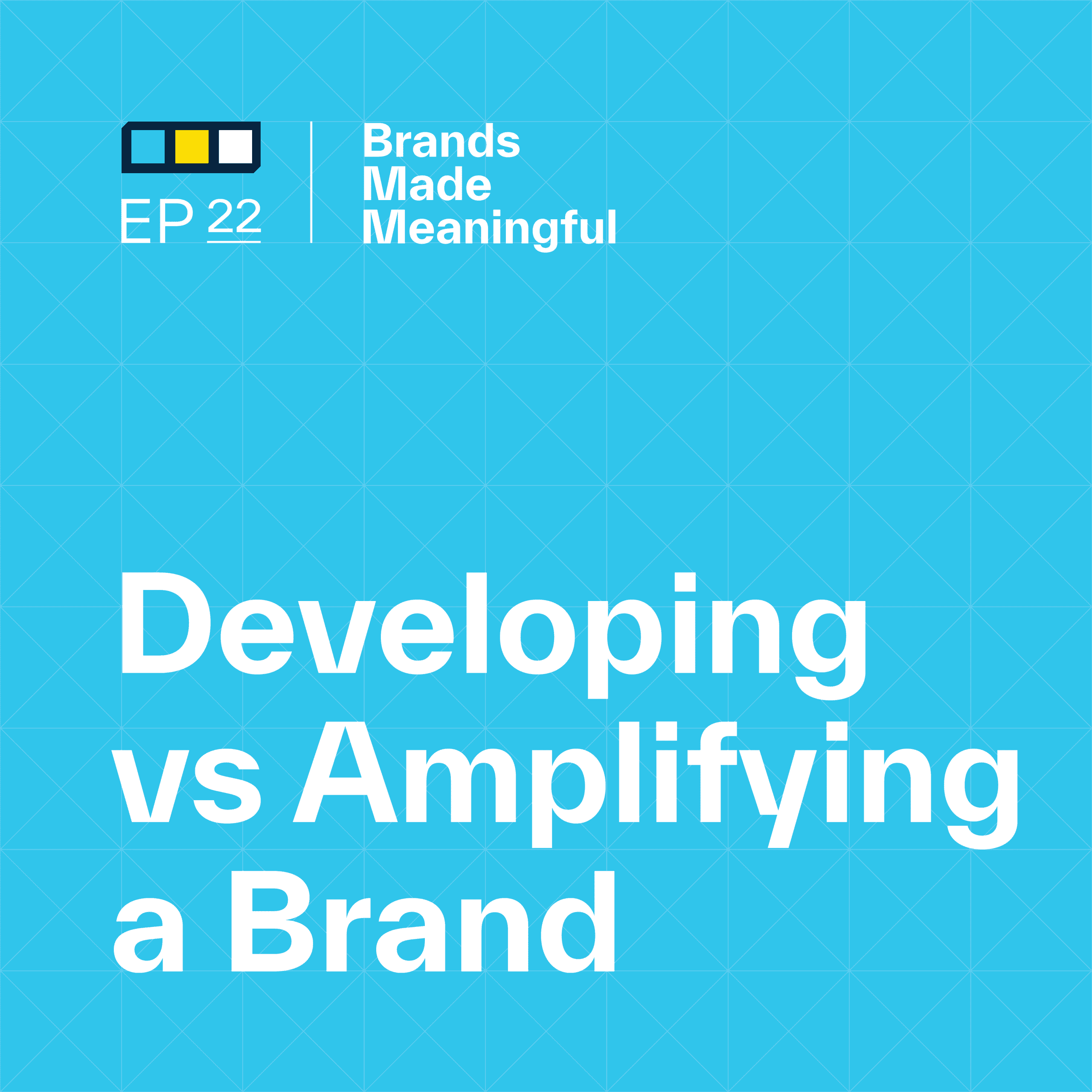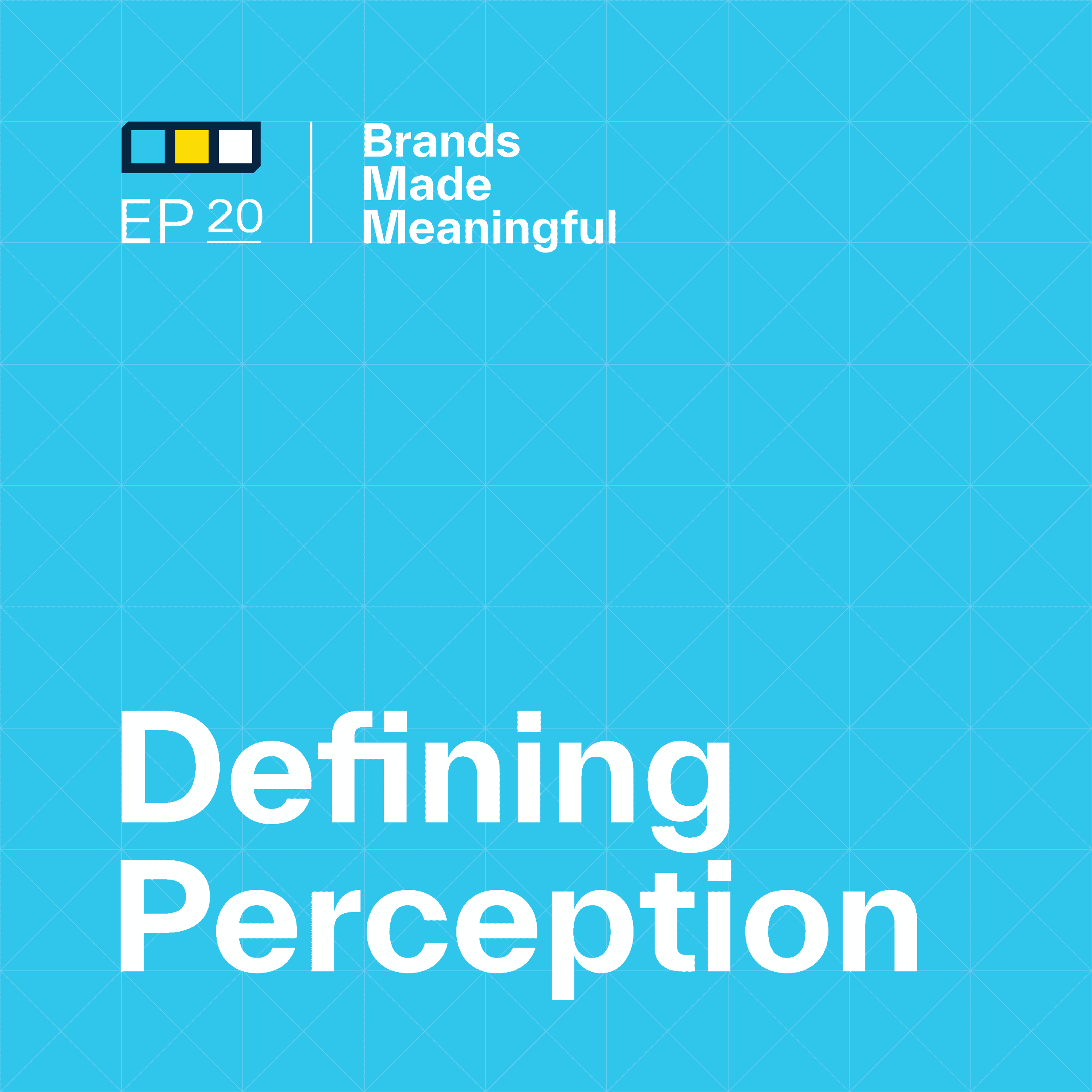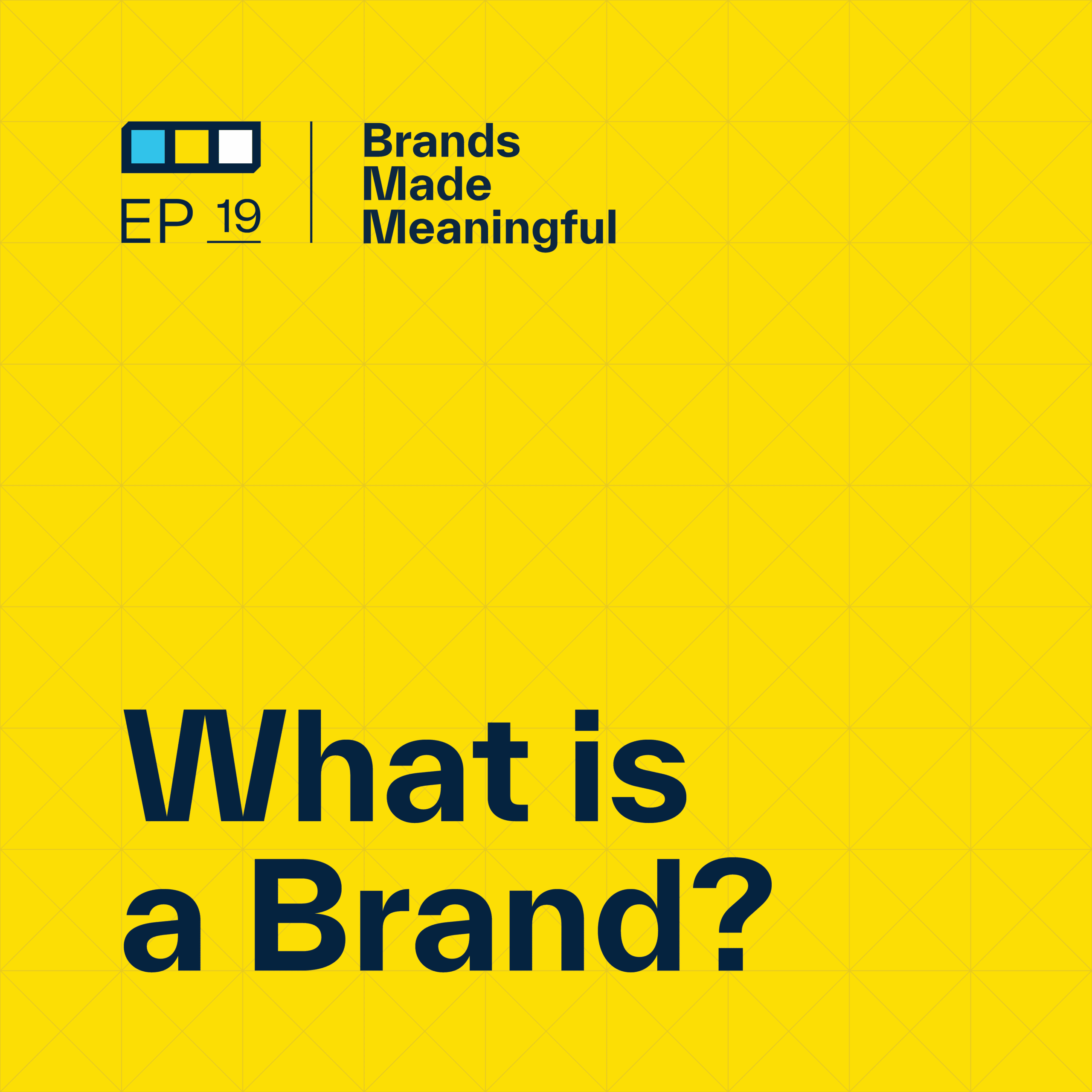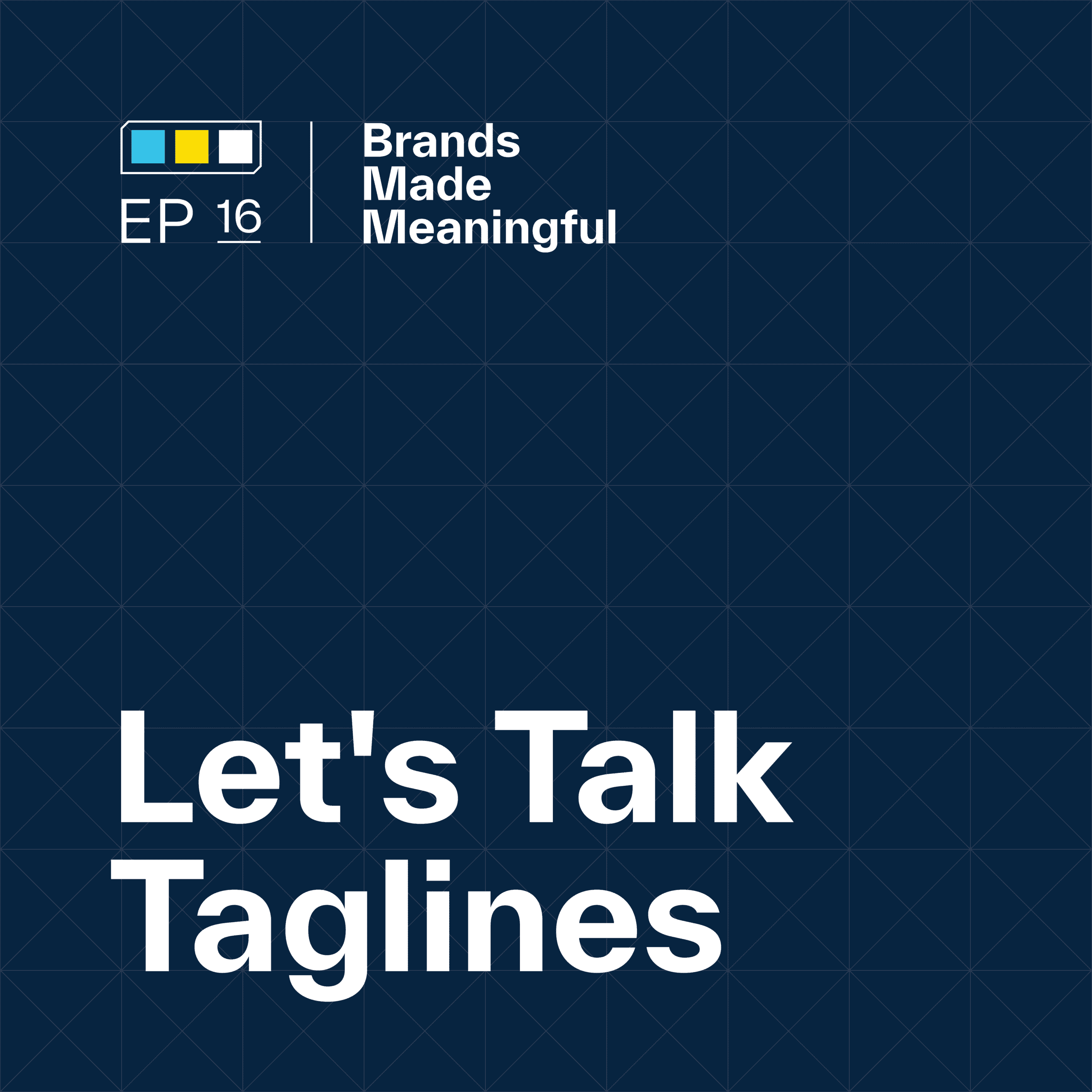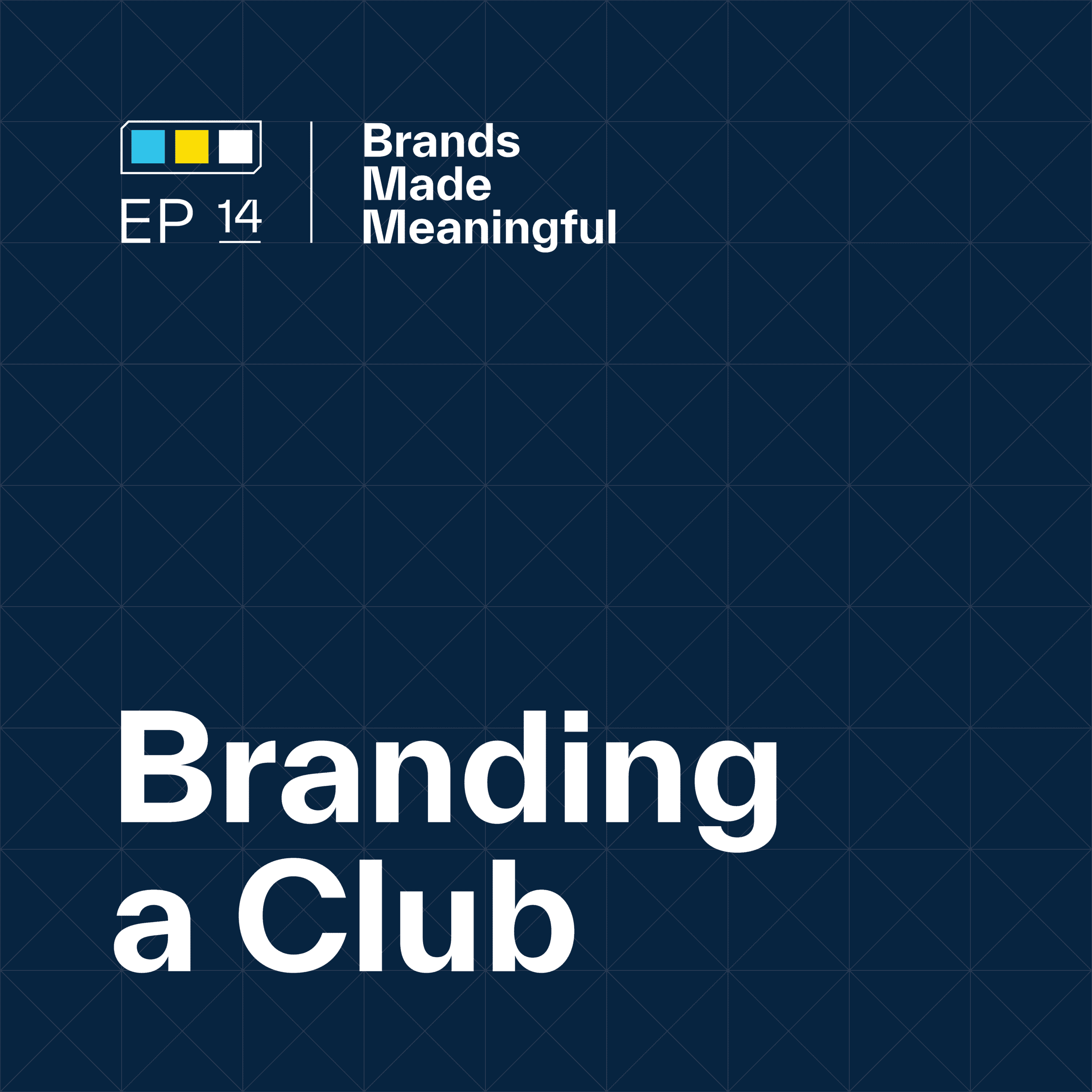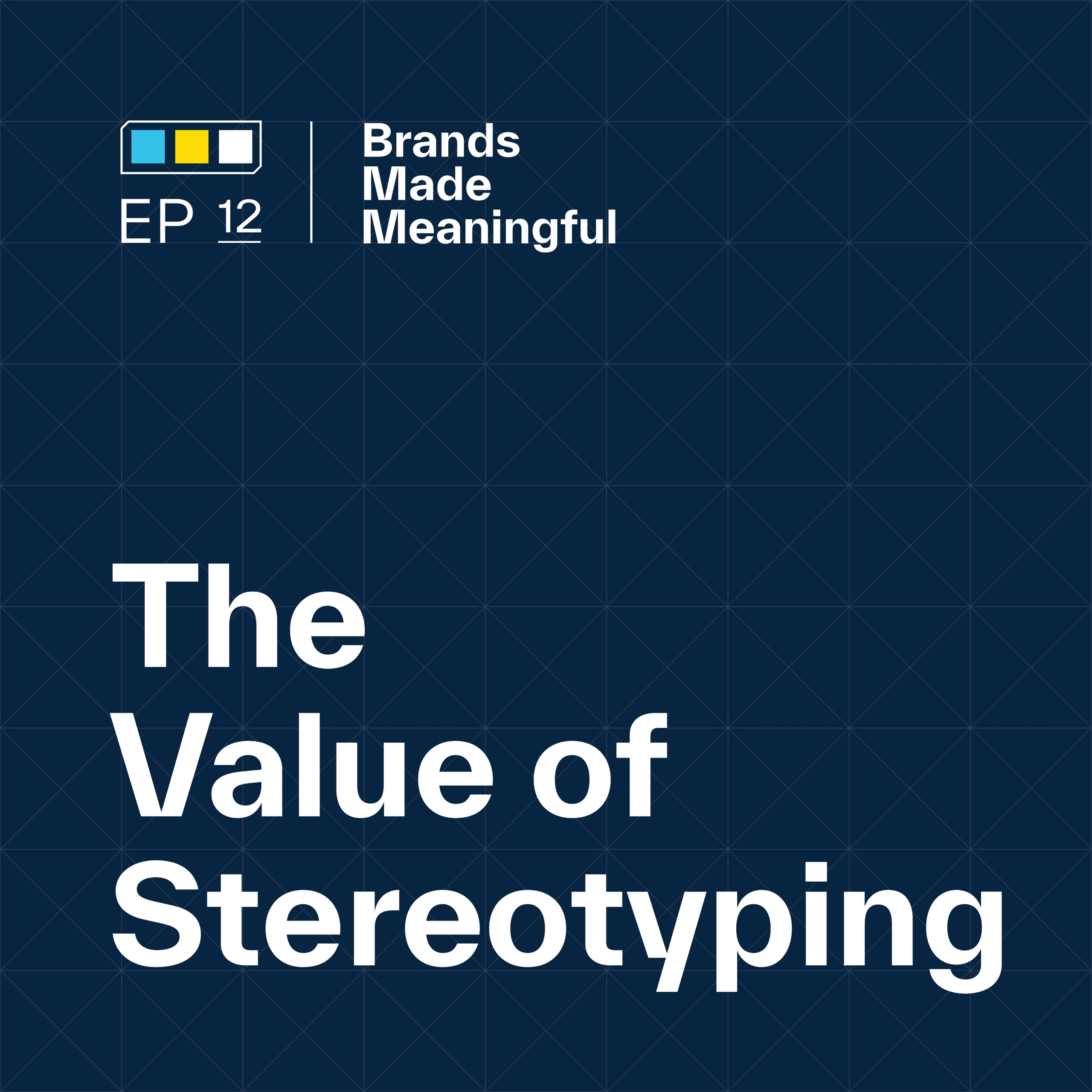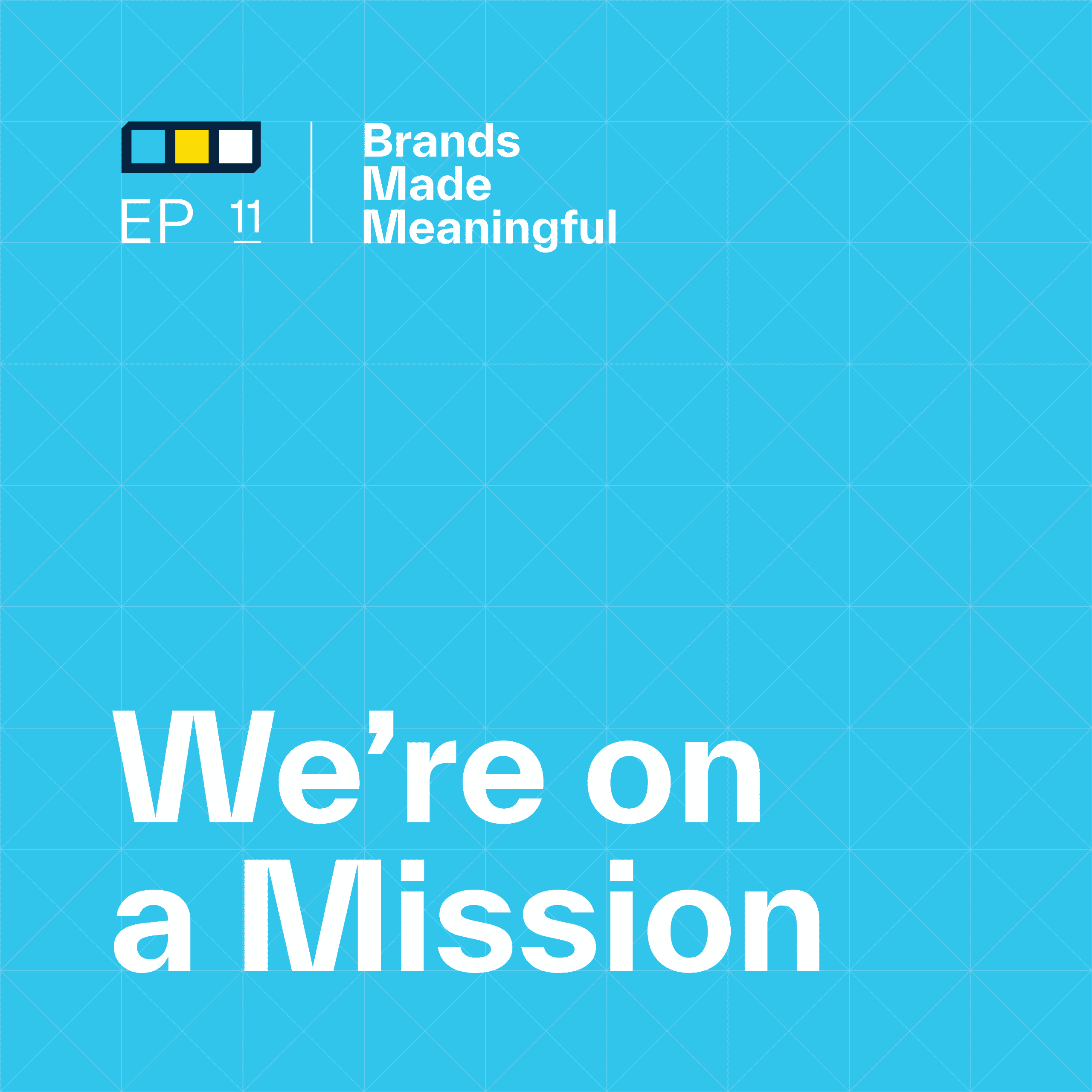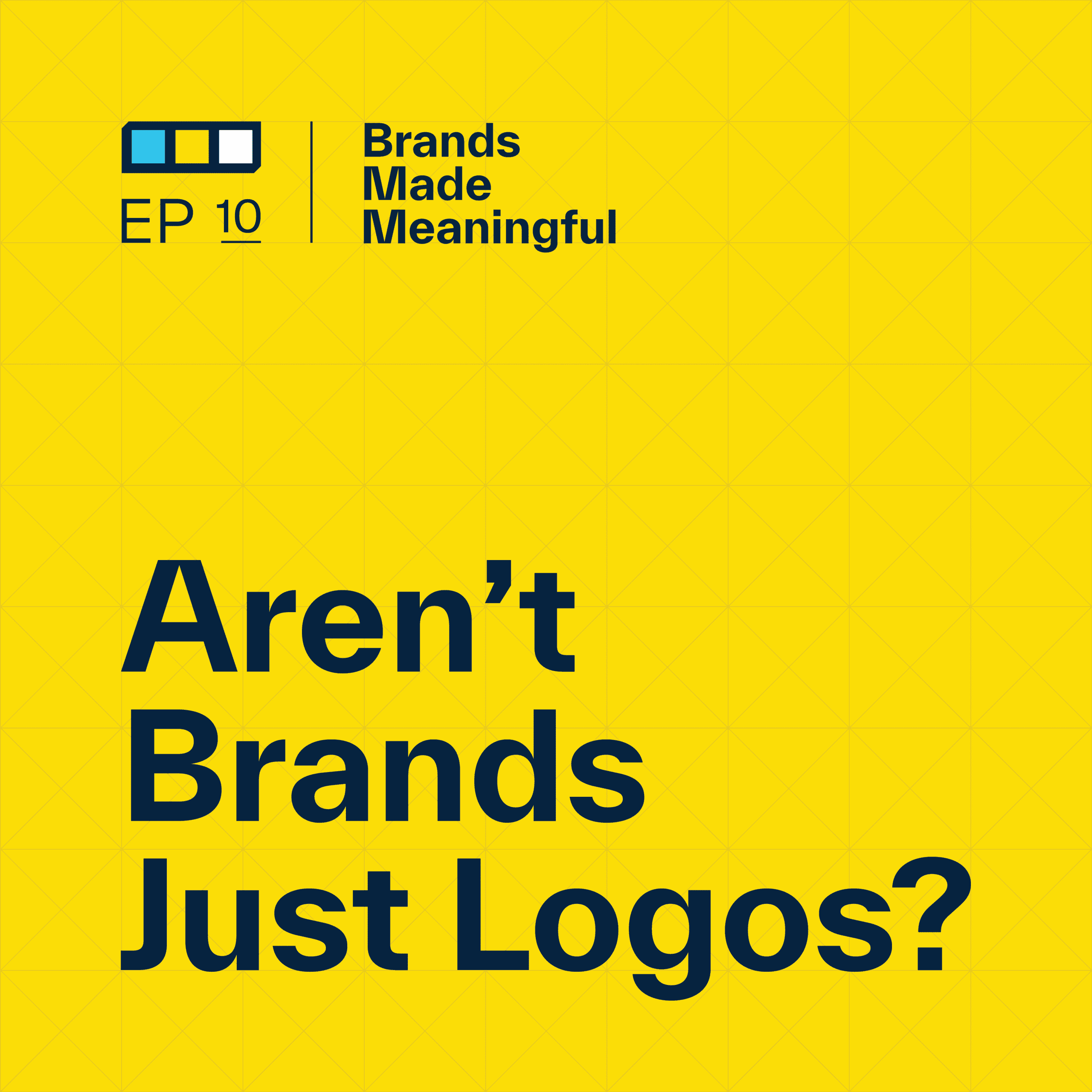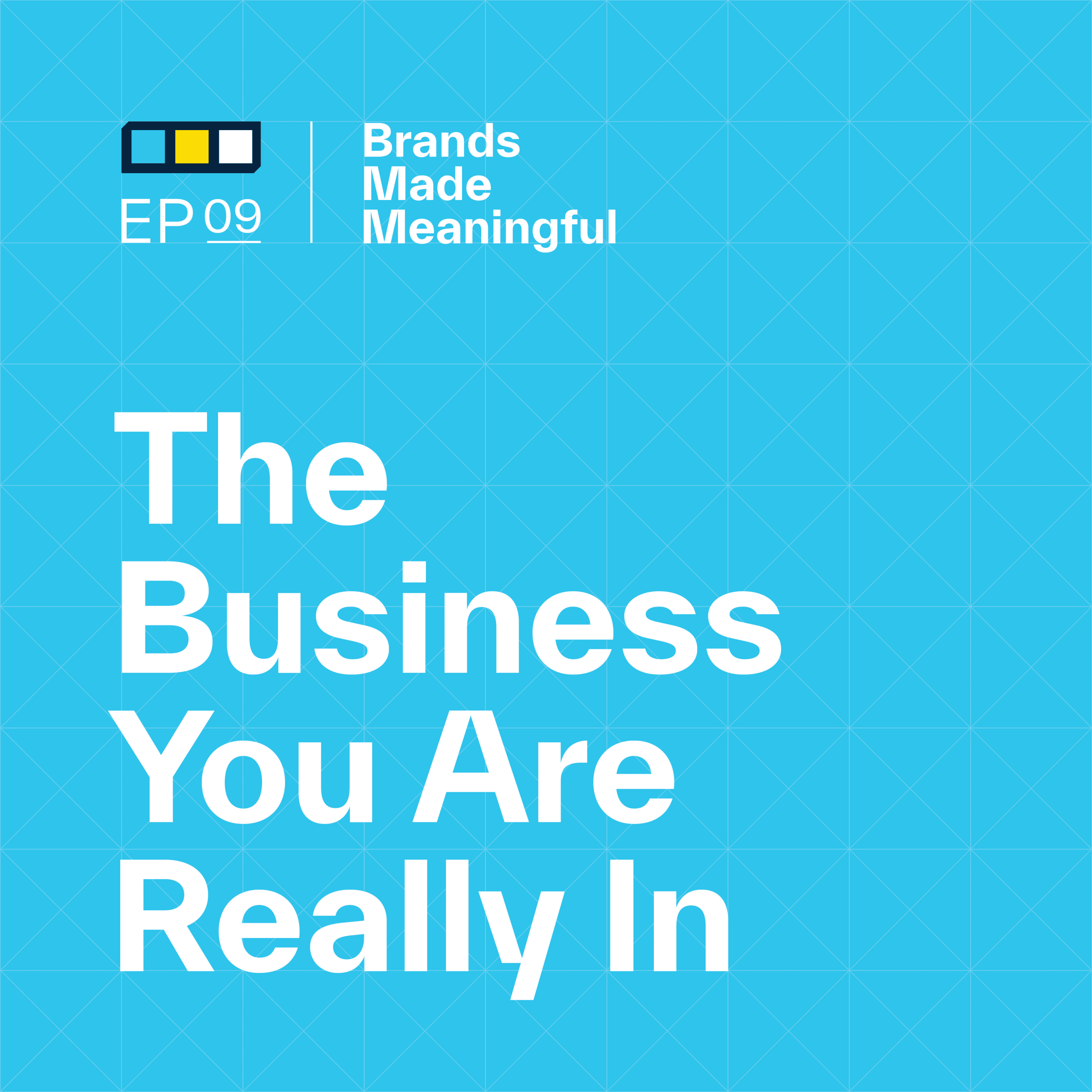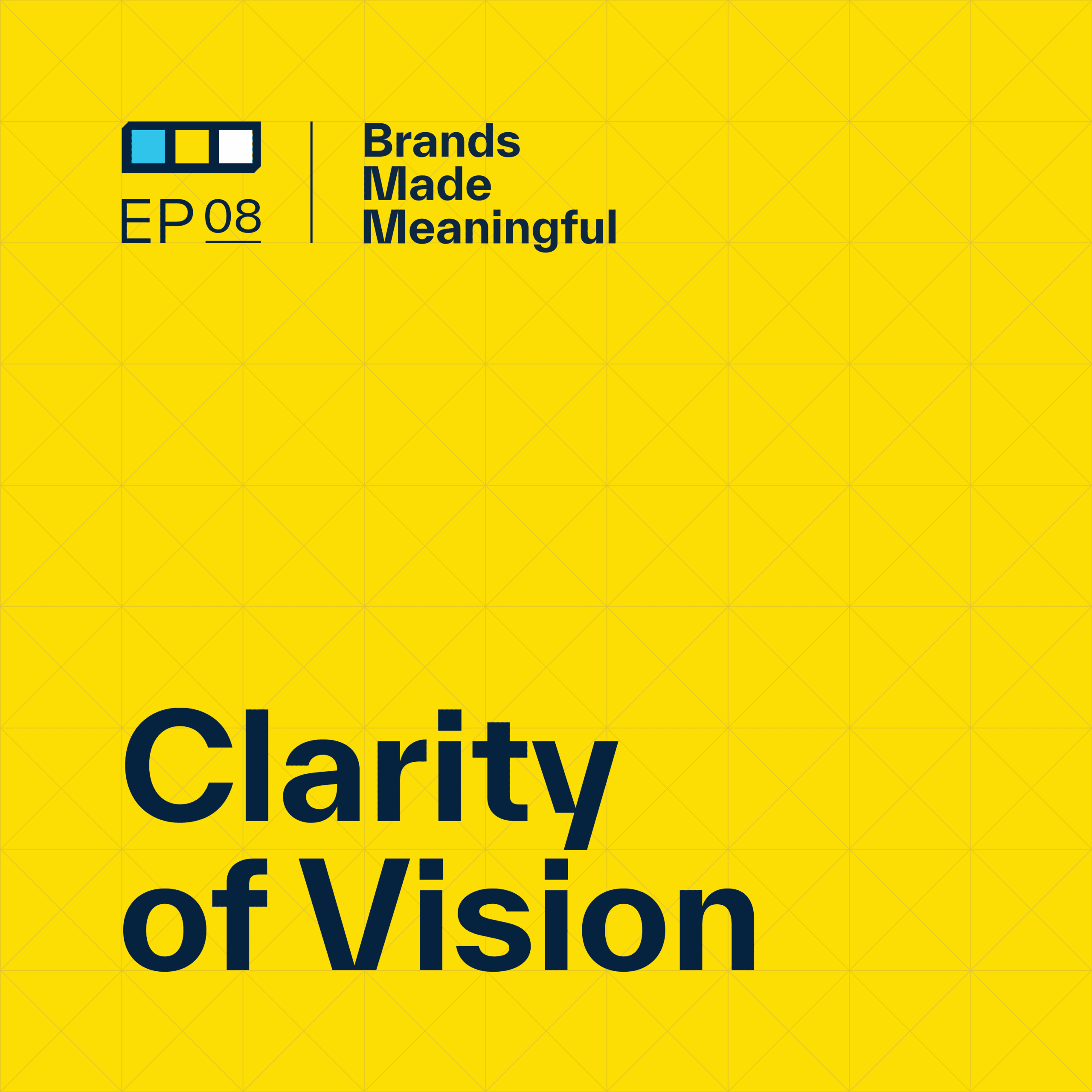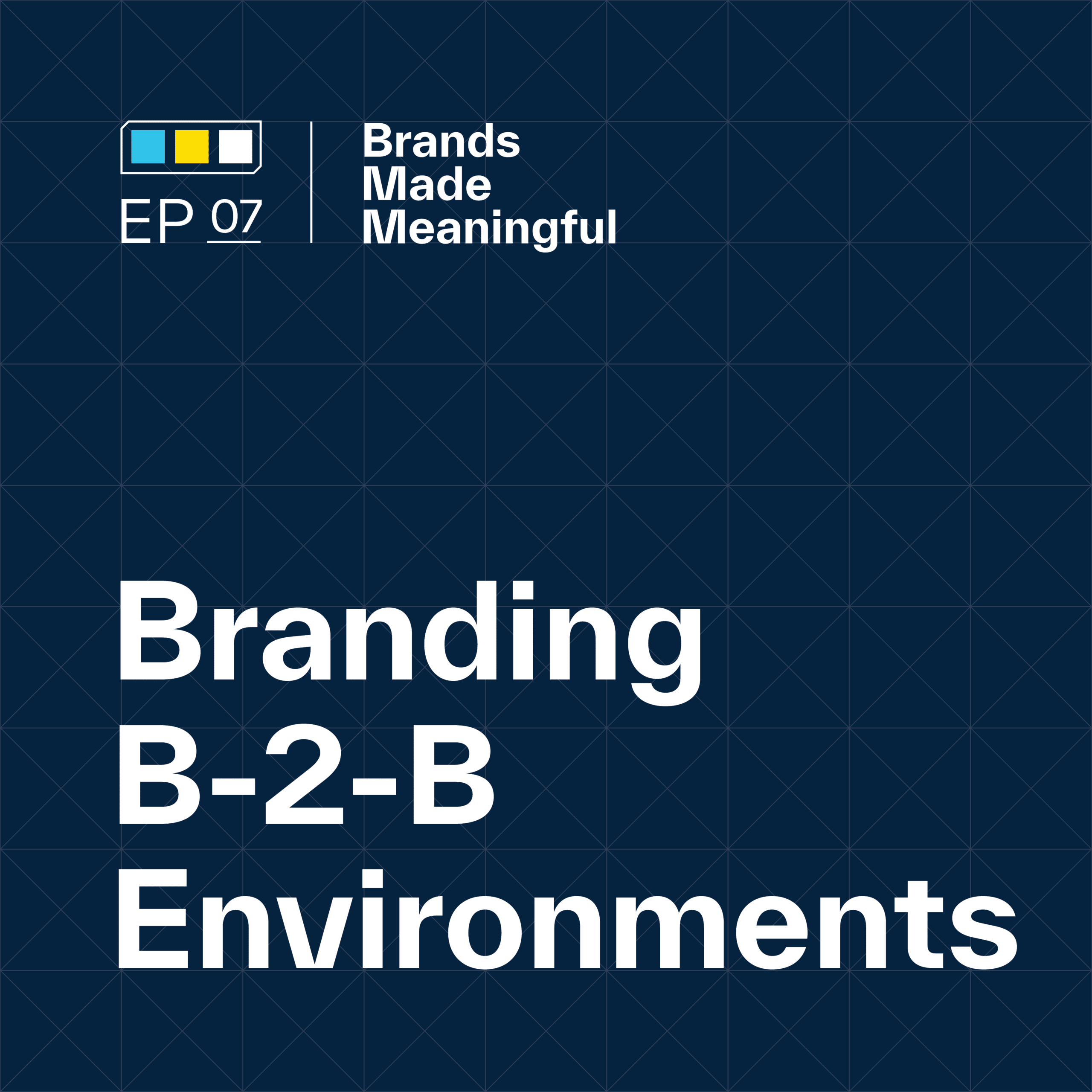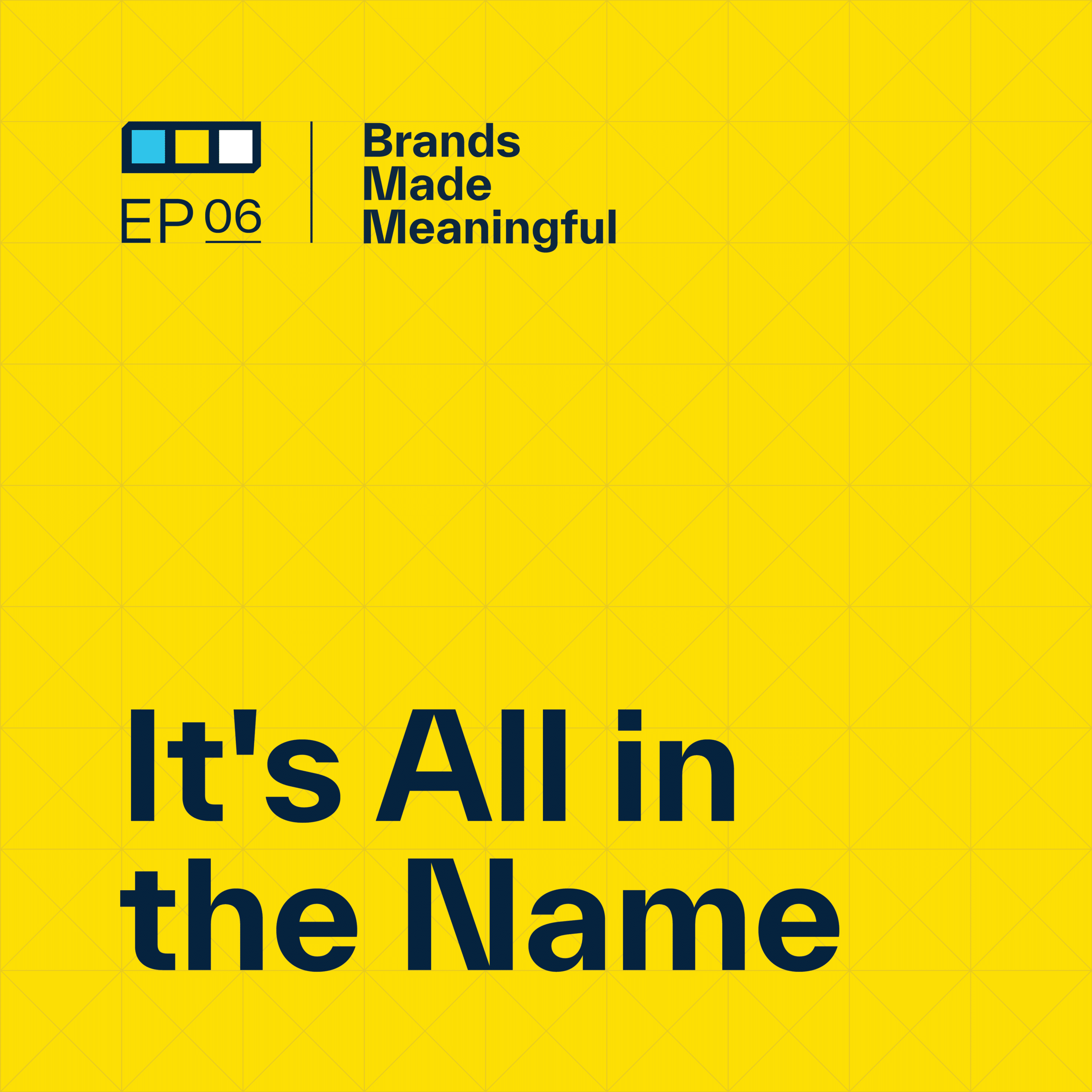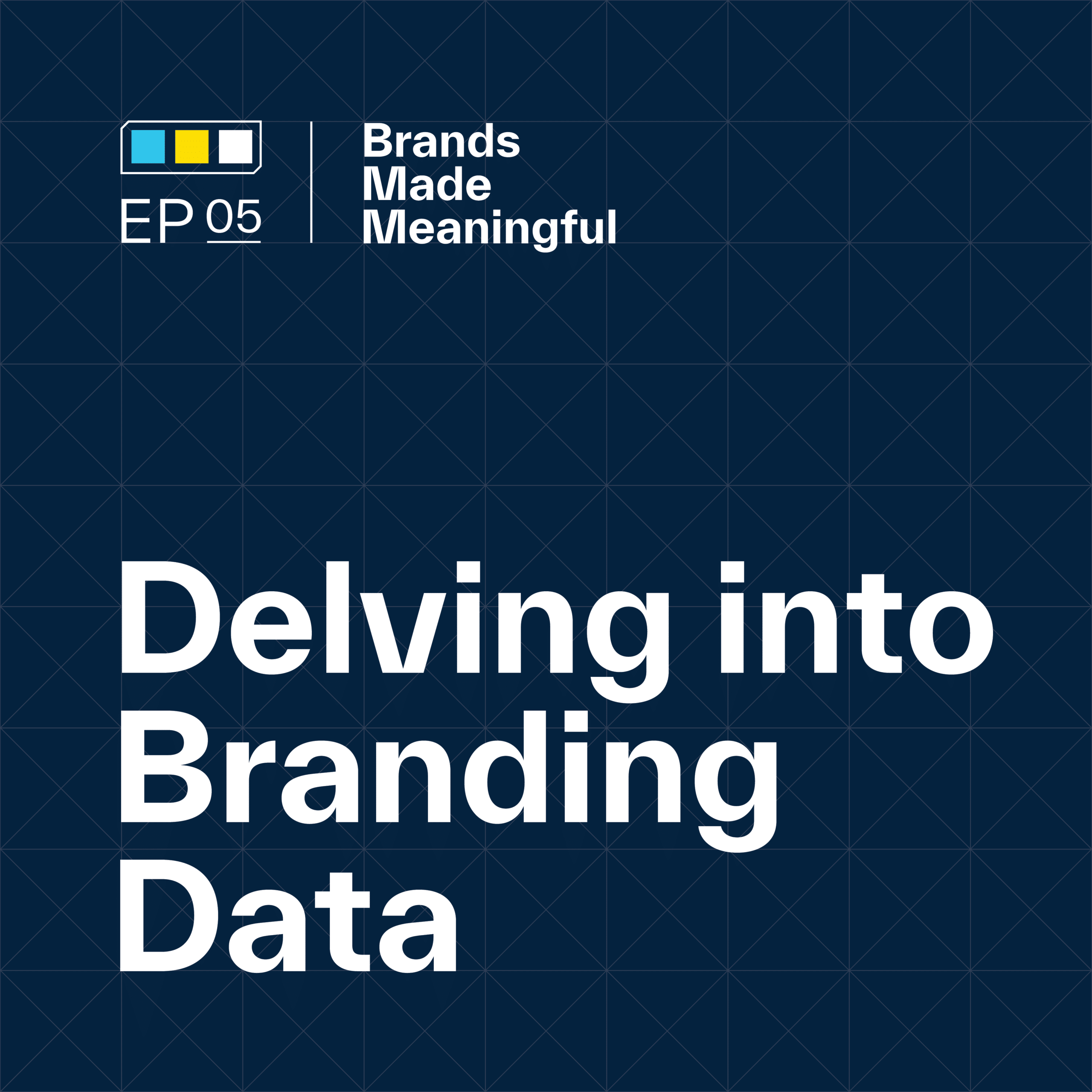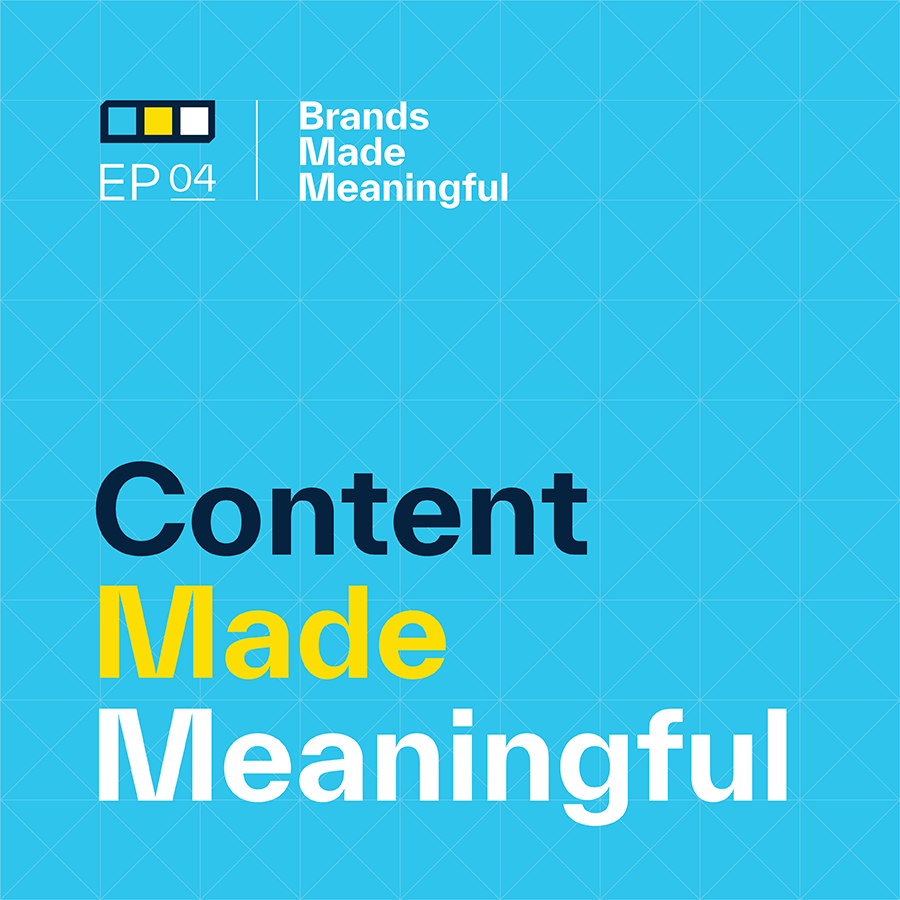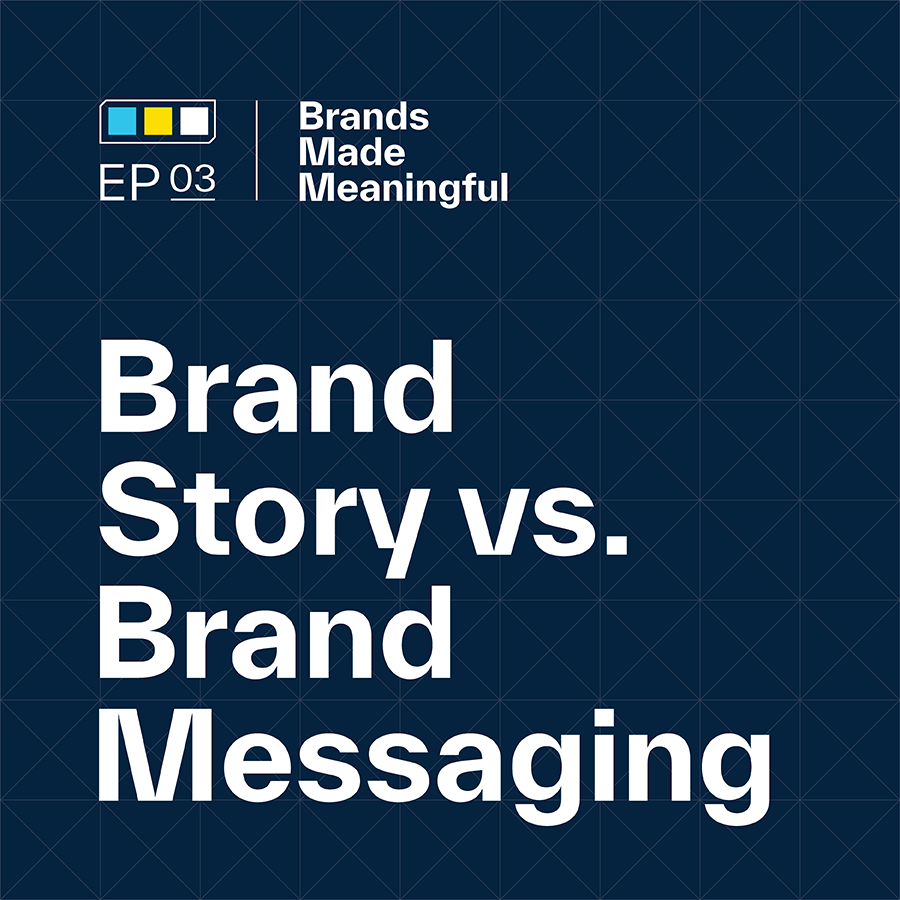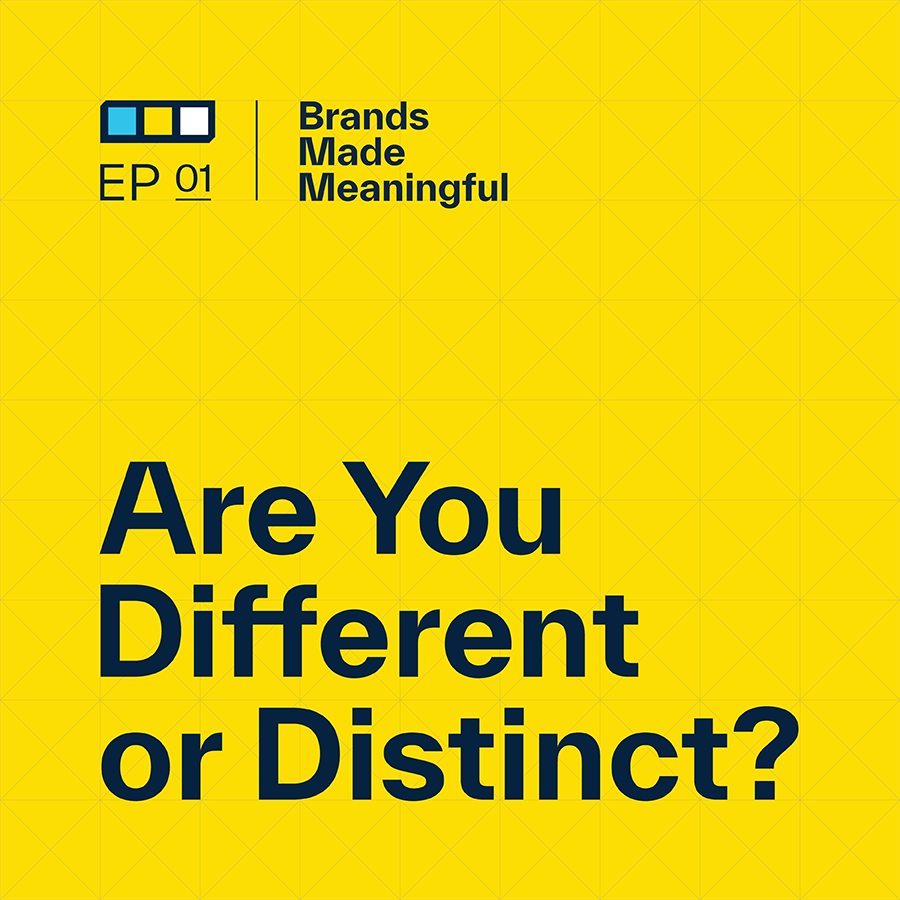EPISODE 28
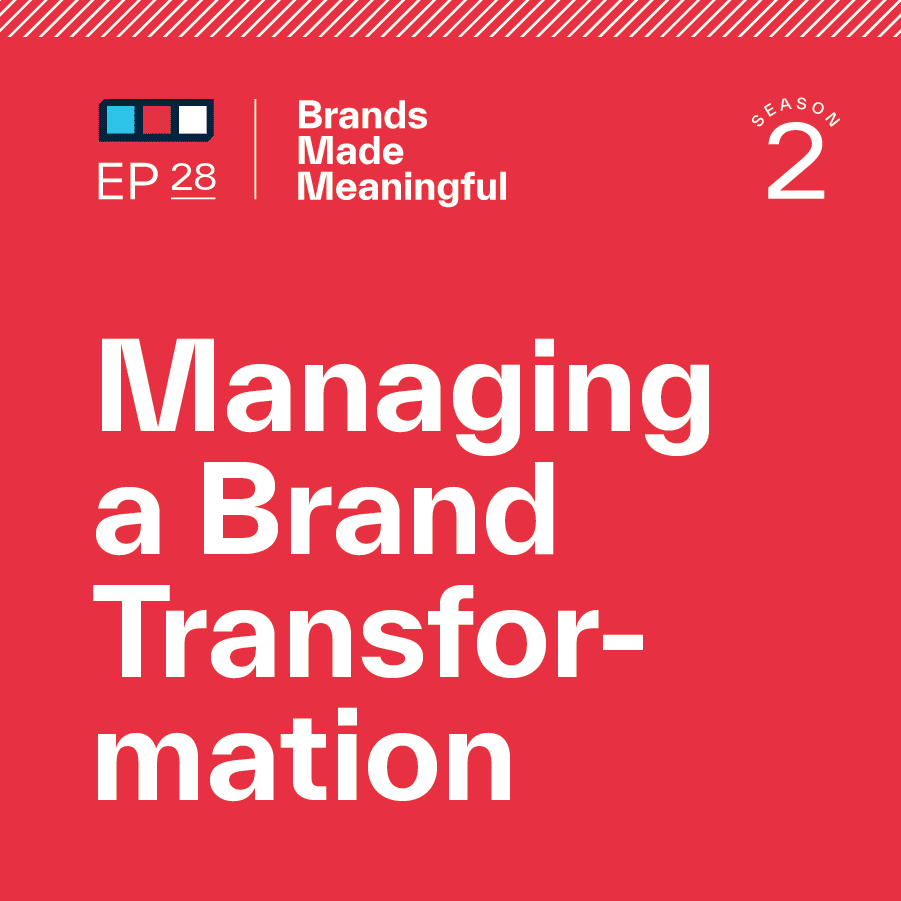
Managing a Brand Transformation
Episode 28
Episode 28 discusses the highlights and challenges of rolling out a new brand, both internally and externally.
EPISODE TRANSCRIPTION
What we’re talking about is the fact that change is hard.
Tucker Absolutely. We’re talking about change management. We’re talking about what I would call the challenge within the challenge. If everything we do is all about creativity and building out new ideas and doing those things, if change management isn’t done properly, all that stuff doesn’t matter.
Expand Full Transcript
Derek It could be incredibly frustrating for a brand, for the organization, for the creative partner that you’ve pulled in to help do this work, to do an incredible amount of work and to do all the right things, and then to have the problem of rolling it out and not being successful in that effort. At least with a company or an organization that we worked with in the past, for our direct contact, I think this was her biggest fear.
Tucker A lot of the people that we work with are challenged with doing that change management internally. So what we want to do is be a resource for them to help them understand what are the best ways we can manage that change and in what ways can we raise people’s expectations in the right way and then frame up the problem in ways that they can agree upon instead of just using their subjective gut feeling every single time? The thing that I think is really interesting with all of this is we do a lot of rebranding, we do a lot of change management. It’s a part of just our big process and it’s kind of baked into what we do. It’s kind of a part of why we do five steps. Well, the first couple of steps kind of help do that change management process. And I think as we go forward and as we move through years and years of doing this, we keep building into that process like, Here’s another step we need to add. A lot of that, from my perspective in the last couple of years, has been to add those steps for change management purposes.
Derek Absolutely. The smarter we’ve become over the years has been in reaction to the way that things went in the past. We’re constantly refining, learning how to bring people in in the right way, to listen to them, and then ultimately to show them that they’ve been heard. And we’ll get into specifically that.
Tucker So let’s go all the way down to the bare bones here. For those who don’t know what change management is, maybe talk a little bit about what we mean by change management and why it matters that we do change management when we’re rebranding or maybe presenting creative or anything like that.
Derek I don’t know necessarily what the psychology behind this is, and maybe we can get a shout-out to our colleague April Seaford over at Sprocket because I think there’s a specific human behavior around change. But the fact is, is that most people, when presented with something new, maybe averse to that change. Just in general. It’s inherent in their DNA. When we’re launching a new brand from scratch, whether that’s a retail brand, a member brand, or a corporate brand, when it’s brand new, we don’t get a lot of pushback. When I say we, I mean the team that we work with. We don’t usually get a lot of pushback from the team or the customers that it gets presented to because they don’t have a previous brand to judge it against. But when we rebrand something, refresh something, now you’ve got a very subjective, visceral reaction to – Will I like that better than what we had, or I don’t like that as well as what we have?
Tucker And there’s this bias that takes over internally to say, I’ve lived with this for 20 years, I grew up with this brand, I don’t like the change. People ask, Well, what do you like the most? What kind of projects do you like the most? I like rebrands the most out of all the projects we do. But for some people here, branding something brand new from the start, not rebranding it, but just launching a brand is the most exciting. It’s also a layup for us. It’s to say we could do anything. We don’t have to worry about people’s past perceptions. We don’t have to worry about making sure that the legacy clients are happy as long as the new client is. So I think, for me, there’s this level of challenge that is put into rebranding that a lot of people, if done poorly, fail. And I think that has another nuanced level of excitement.
Derek People are emotional, they have a point of view. They’re attracted to certain color palettes. They like things or they don’t. You watch the Super Bowl and you laugh at commercials or you don’t. You say, Yep, that was a good one or that one wasn’t. And that’s just the way that people are. Through the process of rebranding somebody, there are so many steps that we’ve implemented that try to put objectives around this. And frankly, I’m not talking about politics. Politicking and trying to convince somebody or sway somebody to your own individual initiative or plan isn’t what I’m necessarily talking about.
Tucker However, we have seen some really good politicking by our clients in the past. Really impressive politicking, actually. We don’t really partake in that because we don’t know as much as they do within their own organization. But it can play a big role when people are trying to make certain changes, to get certain people on your side, or have influencers on your side within your organization.
Derek That’s something that we tend to leave to the client. They know their internal team like we don’t, and we’re trying to keep this and our role and the service that we provide as true and authentic to what we do. But we do play a very big role in change management. And again, coming in as the outside group, coming in as the branding expert, to help shepherd them along and take them through this with the goal of making the launch of the rebrand as accepted as possible and as successful as possible.
Tucker So if you’re going to take the bare bones definition of change management in our context, it’s helping navigate the new creative to be in place. It’s helping navigate people’s expectations, helping navigate what they think. It’s really making sure that something launches successfully even if a handful of people don’t like it. How do we do that?
Derek Pro-tip – There will always be a handful of people that will not like it.
Tucker If you are a designer or a writer or even someone thinking about doing a rebrand and you’re bummed out because someone didn’t like it, then that’s just the nature of what we do. You’re never going to get 100%. And we know that – that’s just impossible. And I think going into it and knowing that makes it a little bit easier for some people to accept. So let’s talk a little bit about why it matters. Why do we do it? Why does it matter? I think we got into it a little bit. But what is the purpose of having really good change management?
Derek We’ve cued up a couple of examples here of worst-case. Why do we do it? Because the worst case scenario is that it’s rejected, that all of the hard work and people’s reactions are so subversive that you end up going right back to the old logo.
Tucker I think worst case scenario, it devalues the brand. What we do as an organization is try to make brands and other organizations more valuable. The perception of them, raise it up, do all these other things. If we do our job poorly, it actually detracts from that. It makes it worse. It brings down the value of their brand. So what we’re trying to avoid is if a failed brand launch or a failed rebrand would really hinder the ability for someone to think highly of your brand. We don’t want you, one – to waste the money on an initiative and then have to go right back to the old one. And you have an example of that. And then, two – we also don’t want you to roll it out and say, No, we’re going to keep it no matter what. But it’s actually not right or everyone hates it so much that they just stop using your brand altogether.
Derek If we go back to the reason why an organization would rebrand in the first place, it’s because there is an opportunity that they have to become bigger, better, and smarter to grow, or there’s a problem that they’re facing, that’s staring them in the face, that their brand can play a part in helping with. And there are probably organizations that will rebrand for purely cosmetic esthetic reasons just because they love the act of recreating the art and looking new and being fresh. But at the core of organizations that are going to invest a substantial amount of time and effort and money into a rebrand, it is for a purpose. It’s not just because we felt like it. So when organizations like The Gap come to mind, the retail store where I bought jeans back in the day. The Gap rebranded ten or 15 years ago. And the pushback was so instantaneous and so vitriol-filled that The Gap reverted to their old logo in less than a week. They basically waved the white flag and said, Oops, and totally bailed on it. And I think there was a story that they put out there in the press that talked about how it was actually just a test and maybe it wasn’t real. But ultimately, it backfired. And it backfired for a variety of reasons. Not the font, not the look, not the creative, maybe not the strategy, but from a change management standpoint, they launched their new brand without telling anybody that it was coming. And even more importantly, why they did it. They didn’t talk about what the meaning was behind what they launched. And without a reason, just having something that’s fresher, more youthful, isn’t necessarily the solution to a sales problem. To just be random and to do something for the sake of being new was how it came across. Even though there might have been a really strong meaning behind it, they never told that story.
Tucker You have a quote here. Maybe it’s your quote, or maybe it’s someone else’s quote. The positioning has to change first and then the logo should change second. And I think that’s a really impactful thing. Every organization that we work with has an opportunity to do something differently. They’re changing not only their look, but they’re changing the way that they do business. They’re changing the way that they interact with people. Maybe they’re changing leadership. They’re changing their internal core principles. Something is changing and so the logo changes to represent that change. The logo is not the leading factor. And all of these components don’t follow the logo change. I think that’s what you’re getting at with this whole Gap conversation.
Derek The quote actually comes from Stephen Moore who wrote an article two or three years ago on a website called Bettermarketing.pub. So a total shout-out to him – I can’t take credit for that quote. And he goes on to say, I think these are his words verbatim, no matter how cool or innovative a new brand concept seems, you need to do that market research first and then act accordingly. So in our process and in this project that we’ve just come off of launching, we spent an incredible amount of time listening and gathering insights. That doesn’t mean that we’re going to do something specifically because of one person’s point of view or opinion within that group of people. But it’s really important for them to have an opportunity to be heard and to be listened to.
Tucker I think that when you look at full data sets and you look at all these other things, market research or consumer research can feel like this really big cloudy space. But if you look back at some of the projects where we’ve found the most success, it’s by just doing a handful of one-on-one interviews, talking to a handful of prospectives, either prospective clients or prospective employees, or actual current clients or current employees, and just having a conversation with them can give you that market “research” that is really going to help you understand what you wish the perception is moving forward. And I think that helps us when we do our process, not only manage that change by communicating things back to people like, Hey, here’s what we heard, but it also helps us, in general, to say we know what we’re doing and what you told us, client, is true because we’ve heard it from other people and we don’t just take your word for 100% value.
Derek There’s the adage in giving a presentation or in writing a book that first you tell them what you’re going to tell them. Then you tell them what you told them. And that’s an oversimplified way of describing the process because there are lots of components that go into these. But what we don’t do – what branding agencies don’t do, or shouldn’t do, is go away for weeks or months and then just come back and say, Here it is.
Tucker Bask in the glory of what we’ve just shown you.
Derek Yeah, look at me. I’m standing up on a podium and what we did is great. And you’re welcome.
Tucker And I don’t know how many agencies still do that anymore. I don’t think it’s as popular as it used to be. But I do know that that’s how some people like to walk the earth. That’s just how some people do it. They’re like, I’m just going to build this and you’re going to enjoy it after I’m done. I think our approach is we don’t know everything, so let’s agree upon the things we do know. We’ll show you the insights that we found. Let’s agree upon those insights and pull the ones that we all think are right. And then let’s go and establish a visual direction and let’s all agree upon that visual direction and we’ll explain how we got there. And then we’ll go design something and we’ll come back and we’ll see what fits and what doesn’t fit within that story we’re trying to tell.
Derek So this conversation is super topical for us because, as I mentioned, we’ve just launched or helped an organization that we’ve rebranded with them. We’ve just launched that live to their entire organization. And so far, knock on wood, seemingly it’s coming across really, really well. The change has been welcomed. And so because this is so top of mind, let’s just walk through, without getting into a how-to conversation, but just shout out some of the highlights of the things that happened along the way that directly, positively played a role in helping the change management be as successful as it could be.
Tucker So you’re saying, How do we get that? How do we get the change management and what tactics do we put in place that actually start moving that wheel forward?
Derek You just said the first one.
Tucker The first one is absolutely making research a part of your process. If you’re not doing research, you’re missing out on a lot of things. Like, one, you’re not gathering the insights you need to actually do proper creative. But, two, that’s a really big change management opportunity to then communicate back. So for this organization that you’re talking to, we actually did two types of research. We did qualitative, which was one-on-one interviews where we interviewed 30 people within the organization. And then what we did is distilled all those notes into our top ten or 12 insights that we pulled from those conversations and then showed that to leadership to say, Hey, here’s what we heard. Here are the things that we think are important. Do you agree or do you disagree?
Derek And some of the leadership assumed those points, those highlights, or even knew them and it validated what they already thought and other ones were total surprises to them.
Tucker And I think for leadership to validate your thinking is really valuable to them. To say, Okay, not only did I know that, but now I have a finger on the pulse. I understand that my gut reaction is pretty close to what it is, and that gives them a little bit more confidence moving into different decision-making. The second type of research that we did with them specifically was a quantitative research study, which wasn’t really a study. It was more just like a survey to their general organization to ask them a bunch of questions like, How do you perceive this? What do you like about this? What do you not like about this? How do you use this? It wasn’t all about just the brand. It wasn’t just about the visuals. It was really about, What ways do you want us to be perceived? In what ways do you currently use us to help yourself have conversations with people outside the organization? It’s a large set. The client also used this opportunity to ask questions that help them in other forms. They were asking questions about facilities and asking questions about the usage of specific materials. This survey could actually be used in more than one way and that could really help them in the future. But what happened was we pulled those results and then communicated those results back to the people who did it. So it’s to say, Here’s what we heard. Here’s a general understanding. And then sending it right back and say, Here’s what everyone said. Not specific answers, obviously, but just like the overall, What did we hear from these specific questions? That really helps them get an understanding. We’re really trying to get everyone’s opinion. We’re trying to get people’s perspective on what the problem is, what the challenges are, and how can we best face that. And I think that gives people the confidence to say these guys are really trying here to understand us before they start reimagining what we look like and what we sound like.
Derek So instead of just jumping into the creative component, even with those insights, because there were some really inspiring conversations and specific references and components that came out of those conversations and the surveys, that actually did ultimately affect the creative work that we did. But more importantly, what it helped us do was to set objectives and criteria expectations for the entire initiative.
Tucker And when we set objectives, we set objectives at the very beginning. Then we go research against those objectives and then we reset the objectives after the research. So there’s this level of what we’re trying to go solve. Let’s figure out if that’s the right thing to solve and then relook at those objectives and say, Is there anything we need to add or change? We say keep, kill, combined. How do we understand these most important objectives within this project? And then we get into the creative. So there’s a lot that goes into the pre or the ramp up or our discovery and research phase that really helps us be super objective with our objectives. It’s not like a subjective thing. We’re not coming in and going, I don’t like the way that looks. I want to change it. It’s to say, We know there’s a visual problem here. Let’s confirm that problem. And then when we go back, it’s, Oh, that’s the problem. But here’s why it’s a problem. And if we can get that why, then that helps us better understand the ways that it needs to be communicated back to help that change management as we roll it out. so I think that there are levels of this that then go into what happens with the creative. So going back to you, Derek, when we’d say, Okay, we have the objectives, we’ve done the research, we’ve re-analyzed the objectives, but what about from a creative standpoint? How do we do some managing of change when it comes to rolling out creative to people?
Derek First of all, we do it in stages. I mentioned this before. To be successful we don’t surprise somebody. I think there was a time, early in my career, when unveiling something that somebody had never seen before was super exciting. But without establishing the objectives along the way, the response is only going to be subjective. I like it or I don’t. And it’s really hard to overcome, even if what we presented was maybe strategically on and met the objectives of the project. It was really hard to overcome that initial kind of subjective feedback and reaction. So we present them with the insights. We present them with visual research. We present them with competitive and comparative organizations and what’s going on within this landscape so we can start to, along with a few other steps, set expectations for where this could go, what it could be, what this could look like, and how that will ultimately start to create a narrative around what this brand is all about. I’m getting into the weeds here, but when we set out to do a project and the ultimate objective is to reimagine the identity so that the business can grow the value of the organization, that’s pretty baseline.
Tucker Otherwise, why are we doing it?
Derek Why are we doing it? But for us to do that effectively, we need to convey who you are as an organization. And we don’t know you. We don’t live in your walls. So we have to take the time to learn that. And in learning that and doing everything that you just said, it becomes so much more interesting to then, when you present creative concepts and a story, to say, with our creative tools and abilities, this is what we heard. This is what can represent who you are.
Tucker The best way for me to explain from a creative side how we do some change management is our first round of creative is not four concept slides. It’s not, Okay, here we go. Here’s concept one, here’s concept two, here’s concept three. What we do is we go through all of our objectives, all of the insights we’re using, our visual direction, and all of these other things. There’s a good hefty amount of that presentation that doesn’t even go over the concepts yet because we’re so tuned into it. Remember, this is what we heard. Remember, this is how we got here. And then we get into the concepts and we do that with everyone that we talked to. So when we get to a final logo or a final creative or final identity system altogether, instead of just saying, Hey, organization, here it is, here’s everything. The leadership signed off on it. You’re welcome. See you later. We do the whole setup. We don’t just say, Here it is, here’s your logo, here are your colors, here’s your typography. We go, here’s what we heard from everyone. Here’s our visual direction. Here’s why we’re doing that. Here is the story that we are going to tell, and this is why we’re going to tell that story. Here are the visuals that we think tell that story best and here’s how we got there and why we think it tells the story the best. So there’s a lot of explanation that goes into it. We don’t do that explanation because we just love hearing ourselves talk. We do that because it really helps people understand the way we get there. And I think we’ll get into a little bit more examples as we go. But one of the organizations that we’ve worked with recently was a golf club down in Florida called Lemon Bay Golf Club. Great people, amazing project, and really fun to do it. And when we’re rolling this out for them, it was to have a group, a brand committee that helped us work through all the brand stuff. Then once we did there, we went to the board, and then once we went there, we went to their staff, their core staff base. We kind of rolled it out in stages to say, Is there anything we’re going to hear? If we hear anything, we need to understand if they are good, bad, or indifferent. I remember super vividly that when we rolled out the current brand to the director, we explained everything. He had actually seen it the night before and he had said, I didn’t like it. I didn’t like it at all. I didn’t like anything about it. But then after I sat in this hourlong meeting with you guys and you explained how you got there and why it matters and how it does the things that we need it to do, he said Now I’m all in. Now I get it. He might not like it from his subjective stylistic preferences, but he understands why we’re doing it and why this is the right solution. And to me that was validation. That was 100% validation to say, Okay, well then our process 100% works. And it’s not the first time we’ve done that. I think we worked with a brand called Game One. We rolled them out a little over a year ago now, and that process was a really long process. We did the core committee for their brand and then we rolled it out to their high leadership team and then we rolled it out to groups of employees, ten employees at a time, and said, Hey, here it is, here’s the story, here’s how we’re doing that. It’s almost to understand if we are seeing any soft spots. Are we seeing any problems? Are there any weaknesses that we can start shaping up before we roll it out to the 700-person company? Let’s at least ask 100 people in small batches to see if we find anything. And for us, that really helps do two things. One, we do that soft spot analysis. Are there any blind spots? Are we not seeing something? Two, those people become evangelists of this brand. Those people become influencers. They become the people in the break room that start talking about it, like, Hey, did you see that? And someone goes, Oh, I didn’t really like it. And they’d be like, Well, did you see this though? Or did you talk about that? And I think for us it’s finding those types of people and really understanding what makes them tick and giving them the ammunition to fight for your brand internally.
Derek When people feel included in the process and they feel like they have a voice and that they’ve had the opportunity to share their point of view and what it is that they think will ultimately help this organization be successful, they’re way more apt to come alongside the ultimate solution and get on board. We’ll tell them. We’ll show them specifically in the words and in the creative how something that specific person said and that sentiment turned into helping them share what they look like. To listen to them and actually repeat back from time to time in all of those iterations, quotes, comments, and points that they made, then we can show them how those points were validated and actually manifested themselves in the ultimate creative.
Tucker And we’ve done this a ton of times. I’ve never heard someone come back to that echoing of something and go, I still don’t like it. That’s never happened because they understand that this isn’t about if you specifically like it or not, it’s if it’s right.
Derek And what we’ve also learned over the years is we don’t ask somebody, Do you like it? If we’re going to make this as objective as possible, even though it is a subjective process, instead of asking, Do you like it, we would rather ask, Does this meet the objectives and the criteria that we agreed upon?
Tucker So for some people, it’s to say, Is it better than what we currently have? And one of our clients would say, Would you endorse it? Would you say that this is a good solution, whereas you can’t come up with anything better like this is the right thing for us? And then she would ask, Do you wear it? Would you wear it? Would you put this on your shirt? Would you be willing to wear it out in public? And if someone asked you about it, you wouldn’t necessarily hide it and cover it up and say, No, no, no, that’s nothing. That’s nothing. You’d say, Oh, I work for this company or I belong to this organization, and that helps you tell that story in a better way. And most of the people would come back and go, Okay, I get where you’re coming from. The whole challenge with change management is to get people to think outside their own perspective, to just start thinking a little bit bigger about the problem and if this is a solution to that problem or not. And if it’s not, then why? And I think that we’ve done a really great job, not to pat ourselves on the back too much, but to say we’ve done a great job. When someone does say, I don’t think this actually solves that objective, then I’m all ears. It’s, Tell us what we can do. And that’s where we find these weak points. Let’s find those soft spots. Let’s change what needs to be changed to actually solve the problem. It doesn’t happen very often that they say that, but I think that that helps them feel like we’re not this creative consultant coming in and telling them what needs to happen. They are a partner with us on this and we’re just bringing our expertise to the table.
Derek Exactly. So we’ve done a little bit of research. What’s realistic, at least from the companies and organizations we have worked with? If we survey a group of people after rolling something out, what do we consider a success? When I said earlier that you’re never going to get everybody on board, that’s really, really hard. It’s not impossible, but it’s really hard. What’s a win?
Tucker Well, a win is over 50%. I would say 65% is a good rating of approval, especially for large organizations. Generally, the bigger your organization is, the percentage is probably going to be a little bit lower. It’s just a matter of how passionate your organization is. But I would say 65% is that percentage that we shoot for when we do validation surveys to say, Is this right? How do you feel about this? Does it solve the problems? Is it better than what we have? 65% would be that benchmark to say, Yep, we did a good job.
Derek I like to shoot for 70. But regardless of the number, it puts into context when you go into this, it sets real realistic expectations for the organization that’s going into this rebrand to have a number like 65 or 70%. It takes a little bit of the stress off of somebody who’s going into it thinking that they’re going to need 100% and then be disappointed or feel like the project’s not successful because it doesn’t crush that. McDavid, when we helped them through their rebrand, their customer base responded with a 70% approval rating. 70% of them said it did a really good job of representing the desired perception that McDavid wanted and their retail partners, 100% of them.
Tucker I think you’ll see that a lot that we generally get a higher approval rating from employees, I would say, because they’re so passionate about it and they love the change. They love doing those things. I think long-term clients can sometimes be a little tricky because they’re used to the same thing. Change is super hard for a lot of people. So if you’re used to something for two decades or three decades, I think it becomes more and more difficult. If you think about that golf club that we’re talking about down in Florida, some of these members have been with that organization for 20, 30 years. It’s hard for them to see something change.
Derek And for Game One, we helped them take eight different brands and combine them into one. So we had eight different groups of people that had been affiliated, worked for, maybe even owned or been presidents of an organization that had carried a brand for 30 years. One of the people we talked to said, I have to replace my entire wardrobe because everything that I wear – our hoodies and zippies and t-shirts – have this logo on it. This is a big change.
Tucker We should do a whole case study conversation around that project. But that project had actually been a part of a failed change management experience beforehand. They had tried to change their brand, their name, and all those other things. They didn’t do the proper research, they didn’t do those things and it failed. It failed miserably for them to then go back. They said, Nope, we can’t do that, never mind. Then everyone in the organization became a little gun shy, a little like, Oh, well, I don’t know. Is this one going to be good? Because the last one we tried didn’t work at all. And I think that that points to you only having a certain amount of opportunities to do this stuff right. And so if you waste the opportunity by just assuming everyone’s perspective and assuming that everyone’s going to like it and just rolling it out and say, Hey, don’t care what you think, but this is great, so enjoy it. That’s a really, really dangerous way to spend your money, especially using creative time like that.
Derek All three of these brands that we’ve mentioned, Lemon Bay, Game One, and McDavid, did a really great job explaining along the way to partners, members, the board, key voices, and to key participants. All of them did a really great job of keeping those groups included and continuing to explain why over and over. This is what this means. This is what this represents. This is why we’re doing it. And what all three of those organizations did that I believed was sort of the punctuation of the entire initiative is they celebrated together.
Tucker That’s a huge part of it to say, This is a big opportunity for our organization. This is a big deal. Let’s have a release party, let’s have a launch party, let’s do something. And we just came back from one that was really exciting and the energy was high. The people were really enjoying the Hey, here’s what’s new. Here’s some new swag with that. Here’s what this all means. We hope that you guys appreciate it because we’re really excited about the future. I think it gets people energized about it. Releasing something in a quiet fashion is great sometimes. I totally understand that. But if you have the opportunity to really celebrate a change, that gets a lot of people behind you and really excited about it too.
Derek Launching a brand is one step in the whole process. The whole next step is now activating it, amplifying it, and rolling it out. But when you launch it successfully, there’s an incredible wave of momentum that makes that whole next phase not only easier but enjoyable as hell.
Tucker Absolutely. I think that change management is such an impactful thing not only for us but our clients. And I think as we move forward with clients, when they understand their role here, it’s not to just be the point of contact, but it’s to really implement that change management across the organization. I think that’s when you find a lot of really great success. They know their role. They’re not coming in and just saying, Oh, well, my job is to give you a point of contact in a way to give you subjective results. It’s like, Nope, my job here is to make sure that this goes smoothly and that can be done in a million ways.
Derek So if you’re taking on a large initiative, good luck. Hopefully, we’ve shared a couple of things that you can think about along that process that will make your change successful.
Tucker And if you ever talk to anybody in your organization who says, How do you draw that stick or I wish you luck, that’s going to be really hard. Don’t listen to them. It’s not that hard. Just listen to people, and understand that every perspective matters because someone’s going to tell you something that’s really valuable that you did not expect. So just keep your eyes and ears open and you’ll be good.
Derek Until next time.
Tucker I’ll talk to you later.
Derek Sussner is a branding firm specializing in helping companies make a meaningful mark, guiding marketing leaders who are working to make their brand communicate better, stand out and engage audiences to grow their business. For more on Sussner, visit Sussner.com.
More Episodes Like This
Reclaiming Reputation Through Brand RevitalizationEpisode 85
Derek and Tucker discuss the potential that a branding initiative can have to restore a club’s reputation.
Branding The Club with Don KovacovichEpisode 84
Don Kovacovich, GM of The Club at Golden Valley, joins Derek & Tucker to discuss the impact that rebranding has had on his club and the opportunity it presents for other clubs
Changing a Club’s Membership ModelEpisode 83
Derek and Tucker discuss key considerations and challenges when changing your club’s membership model.
Connecting a Club with its Story with Jackie CarpenterEpisode 82
Derek and Tucker are joined today by Jackie Carpenter, author of People First.
Branding a Club AnniversaryEpisode 81
Derek and Tucker discuss the unique opportunity presented by milestone and anniversary dates for private clubs.
Private Club Storytelling with Ricky L. Potts, Jr., CCMEpisode 80
Derek and Tucker have the pleasure to speak with Ricky L. Potts Jr. about how powerful storytelling can be for your club members.
Opportunity in Club Facility RenovationEpisode 79
Derek and Tucker discuss pivotal key moments in your legacy and how to transform your story through renovation.
The Evolution of Club Members with Jon LastEpisode 78
Derek and Tucker are joined by Jon Last from Sports & Leisure Research Group to discuss the evolution of club members.
Member Branding vs. Product BrandingEpisode 77
Derek and Tucker discuss the challenges their client's have moved through when approaching differing styles of branding.
The Role of a Private Club's LogoEpisode 76
Derek and Tucker take a look back on private club logos they've designed over the years and explain the strategic reasons behind their choices.
Club Brand GovernanceEpisode 75
Derek and Tucker divulge the steps to evolving your brand while retaining your core values.
Seasonal Member MerchandiseEpisode 74
Derek and Tucker take a look at crafting specific merch to celebrate landmarks and special times of the year.
Who is Sussner?Episode 73
Derek and Tucker take a break from talking shop to talk about who they are and what they stand for.
Club Identities Beyond AmenitiesEpisode 72
Derek and Tucker discuss what it takes to stand out in unique ways for your club.
Little Things Mean EverythingEpisode 71
Derek and Tucker take a look at the often missed and easy to overlook.
Build Flexible Brand SystemsEpisode 70
Derek and Tucker break down the building blocks for long lasting branding.
The Club at Golden ValleyEpisode 69
Derek and Tucker take a close look at one of their recent rebrands.
When to Launch a Club RebrandEpisode 68
Derek and Tucker break down how to find the perfect timing when launching a club rebrand.
Steps to Launching a Club RebrandEpisode 67
Derek and Tucker break down the steps to take and the reasons why you should consider a club rebranding.
Brand Marketing vs. Brand DesignEpisode 66
Derek and Tucker define the line between marketing and design and how they intersect to inform one another.
Building Brand GuidelinesEpisode 65
Derek and Tucker show us how to build infrastructure guidelines to unify your brand experience across the board.
Club Identity SystemsEpisode 64
Derek and Tucker cover what Identity Systems entail and how to discern between internal and external methodologies.
Navigating Branding With a BoardEpisode 63
Derek and Tucker bring clarity to uniting your company under one cohesive vision.
Putting a Committee TogetherEpisode 62
Derek and Tucker assemble your need-to-know facts when putting together your committee.
The Guiding Principles of Private ClubsEpisode 61
Derek and Tucker go over the top ways private clubs can find the balance between pleasing old members while attracting new ones, all while making moves towards the future.
How Color Affects PerceptionEpisode 60
Derek and Tucker cover how to best convey your business with color.
Brand EcosystemsEpisode 59
Derek and Tucker break down how to craft effortless experiences when considering your brand as a whole.
6 Types of Brand TransformationEpisode 58
Derek and Tucker dive into 6 distinct types of transformations for a wide range of brands.
Tournament Branding For ClubsEpisode 57
Derek and Tucker discuss designing and delighting your club members with tailored events.
Brand Promoters & DetractorsEpisode 56
Derek and Tucker discuss how high level promoters increase your NPS and how to turn the tides on your detractors.
The Loudest Voices in the RoomEpisode 55
Derek and Tucker talk about gathering feedback while prioritizing every voice.
Determining A Primary AudienceEpisode 54
Derek and Tucker discuss if and when you should be honing in on your audience vs. casting as wide a net as possible.
Branding For ExclusivityEpisode 53
Derek and Tucker discuss the intricate process of naming your brand.
Measuring Brand SuccessEpisode 52
Derek and Tucker discuss how we measure our success in branding and a few key KPIs that help us understand our impact.
Branding For ExclusivityEpisode 51
Derek and Tucker breakdown how brands can create the perception that they are exclusive and only for a certain type of consumer.
What Makes A Brand SurprisingEpisode 50
Derek and Tucker break down the Sussner formula that we believe leads to a surprising brand.
Breathe Life Into Brand TraditionEpisode 49
Derek and Tucker discuss the intricacies and common pitfalls of branding for Private Golf Clubs.
They Key of Visual DifferentiationEpisode 48
Derek and Tucker break down the importance of differentiating your brand on a visual level.
Branding For Private GolfEpisode 47
Derek and Tucker discuss the intricacies and common pitfalls of branding for Private Golf Clubs.
Dealing With An Identity CrisisEpisode 46
Derek and Tucker breakdown how to identify and remedy a brand's identity crisis throughout thoughtful and intentional brand management.
Branding vs MarketingEpisode 45
Derek and Tucker discuss the differences between Branding and Marketing and how to make the two compliment each other.
Build Your Brand's FoundationEpisode 44
A brand's foundation is a critical element in being successful in the long-term.
Building a Constructive Branding ProcessEpisode 43
Derek and Tucker break down the steps required to build the most constructive and meaningful branding process.
What Makes a Brand Relevant?Episode 42
Relevance is a key piece of a brand's identity for creating clarity and connection.
Your Right to WinEpisode 41
Derek and Tucker discuss the “Right to Win” and the odds of your brand's success within your target market.
An Intro to Sub BrandingEpisode 40
Derek and Tucker discuss the nuances of developing sub-branding and strategies.
Conquer Branding FearsEpisode 39
Derek and Tucker dive into how to overcome the fear of change and the nature of constant refinement of your brand.
Balancing Strategy & DesignEpisode 38
Great strategy is a necessary foundation for great design—and great design brings great strategy to life.
Branding PrioritiesEpisode 37
Branding priorities are the actions and initiatives that shape or enhance a brand's identity, perception, and market position.
Invest in Your BrandEpisode 36
Investing in your brand benefits your company as a competitor in the marketplace, builds trust with customers, increases perception of quality, and drives employee engagement.
Why is Positioning Scary?Episode 35
Narrowing the brand's position is really a strategic decision to focus the brand's offerings, messaging and target audience on a specific niche or segment within the market.
What Are Brand Consultants?Episode 34
Derek and Tucker discuss the importance of hiring expertise with a wider breadth of knowledge than just visuals.
Hire for Brand FitEpisode 33
Hiring people that fit your brand is key in order to maintain brand authenticity, positive culture, and consistent messaging.
Your Brand’s Stance MattersEpisode 32
Your stance can help define your brand from a core level and make branding, hiring, and marketing not only easier, but more meaningful.
Levels of Executing a Brand RefreshEpisode 31
If you have a brand strategy in place, how do you execute it?
The Role of Features & BenefitsEpisode 30
Derek and Tucker discuss the importance of features and benefits within the context of branding, selling, and marketing your products and services.
Should You Listen To or Lead Your Customers?Episode 29
Within the challenge of any rebrand is the challenge of managing customers' perception of change.
Managing a Brand TransformationEpisode 28
Episode 28 discusses the highlights and challenges of rolling out a new brand, both internally and externally.
Living Your BrandEpisode 27
Your brand is not this shiny trophy on the shelf. It is something that you are molding every single day.
What Makes a Brand Authentic?Episode 26
Season 2 starts off with a discussion about building authentic brand experiences, both internally and externally.
Reviewing your Competition's CreativeEpisode 25
Derek and Tucker discuss the process of reviewing your competitors' creative strategy to better position your brand within the market.
Interviewing your Audience for InsightsEpisode 24
This episode details the process and benefits of interviewing your audience as part of the branding process.
Assumption ReversalEpisode 23
Derek and Tucker discuss how we change our thoughts and get into a different mindset to refine and revise our branding.
Developing vs. Amplifying a BrandEpisode 22
Another way to say it is, development is building and crafting your brand story, and amplification is then telling it.
Refreshing a Sporting Goods BrandEpisode 21
This episode shares the steps behind Sussner’s work in refining the Shock Doctor brand.
Defining PerceptionEpisode 20
Derek and Tucker discuss the positive and negative impacts of brand perception.
What is a Brand?Episode 19
Derek and Tucker discuss what defines a brand and what makes them successful.
Branding Golf Courses vs Golf ClubsEpisode 18
Derek and Tucker further hone in on golf course design.
Refreshing a Golf CourseEpisode 17
Derek and Tucker discuss the bar for golf course design – and how to push past it.
Let’s Talk Taglines Episode 16
Derek and Tucker talk taglines in today's episode.
Refreshing an Athletic DepartmentEpisode 15
Derek and Tucker sit down today to discuss what logos mean within branding.
Branding a Club Episode 14
Derek and Tucker discuss how to brainstorm branding a club.
An Intro to Internal Branding Episode 13
Derek and Tucker discuss the power behind internal branding.
The Value of Stereotyping Episode 12
Derek and Tucker sit down today to discuss the meaning of stereotyping within the branding world.
We’re on a Mission Episode 11
This episode digs into the rallying cry for the greatness your team is going to accomplish.
Aren’t Brands Just Logos? Episode 10
Derek and Tucker sit down today to discuss what logos mean within branding.
The Business You Are Really In Episode 09
Derek and Tucker sit down today to discuss how to discover what business you are really in to better understand your mission statement.
Clarity of Vision Episode 08
Derek and Tucker discuss the importance of looking ahead towards the big picture to better hone the purpose behind what we do in the now.
Branding B-2-B Environments Episode 07
Derek and Tucker discuss the Branding of Spaces.
It’s All in the Name Episode 06
Derek and Tucker discuss what a name can say - and not - about your company.
Delving Into Branding Data Episode 05
Derek and Tucker jump into the discovery phase of branding before it hits the drawing board.
Content Made Meaningful Episode 04
Today Derek and Tucker discuss the concepts within content and its common misconceptions such as the phrase "Content is King."
Brand Story vs. Brand Messaging Episode 03
Your story matters.
Visuals That Take The Cake Episode 02
Derek and Tucker sit down to discuss visual impact and what that could mean for your brand.
Are You Different or Distinct? Episode 01
It's not about being the only option, it's about being the right option. Join Derek and Tucker as they discuss Differentiation & Distinction.



